
SAVE 56%
$1475 value for $650
featuring:
PEEL (200:1)
SPICE (200:1)

PRE FAST
1-2 tsp
- Aldosterone Downregulator
per gallon of water. 1-2 gallons of water a day for 2-4 days before fast to downregulate aldosterone.
Mix:
1/4 tsp
- Nebula
- Thermo
- ACB
- Autophagy
- Senolytic
- ANTI-ADIPOGENIC
- Peel 200:1
- Spice 200:1
- TRINITY
- GLUCOSE BLOCKER
- SPACEBORN
1/2 tsp
- Shilajit
1 tsp
- MatchA
all together and take in equally divided doses every 4 hours in 1-4 oz of black coffee
1/8 tsp
- PURGE
every 2-6 hours as needed
*Be sure to click on links below to read scientific studies on the benefits of each ingredient.

FORMULA III “TRINITY” 200:1 CONCENTRATION
THE ULTIMATE FASTING COMPANION
MIND BODY SPIRIT HARMONIZER AND PURIFIER
COMPLETELY ELIMINATES ANXIETY AND DEPRESSION IN 7 DAYS OR LESS.
Wake up in the morning, take on an empty stomach and fly!
INGREDIENTS
- Anti-cancer and tumor suppressive activity
- Anti-genotoxicity activities
- Immune System Enhancer (anti-bacterial and anti-viral)
- Cytokine induction
- Lymphocyte activation
- Antimicrobial activity
- Anti-allergy effect
- Normalizes liver function

Albizzia Julibrissin Bark (He Huan Pi)
- Anti-tumor effects
- Antioxidant activity
- Anti-depressant like effects
- Invigorate the circulation of blood
- Anxiolytic (reduces anxiety)
- Anti-inflammatory
- Anti-angiogenic effects
- Neuroprotective effect
- Learning and memory enhancing activity
- Anti-depressant activity
- Anti-obesity effects
American Ginseng Root (Panax quinquefolius)
- Blood glucose–lowering action
- Robust working memory enhancement
- Anti-obesity effects
- Nephroprotective Effects
- Reduces fatty liver, dyslipidemia, and other complications of metabolic syndrome
- Beneficial effect of ginseng on cardiac pathology
- Anti-inflammatory effects
- Improves arterial stiffness and attenuates systolic blood pressure
- Improve cancer related fatigue
- Anti-diabetic effects
Ashwaganda (withania somnifera)
- Antistressor effects
- Antioxidant effects
- Anti-inflammatory Properties
- Antitumor Properties
- Immunomodulatory Properties
- Hemopoetic effects
- Rejuvenating effects
- Cognition-enhancing and memory-improving effects
- Stimulates thyroidal activity and promotes hepatic antioxidant activity
- Neuroprotective effects
- Cardioprotective effects
- Anxiolytic-antidepressant activity
- Reverses Alzheimer’s pathology by enhancing low-density lipoprotein receptor-related protein in liver
- Anti-tumor effects
- Immunomodulating and immunorestorative effects
- Beneficial effects on insulin resistance and hyperglycemia
- Cardioprotection
- Significantly induces nitric oxide (NO) production
- Lowers blood pressure
- Antioxidant and anti-diabetes effects
- Increased motility of sperm
- Renal protective effect
- AMPK Activator
- Anti-aging effect
- mTOR inhibiting effect
Atractylodes Root (Atractylodes macrocephala Koidz)
- Insulin mimetic activity / AMPK activation
- Anti-cancer effect–cell cycle arrest and apoptosis via inhibition of PI3K/Akt/mTOR signaling pathway
- Anti-diabetic effect
- Anti-inflammatory activity
- Neuroprotective activity
- Hypoglycemic / Anti-diabetic effects
- Metabolism enhancing effects
- Antiproliferative, antimicrobial and antioxidant activities
- Contains ecdysterone and turkesterone which both have very high anabolic activities
- Increases Notch and Wnt signaling which may provide a protective effect and maintain the integrity of aged skeletal muscle.
- Prevent age related muscle wasting (Sarcopenia)
- Immunomodulating and antistress activity
- Increased protein synthesis
- Positive effects on learning and memory.
- Free radical scavenging capacity and protective effect
- Significant antidepressant activity in learned helplessness models of depression
- Potent adaptogenic activity
- Anxiolytic (anti-anxiety) activity
- Anti-inflammatory activity
- Prevents from aluminum neurotoxicity
- Neuroprotective effects in Alzheimer’s and dementia
- Anti-Parkinson’s effects
- Anti-viral effects
- Antioxidant activities
- Increases vitality, combats nervous asthenia
- Potent protecting effects against hydroperoxide-induced cytotoxicity
- Cytoprotective effects on Rotenone-induced apoptosis in human neuroblastomas SH-SY5Y cells.
- Antidepressant-like effects: evidence for dopaminergic-mediated mechanisms
- Neuroprotective effects
- Antinociceptive effects (Reduced sensitivity to pain)
- Increases hippocampal cell proliferation
- Memory enhancing effects
Ceylon Cinnamon Bark (Cinnamomum zeylanicum)
- Lowered blood glucose, reduces food intake, and reduces atherogenic LDL cholesterol.
- Accelerated wound healing effects
- Antimicrobial activity
- Antioxidant activity and scavenging effects
- Ameliorative Effect upon Early Stage Diabetic Nephropathy
- Anti-diabetic effect via i) upregulation of mitochondrial UCP-1, and ii) enhanced translocation of GLUT4 in the muscle and adipose tissues.
- AMPK activator
- Significant changes in body weight loss and fasting blood glucose levels
- Antileukemic activity
- Hepatoprotective and antioxidant activity
- Anti-hyperglycemic and hypolipidemic effects
- Telomerase activity and anti-aging effects
- Antidepressant and Cognitive Improvement Activities
- Protective effects in dopaminergic neurons
- Hepatoprotective effects
- Vasorelaxant activity
- Improved glucose tolerance
- Neuroprotective, immunomodulatory, anti-oxidative, kidney impotence, laxative, anti-inflammatory, hepatoprotective, anti-bacterial, anti-viral, and anti-tumor effects
- Antioxidant effects
- Immuno-stimulating anti-cancer effects
- Anti-inflammatory and anti-nociceptive effects
- Antihyperglycemic and antilipidperoxidative effects
- Antimitotic (capable of arresting the process of cell division) activity
- Antimutagenic (protects DNA) effects
- Improved insulin sensitivity and reduced adiposity
- Anti allergenic effects
- Anti-tumor effects
- Antiproliferative effects
- Glucocorticoids-induced osteoporosis preventive effects
- Anti-inflammatory effects
- Neuroprotective effects
- AMPK activator
- Antidiabetic effects
- mTOR inhibitor
- Antifibrotic activity
- Anti-inflammatory activity
- Invigorating energy,activating blood flow,resolving blood stasis and anti-aging actions
- Protective effects against alcoholic fatty liver through AMPK activation
- Ameliorating effects on memory and learning deficits
- Anti-tumor effects
- Neuroprotective effects
- Cognitive enhancing effects
- Anti-obesity effects
- Antiangiogenetic properties
- Scavenging of free radicals and anti-cancer activity
- Has been shown to significantly stimulate testosterone production
- Strong anti-tumor activity
- May be used as an immunopotentiating agent in treating cancer and immunodeficient patients
- Anti-diabetic effects
- Increased hepatic blood flow
- Anti-aging effects
- Protects cells against hydrogen peroxide-induced injury
- Anti-fatigue effects
- Anti-depressant like effects
- Increased whole body insulin sensitivity
- Neuroprotective effects
- AMPK Activation: induces fatigue recovery via activating AMPK
- mTOR inhibition
Coriolus Mushroom (Turkey Tail)
- Anti-tumor effects
- Potential for use against human immunodeficiency virus type 1 infection
- Favorable effects on SOD activities
- AMPK ACTIVATION / Prostate cancer protection “We showed that in the presence of PSP, ?-T3 treatment induce a drastic activation of AMP-activated protein kinase (AMPK). This was accompanied with inactivation of acetyl-CoA carboxylase (ACC), as evidenced by the increased phosphorylation levels at Ser 79. In addition, PSP treatment also sensitized cancer cells toward ?-T3-induced cytotoxicity. Furthermore, we demonstrated for the first time that combination of PSP and ?-T3 treaments significantly reduced the growth of prostate tumor in vivo.”
- Anti diabetic effects
- Neuroprotection, antioxidant, and anti-inflammatory effects, in mitochondrial dysfunctions associated disorders.
- Anti-proliferative and anti-metastatic effects
- Mimicking of superoxide dismutase activity
- Possible prevention of oncogynecological diseases, especially HPV
- Positive effects with chronic fatigue syndrome
- Plays an important role against diabetic pathogenesis, i.e., reducing glucose toxicities, up-regulating renal function, and consequently ameliorating glycation-associated renal damage
- AMPK Activation with Potent Ant-Obesity effects
- Antineoplastic, antioxidative, and antidiabetic effects
- Regulation of muscle protein synthesis and neuroprotection
- Apoptotic action of ursolic acid isolated from Corni fructus in human prostate cancer cells
- Combined with red ginseng improves facial wrinkles, a clinical sign of photoaging; evidence of increased collagen synthesis in the dermis.
- Promising agent against hypertriglyceridaemia without hepatic side-effects.
- Hydrogen peroxide scavenging activity
- May protect against CVD by regulating blood pressure, cholesterol levels, and expression of proteins related to lipid metabolism
- Protective Effects of Corni Fructus against Advanced Glycation Endproducts and Radical Scavenging
- Hepatoprotective and antioxidant effects
- Immunostimulating activity
- Antiosteoporotic activity
- Anti-aging agent, anti-inflammatory agent, pain reliever and aphrodisiac
- Antidepressant activity
- Neuroprotective effects
- Reversed the reduction of testosterone level and the expression of androgen receptor gene in kidney-yang deficient mice
- Flavan-3-ol contents, anti-oxidative and α-glucosidase inhibitory activities
- Neuroprotective activity
- Enhance endurance exercise performance by reducing muscle fatigue
- Therapeutic effect with perimenopausal depression
- Has the potential for enhancing hippocampal plasticity and can be used to people who have problems in hippocampal memory
- May offer a promising prospect in preventing obesity and the associated metabolic syndrome and health consequences
- Anti-oxidative and anti-fatigue properties
- Effects of Kampo medicine, Toki-shakuyaku-san (Tang-Kuei-Shao-Yao-San), on choline acetyltransferase activity and norepinephrine contents in brain regions
- Effect of components of dang-gui-bu-xue decoction on hematopenia
- A randomized, double-blind, placebo-controlled study of the effect of a Chinese herbal medicine preparation (Dang Gui Buxue Tang) on menopausal symptoms
- DPPH radical scavenger activity and antioxidant effects of Cham-Dang-Gui (Angelica gigas)
- Dang‐Gui Buxue Tang produces a more potent cardioprotective effect than its component herb extracts and enhances glutathione status in rat heart mitochondria
- Antioxidant and antiplatelet effects of dang-gui-shao-yao-san on human blood cells
- The effect of dang-gui (Angelica sinensis) and its ingredient ferulic acid on rat platelet aggregation and release of 5-HT
- Research progress on chemical composition and pharmacological effects of cervi cornu pantotrichum
- Comparative analysis of nucleosides and nucleobases from different sections of Elaphuri Davidiani Cornu and Cervi Cornu by UHPLC–MS/MS
- Quality evaluation on different specifications of Cervi Cornu Pantotrichum with its effect on ovariectomized osteoporosis model rats
- Therapeutic effect of pilose antler polypeptides (PAP) on experimental fracture and its mechanism [J]
- Study on similar traditional Chinese medicines cornu Cervi pantotrichum, cornu Cervi and cornu Cervi degelatinatum by FT-IR and 2D-IR correlation spectroscopy
- Safety study on general cell cytotoxicity effects of Cervi Pantotrichum Cornu herbal-acupuncture solution (CPCHA)
- Experimental study on Cervi Cornu on Adjuvant Arthritis in rats
- Simultaneous quantification and splenocyte-proliferating activities of nucleosides and bases in Cervi cornu Pantotrichum
- Comparison of hypoglycemic and antioxidative effects of polysaccharides from four different Dendrobium species
- Neuroprotective effects of Dendrobium alkaloids on rat cortical neurons injured by oxygen-glucose deprivation and reperfusion
- Inhibitory effects of Dendrobium alkaloids on memory impairment induced by lipopolysaccharide in rats
- Preventive effect of a galactoglucomannan (GGM) from Dendrobium huoshanense on selenium-induced liver injury and fibrosis in rats
- Studies on anti-hyperglycemic effect and its mechanism of Dendrobium candidum
- Alkaloids enriched extract from Dendrobium nobile Lindl. attenuates tau protein hyperphosphorylation and apoptosis induced by lipopolysaccharide in rat brain
- Review of research on Dendrobium, a prized folk medicine
- Mechanism of Polysaccharides from Dendrobium huoshanense. on Streptozotocin-Induced Diabetic Cataract
Egyptian Blue Lotus
(Nymphaea caerulea)
- Lotus-A potential nutraceutical source
- Synergistic effect and antiquorum sensing activity of Nymphaea tetragona (water lily) extract
- The sacred lotus (Nelumbo nucifera)–phytochemical and therapeutic profile
- Evaluation of Anxiolytic and Antidepressant-like Activity of Aqueous Leaf Extract of Nymphaea Lotus Linn. in Mice
- Antioxidant constituents of Nymphaea caerulea flowers
- The sacred narcotic lily of the Nile: Nymphaea caerulea
- Nymphaea cults in ancient Egypt and the New World: a lesson in empirical pharmacology
- Protective effects of the aqueous extract of Nymphaea lotus L.(Nymphaeaceae) against ethanol-induced gastric ulcers
- Hypoglycemic effect of syringin from Eleutherococcus senticosus in streptozotocin-induced diabetic rats
- Effects of various Eleutherococcus senticosus cortex on swimming time, natural killer activity and corticosterone level in forced swimming stressed mice
- The effects of Eleutherococcus senticosus and Panax ginseng on steroidal hormone indices of stress and lymphocyte subset numbers in endurance athletes
- Neuroprotective effects of Eleutherococcus senticosus bark on transient global cerebral ischemia in rats
- Release of acetylcholine by syringin, an active principle of Eleutherococcus senticosus, to raise insulin secretion in Wistar rats
- The physiological effects of Aralia, Panax and Eleutherococcus on exercised rats
- Inhibitory effects of Eleutherococcus senticosus extracts on amyloid β (25-35)–induced neuritic atrophy and synaptic loss
- Vascular effects of Siberian ginseng (Eleutherococcus senticosus): endothelium-dependent NO- and EDHF-mediated relaxation depending on vessel size
- A pharmaco‐metabonomic study on the therapeutic basis and metabolic effects of Epimedium brevicornum Maxim. on hydrocortisone‐induced rat using UPLC‐MS
- Effect of lipid-based suspension of Epimedium koreanum Nakai extract on sexual behavior in rats
- Icariin, a flavonoid from the herb Epimedium enhances the osteogenic differentiation of rat primary bone marrow stromal cells
- Effects of total flavonoids and flavonol glycosides from Epimedium koreanum Nakai on the proliferation and differentiation of primary osteoblasts
- Epimedium‐Derived Phytoestrogen Flavonoids Exert Beneficial Effect on Preventing Bone Loss in Late Postmenopausal Women: A 24‐Month Randomized
- Effect of Epimedium brevicornum Maxim extract on elicitation of penile erection in the rat
- Metabonomic study on ageing: NMR-based investigation into rat urinary metabolites and the effect of the total flavone of Epimedium
- Flavonoids derived from herbal Epimedium Brevicornum Maxim prevent OVX-induced osteoporosis in rats independent of its enhancement in intestinal calcium
- Antihypertensive effect of Eucommia ulmoides Oliv. extracts in spontaneously hypertensive rats
- Du-Zhong (Eucommia ulmoides Oliv.) leaves inhibits CCl4-induced hepatic damage in rats
- Endothelium-dependent vasorelaxant effects of the aqueous extracts of the Eucommia ulmoides Oliv. leaf and bark: implications on their antihypertensive action
- Du-Zhong (Eucommia ulmoides Oliv.) cortex extract prevent OVX-induced osteoporosis in rats
- Constituents and pharmacological effects of Eucommia and Siberian ginseng.
- Effects of du-zhong [Eucommia ulmoides] leaf extract on plasma and hepatic lipids in rats fed on a high fat plus high cholesterol diet
- Ameliorative effect of Eucommia ulmoides Oliv. leaves extract (ELE) on insulin resistance and abnormal perivascular innervation in fructose-drinking rats
- The promoting effects of geniposidic acid and aucubin in Eucommia ulmoides Oliver leaves on collagen synthesis
- Hepatoprotective effects of Ginkgo biloba against carbon tetrachloride induced hepatic injury in rats
- Preventive effect of Ginkgo biloba extract on apoptosis in rat cerebellar neuronal cells induced by hydroxyl radicals
- Feeding of Ginkgo biloba extract (GBE) enhances gene expression of hepatic cytochrome P-450 and attenuates the hypotensive effect of nicardipine in rats
- Effect of an extract of Ginkgo biloba on rat brain energy metabolism in hypoxia
- Lipid peroxide, phospholipids, glutathione levels and superoxide dismutase activity in rat brain after ischaemia: effect of ginkgo biloba extract
- Ginkgo biloba prevents mobile phone-induced oxidative stress in rat brain
- The effects of an extract of Ginkgo biloba, EGb 761, on cognitive behavior and longevity in the rat
- Neuroprotective effects of Ginkgo biloba extract
- Differences in immunomodulating effects between wild and cultured Panax ginseng
- The potent protective effect of wild ginseng (Panax ginseng CA Meyer) against benzo [α] pyrene-induced toxicity through metabolic regulation of CYP1A1 and GSTs
- Antiobesity effects of wild ginseng (Panax ginseng CA Meyer) mediated by PPAR‐γ, GLUT4 and LPL in ob/ob mice
- The cancer-preventive potential of Panax ginseng: a review of human and experimental evidence
- Wild ginseng prevents the onset of high-fat diet induced hyperglycemia and obesity in ICR mice
- Comparison of the pharmacological effects of Panax ginseng and Panax quinquefolium
- Panax ginseng—a non-organ-specific cancer preventive?
- Cancer prevention and therapeutics: Panax ginseng
- Inhibiting and disaggregating effect of gel-filtered Galega officinalis L. herbal extract on platelet aggregation
- Effect of Galega officinalis leaf powder and Trigonella foenum-graecum seed powder on blood glucose levels and weight gain in a diabetes mellitus rat model
- Effect of the water extract of Galega officinalis L. on human platelet aggregation in vitro
- Inhibitory effects of Galega officinalis on glucose transport across monolayers of human intestinal epithelial cells (Caco-2)
- Management of Galega officinalis L. and preliminary results on its potential for milk production improvement in sheep
- Effect of ‘antidiabetis’ herbal preparation on serum glucose and fructosamine in NOD mice
- Anti-bacterial activity of Galega officinalis L.(Goat’s Rue)
- Evaluation of the Anti-inflammatory and Liver-protective Effects of Anoectochilus formosanus, Ganoderma lucidum and Gynostemma pentaphyllum in Rats
- Antioxidant and Hepatoprotective Effects of Anoectochilus formosanus and Gynostemma pentaphyllum
- Anti-hyperlipidemic and hypoglycemic effects of Gynostemma pentaphyllum in the Zucker fatty rat
- Phytopreventative anti-hyperlipidemic effects of Gynostemma pentaphyllum in rats
- Cardiovascular effects of the aqueous extract of Gynostemma pentaphyllum Makino
- Scavenging effects of Astragalus and Gynostemma pentaphyllum with its product on O2-. and. OH
- Effects of gynostemma pentaphyllum makino on the immunological function of cancer patients.
- Neuroprotective effects of herbal ethanol extracts from Gynostemma pentaphyllum in the 6-hydroxydopamine-lesioned rat model of Parkinson’s disease
- Protective effects of 2, 3, 5, 4′-tetrahydroxystilbene-2-O-beta-d-glucoside, an active component of Polygonum multiflorum Thunb, on experimental colitis in mice
- Protective effect of Polygonum multiflorum Thunb on amyloid β-peptide 25-35 induced cognitive deficits in mice
- Myocardial protective effect of an anthraquinone-containing extract of Polygonum multiflorum ex vivo
- 2,2-Diphenyl-1-picrylhydrazyl Radical-Scavenging Active Components from Polygonum multiflorum Thunb.
- Neuroprotective effects of Polygonum multiflorum on nigrostriatal dopaminergic degeneration induced by paraquat and maneb in mice
- The radical scavenging effects of stilbene glucosides from Polygonum multiflorum
- Beneficial effects of different Polygonum multiflorum Thunb. extracts on memory and hippocampus morphology
- Polygonum multiflorum Extracts Improve Cognitive Performance in Senescence Accelerated Mice
- Cholinergic basis of memory improving effect of Ocimum tenuiflorum Linn
- Bioinspired synthesis of highly stabilized silver nanoparticles using Ocimum tenuiflorum leaf extract and their antibacterial activity
- Determination of total phenolics, flavonoids and antioxidant and chemopreventive potential of basil (Ocimum basilicum L. and Ocimum tenuiflorum L.).
- Effects of seasonal variation on the central nervous system activity of Ocimum gratissimum L. essential oil
- Effect of triadimefon: a triazole fungicide on oxidative stress defense system and eugenol content in Ocimum tenuiflorum L.
- Efficacy of an extract of ocimum tenuiflorum (OciBest) in the management of general stress: A Double-blind, Placebo-controlled Study
- Effects of drying, fermented and unfermented tea of Ocimum tenuiflorum Linn. on the antioxidant capacity.
- Evaluation of antidiabetic and antihyperlipidemic effects of hydroalcoholic extract of leaves of Ocimum tenuiflorum (Lamiaceae) and Prediction of Biological
- Effects of 15-d repeated consumption of Hoodia gordonii purified extract on safety, ad libitum energy intake, and body weight in healthy, overweight women
- The steroid glycoside Hg-12 from Hoodia gordonii activates the human bitter receptor TAS2R14 and induces CCK release from HuTu-80 cells
- Hoodia gordonii: an up-to-date review of a commercially important anti-obesity plant
- Effect of Hoodia gordonii meal supplementation at finisher stage on productivity and carcass characteristics of Ross 308 broiler chickens
- Antidepressant-like effect of Hoodia gordonii in a forced swimming test in mice: evidence for involvement of the monoaminergic system
- Metabolic effect of short term administration of Hoodia gordonii, an herbal appetite suppressant
- Molecular matchmaking between the popular weight-loss herb Hoodia gordonii and GPR119, a potential drug target for metabolic disorder
- New oxypregnane glycosides from appetite suppressant herbal supplement Hoodia gordonii
- Effects of icariin on cGMP-specific PDE5 and cAMP-specific PDE4 activities
- Cytotoxic effects of Coptis chinensis and Epimedium sagittatum extracts and their major constituents (berberine, coptisine and icariin) on hepatoma and leukaemia cell
- Protective effects of icariin on human umbilical vein endothelial cell injury induced by H2O2 in vitro
- Effects of icariin on erectile function and expression of nitric oxide synthase isoforms in castrated rats
- Effects of icariin on phosphodiesterase-5 activity in vitro and cyclic guanosine monophosphate level in cavernous smooth muscle cells
- Estrogenic effects of two derivatives of icariin on human breast cancer MCF-7 cells
- Protective effects of icariin on neurons injured by cerebral ischemia/reperfusion.
- Protective effects of icariin against learning and memory deficits induced by aluminium in rats
- The effect of Irvingia gabonensis seeds on body weight and blood lipids of obese subjects in Cameroon
- Analgesic effect of Irvingia gabonensis stem bark extract
- The use of a Cissus quadrangularis/Irvingia gabonensis combination in the management of weight loss: a double-blind placebo-controlled study
- IGOB131, a novel seed extract of the West African plant Irvingia gabonensis, significantly reduces body weight and improves metabolic parameters
- HYPOGLYCAEMIC EFFECT OF THE METHANOL EXTRACT OF IRVINGIA GABONENSIS SEEDS ON STREPTOZOTOCIN DIABETIC RATS.
- Inhibition of Irvingia gabonensis seed extract (OB131) on adipogenesis as mediated via down regulation of the PPARgamma and leptin genes
- Antimicrobial activity of the methanolic extract, fractions and compounds from the stem bark of Irvingia gabonensis
- Effect of aqueous leaf extract of Irvingia gabonensis on gastrointestinal tract in rodents
- Effects of Zizyphus jujube Extract on Memory and Learning Impairment Induced by Bilateral Electric Lesions of the Nucleus Basalis of Meynert in Rat
- Comparison of the sedative and hypnotic effects of flavonoids, saponins, and polysaccharides extracted from Semen Ziziphus jujube
- Identification of bioactive constituents of Ziziphus jujube fruit extracts exerting antiproliferative and apoptotic effects in human breast cancer cells
- Antioxidative and hepatoprotective effects of the polysaccharides from Zizyphus jujube cv. Shaanbeitanzao
- Effect of jujube methanol extract on the hepatotoxicity in CCl4-treated rats
- The protective effect of Zizyphus jujube fruit on carbon tetrachloride-induced hepatic injury in mice by anti-oxidative activities
- Immunomodulating and antioxidant effects of polysaccharide conjugates from the fruits of Ziziphus Jujube on Chronic Fatigue Syndrome rats
- Effects of neutral jujube date polysaccharide on the proliferation of rat splenocytes
Licorice Root (Glycyrrhiza Glabra)
- Review of pharmacological effects of Glycyrrhiza sp. and its bioactive compounds
- Hypocholesterolaemic and antioxidant effects of Glycyrrhiza glabra (Linn) in rats
- In vitro and in vivo neuroprotective effect and mechanisms of glabridin, a major active isoflavan from Glycyrrhiza glabra (licorice)
- Antidepressant-like effect of liquiritin from Glycyrrhiza uralensis in chronic variable stress induced depression model rats
- Protective effects of melatonin and Glycyrrhiza glabra extract on ochratoxin A—induced damages on testes in mature rats
- Protective activity of Glycyrrhiza glabra Linn. on carbon tetrachloride-induced peroxidative damage
- Effect of Glycyrrhiza glabra roots and glycyrrhizin on the glucuronidation in rats
- Liquorice (Glycyrrhiza glabra) and the adrenal-kidney-pituitary axis in rats
Ligusticum Rhizome (Ligusticum Wallichii)
- Relaxation effects of ligustilide and senkyunolide A, two main constituents of Ligusticum chuanxiong, in rat isolated aorta
- Mechanisms underlying the vasorelaxing effects of butylidenephthalide, an active constituent of Ligusticum chuanxiong, in rat isolated aorta
- Protective effect of tetramethylpyrazine isolated from Ligusticum chuanxiong on nephropathy in rats with streptozotocin-induced diabetes
- Inhibition of rat vascular smooth muscle cell proliferation by extract of Ligusticum chuanxiong and Angelica sinensis
- Protective effect of Ligusticum chuanxiong and Angelica sinensis on endothelial cell damage induced by hydrogen peroxide
- Effect and mechanism of senkyunolide I as an anti‐migraine compound from Ligusticum chuanxiong
- Amelioration of Cisplatin-Induced Nephrotoxicity in Rats by Tetramethylpyrazine, a Major Constituent of the Chinese Herb Ligusticum wallichi
- Studies on antiproliferative effects of phthalides from Ligusticum chuanxiong in hepatic stellate cells
Ligustrum Fruit (Ligustrum Lucidum, Nu Zhen Zi)
- Effect of ligustrum fruit extract on reproduction in experimental diabetic rats.
- Protective effects of Ligustrum lucidum fruit extract on acute butylated hydroxytoluene-induced oxidative stress in rats
- Antidiabetic and antioxidant effects of oleanolic acid from Ligustrum lucidum Ait in alloxan‐induced diabetic rats
- Preliminary observations on the effects of the Chinese medicinal herbs Astragalus membranaceus and Ligustrum lucidum on lymphocyte blastogenic responses.
- In vitro evaluation of secoiridoid glucosides from the fruits of Ligustrum lucidum as antiviral agents
- Antioxidative glucosides from the fruits of Ligustrum lucidum
- Effect of Ligustrum lucidum and Schisandra chinensis on the egg production, antioxidant status and immunity of laying hens during heat stress
- Hepatoprotective action of an oleanolic acid‐enriched extract of Ligustrum lucidum fruits is mediated through an enhancement on hepatic glutathione regeneration
- Improving effects of the mushroom Yamabushitake (Hericium erinaceus) on mild cognitive impairment: a double‐blind placebo‐controlled clinical trial
- Hypoglycemic effect of extract of Hericium erinaceus
- Hypolipidemic Effect of an Exo-biopolymer Produced from a Submerged Mycelial Culture of Hericium erinaceus
- Effects of cultivation techniques and processing on antimicrobial and antioxidant activities of Hericium erinaceus (Bull.: Fr.) Pers. extracts
- Effect of an exo-polysaccharide from the culture broth of Hericium erinaceus on enhancement of growth and differentiation of rat adrenal nerve cells
- Bioactive Substances in Hericium erinaceus (Bull.: Fr.) Pers. (Yamabushitake), and Its Medicinal Utilization
- Composition and Mechanism of Antitumor Effects of Hericium erinaceus Mushroom Extracts in Tumor-Bearing Mice
- Effects of Hericium erinaceus on amyloid β (25-35) peptide-induced learning and memory deficits in mice
- Effect of ultrasonic treatment on the recovery and DPPH radical scavenging activity of polysaccharides from longan fruit pericarp
- Effects of high pressure extraction on the extraction yield, total phenolic content and antioxidant activity of longan fruit pericarp
- The memory-enhancing effects of Euphoria longan fruit extract in mice
- Evaluation of free radical scavenging and antityrosinase activities of standardized longan fruit extract
- Effects of high pressure or ultrasonic treatment on extraction yield and antioxidant activity of pericarp tissues of longan fruit
- Structural characteristics and antioxidant activities of oligosaccharides from longan fruit pericarp
- Antioxidant and anticancer activities of high pressure-assisted extract of longan (Dimocarpus longan Lour.) fruit pericarp
- Longan seed extract reduces hyperuricemia via modulating urate transporters and suppressing xanthine oxidase activity
- Anti-inflammatory effect of Lycium Fruit water extract in lipopolysaccharide-stimulated RAW 264.7 macrophage cells
- Hypoglycemic and hypolipidemic effects and antioxidant activity of fruit extracts from Lycium barbarum
- Effect of the Lycium barbarum polysaccharides on age-related oxidative stress in aged mice
- Neuroprotective effects of anti-aging oriental medicine Lycium barbarum against β-amyloid peptide neurotoxicity
- Effect of lycium barbarum polysaccharide on human hepatoma QGY7703 cells: inhibition of proliferation and induction of apoptosis
- Protective effect of Lycium barbarum polysaccharides on streptozotocin-induced oxidative stress in rats
- Neuroprotective effects of Lycium barbarum Lynn on protecting retinal ganglion cells in an ocular hypertension model of glaucoma
- Effect of the Lycium barbarum polysaccharides administration on blood lipid metabolism and oxidative stress of mice fed high-fat diet in vivo
Maral root (Rhaponticum carthamoides)
- The selective effect of N-feruloylserotonins isolated from Leuzea carthamoides on nociception and anxiety in rats
- In Vitro Antiplatelet Activity of Flavonoids from Leuzea Carthamoides
- Cardioprotective and antiarrhythmic properties of preparations from Leuzea carthamoides, Aralia mandshurica, and Eleutherococcus senticosus
- Effects of Leuzea carthamoides on human breast adenocarcinoma MCF-7 cells determined by gene expression profiling and functional assays
- Effect of a combination of extract from several plants on Cell‐mediated and humoral immunity of patients with advanced ovarian cancer
- Phototoxic activity of a thiophene polyacetylene from Leuzea carthamoides
- Effects of 20‐hydroxyecdysone, Leuzea carthamoides extracts, dexamethasone and their combinations on the NF‐κB activation in HeLa cells
- On the effect of Leuzea carthamoides extract and sarcolysin on the course of lympholeukosis in NK-Ly mice
- Chemomodulatory effect of Moringa oleifera, Lam, on hepatic carcinogen metabolising enzymes, antioxidant parameters and skin papillomagenesis in mice
- An antitumor promoter from Moringa oleifera Lam.
- CNS activities of methanolic extract of Moringa oleifera root in mice
- Immunomodulatory effect of Moringa oleifera Lam. extract on cyclophosphamide induced toxicity in mice
- In vivo radioprotective effect of Moringa oleifera leaves
- Moringa oleifera: a food plant with multiple medicinal uses
- Antiinflammatory effects of Moringa oleifera root extract
- Effect of Moringa oleifera Lam on paracetamol-induced hepatotoxicity
- Analgesic and behavioural effects of Morinda citrifolia
- Effects of Morinda lucida leaf extract on Trypanosoma brucei brucei infection in mice
- Chemical constituents of Morinda citrifolia roots exhibit hypoglycemic effects in streptozotocin-induced diabetic mice
- Cancer preventive effect of Morinda citrifolia (Noni)
- Protective effect of fruits of Morinda citrifolia L. on scopolamine induced memory impairment in mice: a behavioral, biochemical and cerebral blood flow study
- The effect of Morinda officinalis How, a Chinese traditional medicinal plant, on the DRL 72-s schedule in rats and the forced swimming test in mice
- The effects of Morinda citrifolia L.(noni) on the immune system: its molecular mechanisms of action
- Antistress effect of oligosaccharides extracted from Morinda officinalis in mice and rats
- The effect of Momordica charantia and Mucuna pruriens in experimental diabetes and their effect on key metabolic enzymes involved in carbohydrate metabolism
- Neuroprotective effects of the antiparkinson drug Mucuna pruriens
- Antitumor activity and in vivo antioxidant status of Mucuna pruriens (Fabaceae) seeds against Ehrlich ascites carcinoma in Swiss albino mice
- Analgesic and antipyretic effects of Mucuna pruriens
- The protective effect of Mucuna pruriens seeds against snake venom poisoning
- Mucuna pruriens seed extract reduces oxidative stress in nigrostriatal tissue and improves neurobehavioral activity in paraquat-induced Parkinsonian mouse model
- Antiparkinson drug–Mucuna pruriens shows antioxidant and metal chelating activity
- Dose-and time-dependent effects of ethanolic extract of Mucuna pruriens Linn. seed on sexual behaviour of normal male rats
- Hepatoprotective effects of Nigella sativa L and Urtica dioica L on lipid peroxidation, antioxidant enzyme systems and liver enzymes in carbon tetrachloride
- Antiproliferative effect on human prostate cancer cells by a stinging nettle root (Urtica dioica) extract
- Acute diuretic, natriuretic and hypotensive effects of a continuous perfusion of aqueous extract of Urtica dioica in the rat
- Induction of insulin secretion by a component of Urtica dioica leave extract in perifused Islets of Langerhans and its in vivo effects in normal and streptozotocin diabetic
- Antioxidant, antimicrobial, antiulcer and analgesic activities of nettle (Urtica dioica L.)
- Effects of Nigella sativa L. and Urtica dioica L. on lipid peroxidation, antioxidant enzyme systems and some liver enzymes in CCl4‐treated rats
- Cardiovascular effects of Urtica dioica L.(Urticaceae) roots extracts: in vitro and in vivo pharmacological studies
- Anti-inflammatory effect of Urtica dioica folia extract in comparison to caffeic malic acid
- Pharmacological and toxicological properties of Nigella sativa
- Inhibitory effects of Nigella sativa and saffron (crocus sativus) on chemical carcinogenesis in mice
- The anti-inflammatory, analgesic and antipyretic activity of Nigella sativa
- Protective effect of cysteine and vitamin E, Crocus sativus and Nigella sativa extracts on cisplatin-induced toxicity in rats.
- Diuretic and hypotensive effects of Nigella sativa in the spontaneously hypertensive rat
- Cytotoxic and immunopotentiating effects of ethanolic extract of Nigella sativa L. seeds
- The effect of Nigella sativa oil against the liver damage induced by Schistosoma mansoni infection in mice
- MDG-1, a polysaccharide from Ophiopogon japonicus exerts hypoglycemic effects through the PI3K/Akt pathway in a diabetic KKAy mouse model
- Hypoglycemic effects of MDG-1, a polysaccharide derived from Ophiopogon japonicas, in the ob/ob mouse model of type 2 diabetes mellitus
- Inhibitory effects of ethanol extract from Radix Ophiopogon japonicus on venous thrombosis linked with its endothelium-protective and anti-adhesive activities
- Homoisoflavonoids from Ophiopogon japonicus and its oxygen free radicals (OFRs) scavenging effects
- Anti-arrhythmic effects and electrophysiological properties of Ophiopogon total saponins
- Antithrombotic activities of aqueous extract from Radix Ophiopogon japonicus and its two constituents
- Anti-inflammatory homoisoflavonoids from the tuberous roots of Ophiopogon japonicus
- Antitumor activity of bacterial exopolysaccharides from the endophyte Bacillus amyloliquefaciens sp. isolated from Ophiopogon japonicus
- Effect of nanometer pearl powder on calcium absorption and utilization in rats
- Effects of pearl powder extract and its fractions on fibroblast function relevant to wound repair
- Effectiveness of Local Oxygen Therapy in Combination with Spreading Pearl Powder in the Treatment of Newborn’s Diaper Dermatitis [J]
- Electrospun composites of PHBV/pearl powder for bone repairing
- Osteogenic activity of nanonized pearl powder/poly (lactide-co-glycolide) composite scaffolds for bone tissue engineering
- Pearl and mother-of-pearl powder in health-care
- Pearl extract enhances the migratory ability of fibroblasts in a wound healing model
- The antiaging effects of pearl-powder on mice aging model induced by d-glactose or ozone
- Antidepressant‐like effect of ethanol extract from Paeonia lactiflora in mice
- Antiallergic effect of the root of Paeonia lactiflora and its constituents paeoniflorin and paeonol
- Anti-inflammatory and immunomodulatory effects of Paeonia lactiflora Pall., a traditional Chinese herbal medicine
- Protective Effect of Extract from Paeonia lactiflora and Astragalus membranaceus against Liver Injury Induced by Bacillus Calmette‐Guérin
- Mechanisms involved in the therapeutic effects of Paeonia lactiflora Pallas in rheumatoid arthritis
- Antidepressant-like effect of peony glycosides in mice
- Paeoniflorin, the main active constituent of Paeonia lactiflora roots, attenuates bleomycin-induced pulmonary fibrosis in mice
- Effects and mechanisms of extract from Paeonia lactiflora and Astragalus membranaceus on liver fibrosis induced by carbon tetrachloride in rats
- Behavioural effects of Passiflora incarnata L. and its indole alkaloid and flavonoid derivatives and maltol in the mouse
- Possible anxiolytic effects of chrysin, a central benzodiazepine receptor ligand isolated from Passiflora coerulea
- Anticonvulsant effects of aerial parts of Passiflora incarnata extract in mice: involvement of benzodiazepine and opioid receptors
- Possible involvement of GABAA-benzodiazepine receptor in the anxiolytic-like effect induced by Passiflora actinia extracts in mice
- Attenuation of benzodiazepine dependence in mice by a tri-substituted benzoflavone moiety of Passiflora incarnata Linneaus: a non-habit forming anxiolytic
- Evidence of anti-inflammatory effects of Passiflora edulis in an inflammation model
- Anxiolytic effects of a passion flower (Passiflora incarnata L.) extract in the elevated plus maze in mice
- Aphrodisiac activity of methanol extract of leaves of Passiflora incarnata Linn. in mice
- Antidepressant-like effect of scopoletin, a coumarin isolated from Polygala sabulosa (Polygalaceae) in mice: evidence for the involvement of monoaminergic systems
- Protective effects of Polygala paniculata extract against methylmercury‐induced neurotoxicity in mice
- Hypoglycemic effect of the rhizomes of Polygala senega in normal and diabetic mice and its main component, the triterpenoid glycoside senegin-II
- Cognitive improving and cerebral protective effects of acylated oligosaccharides in Polygala tenuifolia
- Effect of Polygala tenuifolia root extract on the tumor necrosis factor-α secretion from mouse astrocytes
- Antinociceptive effect of the Polygala sabulosa hydroalcoholic extract in mice: evidence for the involvement of glutamatergic receptors and cytokine pathways
- Reinioside C, a triterpene saponin of Polygala aureocauda Dunn, exerts hypolipidemic effect on hyperlipidemic mice
- Antinociceptive properties of the hydroalcoholic extract and the flavonoid rutin obtained from Polygala paniculata L. in mice
- Effects of the polygonatum sibiricum polysaccharides on blood glucose in mice and their initial mechanical study [J]
- Effects of polygonatum sibiricum polysaccharide on learning and memory in a scopolamine-induced mouse model of dementia
- Protective effects of Polygonatum sibiricum polysaccharide on ovariectomy-induced bone loss in rats
- Effects of Polygonatum sibiricum rhizome ethanol extract in high-fat diet-fed mice
- Effects of Polygonatum sibiricum polysaccharide on the osteogenic differentiation of bone mesenchymal stem cells in mice
- A polysaccharide from Polygonatum sibiricum attenuates amyloid-β-induced neurotoxicity in PC12 cells
- Effects of polysaccharides from polygonatum on fatigue in mice [J]
- Antioxidant and anti-inflammatory activity of Polygonatum sibiricum rhizome extracts
- Analgesic and anti-inflammatory activities of total extract and individual fractions of Chinese medicinal ants Polyrhachis lamellidens
- Constituents from the edible Chinese black ants (Polyrhachis dives) showing protective effect on rat mesangial cells and anti-inflammatory activity
- Micromonospora polyrhachis sp. nov., an actinomycete isolated from edible Chinese black ant (Polyrhachis vicina Roger)
- Edible insects in Thailand: nutritional values and health concerns
- Inhibitory Effects of Polyrhachis Vicina Roger on Chemiluminescence in Whole Blood and Active Oxygen
- Development of Compound Health Drink of Gynostemma pentaphyllum Makino and Polyrhachis vicina Roger
- Optimization of enzymatic hydrolysis of polyrhachis vicina roger protein and graded membrane separation of the antioxidant peptides
- Component analysis of black ant (Polyrhachis lamellidens) extracts from supercritical fluid extraction
- Utilization of soybean curd residue for polysaccharides by Wolfiporia extensa (Peck) Ginns and the antioxidant activities in vitro
- Characteristic fingerprint based on low polar constituents for discrimination of Wolfiporia extensa according to geographical origin using UV spectroscopy
- Comparison of ingredients and antioxidant activity of the domestic regional wolfiporia extensa
- Mushrooms as a functional food mediator in preventing and ameliorating diabetes
- Mercury in sclerotia of Wolfiporia extensa (Peck) Ginns fungus collected across of the Yunnan land
- ANTI-CARCINOGENIC EFFECT OF FUNGI SPECIES AND THAT’S CONTENT OF BIOACTIVE SUBSTANCES
- Study on Active Spleen-Invigorating Fraction of Wolfiporia cocos
- Anti-inflammatory effect of triterpene acids from poria cocos
- Panax notoginseng (Burk.) effects on fibrinogen and lipid plasma level in rats fed on a high‐fat diet
- Serum HDL-cholesterol-increasing and fatty liver-improving actions of Panax ginseng in high cholesterol diet-fed rats with clinical effect on hyperlipidemia in man
- Effects of wild ginseng (Panax ginseng CA Meyer) leaves on lipid peroxidation levels and antioxidant enzyme activities in streptozotocin diabetic rats
- Effects of Panax ginseng root on conditioned avoidance response in rats
- Effect of Panax ginseng on testosterone level and prostate in male rats
- The effects of Panax ginseng and Spirulina platensis on hepatotoxicity induced by cadmium in rats
- Effect of American ginseng (Panax quinquefolium) on male copulatory behavior in the rat
- Ginsenoside Re of Panax ginseng possesses significant antioxidant and antihyperlipidemic efficacies in streptozotocin-induced diabetic rats
Red Asparagus Root (Asparagus cochinchinensis)
- Anti-inflammatory effects of Asparagus cochinchinensis extract in acute and chronic cutaneous inflammation
- Inhibitory effect of Asparagus cochinchinensis on tumor necrosis factor-alpha secretion from astrocytes
- Effect of water extract from traditional Chinese medicines Rehmannia glutinosa, Scrophularia ningpoensis, Asparagus cochinchinensis and Ophiopogon japonicas
- Inhibition of tumor necrosis factor-α-induced apoptosis by Asparagus cochinchinensis in Hep G2 cells
- Effects of Root and Stem Extracts of Asparagus cochinchinensis on Biochemical Indicators Related to Aging in the Brain and Liver of Mice
- Hypolipidaemic and hepatoprotective effects of ethanolic and aqueous extracts from Asparagus officinalis L. by‐products in mice fed a high‐fat diet
- Methyl protodioscin from the roots of Asparagus cochinchinensis attenuates airway inflammation by inhibiting cytokine production
- The antioxidant effect of Asparagus cochinchinensis (Lour.) Merr. shoot in d-galactose induced mice aging model and in vitro
- Hypoglycemic effect of Rehmannia glutinosa oligosaccharide in hyperglycemic and alloxan-induced diabetic rats and its mechanism
- Rehmannia glutinosa inhibits tumour necrosis factor-α and interleukin-1 secretion from mouse astrocytes
- Effects of Rehmannia glutinosa polysaccharide b on T-lymphocytes in mice bearing sarcoma 180.
- Immunoenhancement effect of rehmannia glutinosa polysaccharide on lymphocyte proliferation and dendritic cell
- Further pharmacological evidence of the neuroprotective effect of catalpol from Rehmannia glutinosa
- Effect of Rehmannia glutinosa Libosch extracts on bone metabolism
- Hot water-extracted Lycium barbarum and Rehmannia glutinosa inhibit proliferation and induce apoptosis of hepatocellular carcinoma cells
- Topical application of Rehmannia glutinosa extract inhibits mite allergen-induced atopic dermatitis in NC/Nga mice
- Anti-cancer effects – Activates FOXO3
- Hepatoprotective effects of Ganoderma lucidum peptides against D-galactosamine-induced liver injury in mice
- Novel hypoglycemic effects of Ganoderma lucidum water-extract in obese/diabetic (+ db/+ db) mice
- Ganoderma lucidum polysaccharides enhance the function of immunological effector cells in immunosuppressed mice
- Anti‐Inflammatory and Anti‐Tumor‐Promoting Effects of Triterpene Acids and Sterols from the Fungus Ganoderma lucidum
- Antitumor and antimetastatic effects on liver of triterpenoid fractions of Ganoderma lucidum: mechanism of action and isolation of an active substance.
- Protective effects of Ganoderma lucidum polysaccharides peptide on injury of macrophages induced by reactive oxygen species.
- Adaptogenic and central nervous system effects of single doses of 3% rosavin and 1% salidroside Rhodiola rosea L. extract in mice
- Decrease of cyclophosphamide haematotoxicity by Rhodiola rosea root extract in mice with Ehrlich and Lewis transplantable tumours
- Antioxidative effects of Cinnamomi cassiae and Rhodiola rosea extracts in liver of diabetic mice
- The in vitro and in vivo antiviral effects of salidroside from Rhodiola rosea L. against coxsackievirus B3
- The role of humoral factors of regenerating liver in the development of experimental tumors and the effect of Rhodiola rosea extract on this process.
- Effect of Extracts from Rhodiola Rosea and Rhodiola Crenulata (Crassulaceae) Roots on ATP Content in Mitochondria of Skeletal Muscles
- Adjuvant effects of salidroside from Rhodiola rosea L. on the immune responses to ovalbumin in mice
- Experimental immunologyThe influence of Rhodiola rosea extracts on non-specific and specific cellular immunity in pigs, rats and mice
- Analgesic and anti-inflammatory effects of the aqueous extract of leaves of Persea americana Mill (Lauraceae)
- Antianxiety and antidepressant effects of riparin III from Aniba riparia (Nees) Mez (Lauraceae) in mice
- Effects of elevated CO2 on growth and carbon/nutrient balance in the deciduous woody shrub Lindera benzoin (L.) Blume (Lauraceae)
- Anxiolytic-Like Effects of (O-Methyl)-N-2,6-dihydroxybenzoyl-tyramine (Riparin III) from Aniba riparia (NEES) MEZ (Lauraceae) in Mice
- Cardiovascular effects of Persea americana Mill (Lauraceae)(avocado) aqueous leaf extract in experimental animals
- Effects of Persea americana Mill (Lauraceae)(” Avocado”) ethanolic leaf extract on blood glucose and kidney function in streptozotocin-induced diabetic rats
- Antifungal effects of ellagitannin isolated from leaves of Ocotea odorifera (Lauraceae)
- Antinociceptive effects of (O-methyl)-N-benzoyl tyramine (riparin I) from Aniba riparia (Nees) Mez (Lauraceae) in mice
- Anti-inflammatory effects of schisandrin isolated from the fruit of Schisandra chinensis Baill
- Evaluation of the protective effects of Schisandra chinensis on Phase I drug metabolism using a CCl4 intoxication model
- Antioxidant and hepatoprotective effects of Schisandra chinensis pollen extract on CCl4-induced acute liver damage in mice
- Antiproliferative effects of dibenzocyclooctadiene lignans isolated from Schisandra chinensis in human cancer cells
- Anti-Inflammatory Effects of Gomisin N, Gomisin J, and Schisandrin C Isolated from the Fruit of Schisandra chinensis
- Effect of a Lignan‐Enriched Extract of Schisandra Chinensis on Aflatoxin B1 and Cadmium Chloride‐Induced Hepatotoxicity in Rats
- Protective effects of dibenzocyclooctadiene lignans from Schisandra chinensis against beta‐amyloid and homocysteine neurotoxicity in PC12 cells
- Effect of Schisandra chinensis extract and Ginkgo biloba extract on the pharmacokinetics of talinolol in healthy volunteers
- Cholesterol-lowering effects of maitake (Grifola frondosa) fiber, shiitake (Lentinus edodes) fiber, and enokitake (Flammulina velutipes) fiber in rats
- Influence of heat treatment on the antioxidant activities and polyphenolic compounds of Shiitake (Lentinus edodes) mushroom
- Antitumor action of shiitake (Lentinus edodes) fruit bodies orally administered to mice
- Inhibition of Human Colon Carcinoma Development by Lentinan from Shiitake Mushrooms (Lentinus edodes)
- Antitumor effect of virus-like particles fromLentinus edodes (Shiitake) on Ehrlich ascites carcinoma in mice
- Antitumor mechanisms of orally administered shiitake fruit bodies
- The shiitake mushroom-derived immuno-stimulant lentinan protects against murine malaria blood-stage infection by evoking adaptive immune-responses
- Inhibition of growth and induction of apoptosis in human cancer cell lines by an ethyl acetate fraction from shiitake mushrooms
- The effects of Sceletium tortuosum in an in vivo model of psychological stress
- Pharmacological actions of the South African medicinal and functional food plant Sceletium tortuosum and its principal alkaloids
- Acute Effects of Sceletium tortuosum (Zembrin), a Dual 5-HT Reuptake and PDE4 Inhibitor, in the Human Amygdala and its Connection to the Hypothalamus
- Effects of Sceletium tortuosum in rats
- A Randomized, Double-Blind, Parallel-Group, Placebo-Controlled Trial of Extract Sceletium tortuosum (Zembrin) in Healthy Adults
- Controlled study of cognition effects of the proprietary extract Sceletium tortuosum (Zembrin) targeting phosphodiesterase-4 in cognitively healthy subjects
- The effects of Sceletium tortuosum (L.) NE Br. extract fraction in the chick anxiety-depression model
- Sceletium tortuosum and depression: mechanisms elucidated
- Anti-tumor-promoting activity of lignans from the aerial part of Saussurea medusa
- Bioactive constituents from Chinese natural medicines. XV. Inhibitory effect on aldose reductase and structures of saussureosides A and B from Saussurea medusa
- Immunosuppressive constituents from Saussurea medusa
- Effect of aggregate size in cell cultures of Saussurea medusa on cell growth and jaceosidin production
- Effects of elicitation on jaceosidin and hispidulin production in cell suspension cultures of Saussurea medusa
- Optimization of growth and jaceosidin production in callus and cell suspension cultures of Saussurea medusa
- Improved cell growth and total flavonoids of Saussurea medusa on solid culture medium supplemented with rare earth elements
- Comparison of the anti-inflammatory and anti-nociceptive effects of three medicinal plants known as “Snow Lotus” herb in traditional Uighur and Tibetan medicines
- Anti-inflammatory effects of Brazilian ginseng (Pfaffia paniculata) on TNBS-induced intestinal inflammation: Experimental evidence
- Suma (Pfaffia paniculata)
- Effect of Pfaffia paniculata (Brazilian ginseng) on the Ehrlich tumor in its ascitic form
- Effects of oral administration of Pfaffia paniculata (Brazilian ginseng) on incidence of spontaneous leukemia in AKR/J mice.
- Cytotoxic effects of butanolic extract from Pfaffia paniculata (Brazilian Ginseng) on cultured human breast cancer cell line MCF-7
- Analgesic antiinflammatory action of Pfaffia paniculata (Martius) Kuntze
- Antineoplastic effects of butanolic residue of Pfaffia paniculata
- Effects of Pfaffia paniculata (Brazilian ginseng) extract on macrophage activity
- Protective Effect of Acorus calamus LINN on Free Radical Scavengers and Lipid Peroxidation in Discrete Regions of Brain against Noise Stress Exposed Rat
- Protective effect of Acorus calamus against acrylamide induced neurotoxicity
- Antispasmodic effect of Acorus calamus Linn. is mediated through calcium channel blockade
- Analysis of Acorus calamus Chloroplast Genome and Its Phylogenetic Implications
- Neuroprotective effect of Acorus calamus against middle cerebral artery occlusion–induced ischaemia in rat
- Anticellular and immunosuppressive properties of ethanolic extract of Acorus calamus rhizome
- Central nervous system studies on an ethanol extract of Acorus calamus rhizomes
- Antifatigue effect of fresh royal jelly in mice
- Antioxidative activities of some commercially honeys, royal jelly, and propolis
- Antihypertensive effect of peptides from royal jelly in spontaneously hypertensive rats
- Antitumor effects of royal jelly (RJ)
- Effect of royal jelly on serum lipids in experimental animals and humans with atherosclerosis
- Royal jelly has estrogenic effects in vitro and in vivo
- The immunostimulatory effect of the recombinant apalbumin 1–major honeybee royal jelly protein–on TNFα release
- A potent antibacterial protein in royal jelly. Purification and determination of the primary structure of royalisin.
- Antioxidant and hypocholesterolaemic effects of Terminalia arjuna tree-bark powder: a randomised placebo-controlled trial.
- Salutary effect of Terminalia arjuna in patients with severe refractory heart failure
- Hypocholesterolaemic effects of Terminalia arjuna tree bark
- Beneficial effects of Terminalia arjuna in coronary artery disease.
- Antianginal and cardioprotective effects of Terminalia arjuna, an indigenous drug, in coronary artery disease.
- Cardioprotective effect of the alcoholic extract of Terminalia arjuna bark in an in vivo model of myocardial ischemic reperfusion injury
- Effect of chronic treatment with bark of Terminalia arjuna: a study on the isolated ischemic-reperfused rat heart
- Protective effects of Terminalia arjuna against Doxorubicin-induced cardiotoxicity
- The hypocholesterolemic effect of two edible mushrooms: Auricularia auricula (tree-ear) and Tremella fuciformis (white jelly-leaf) in hypercholesterolemic rats
- Hypoglycemic effects of exopolysaccharides produced by mycelial cultures of two different mushrooms Tremella fuciformis and Phellinus baumii in ob/ob mice
- Effect of Tremella fuciformis on the neurite outgrowth of PC12h cells and the improvement of memory in rats
- Inhibition of bacterial quorum sensing-regulated behaviors by Tremella fuciformis extract
- Protective effect of polysaccharides isolated from Tremella fuciformis against radiation-induced damage in mice
- Optimization of extraction of Tremella fuciformis polysaccharides and its antioxidant and antitumour activities in vitro
- Effects of mushroom and herb polysaccharides, as alternatives for an antibiotic, on the cecal microbial ecosystem in broiler chickens
- Tremella fuciformis enhances the neurite outgrowth of PC12 cells and restores trimethyltin-induced impairment of memory in rats
- The hormonal effects of Tribulus terrestris and its role in the management of male erectile dysfunction–an evaluation using primates, rabbit and rat
- Proerectile pharmacological effects of Tribulus terrestris extract on the rabbit corpus cavernosum.
- The Effects of Tribulus Terrestris on Body Composition and Exercise Performance in Resistance-Trained Males
- Sexual Effects of Puncturevine (Tribulus terrestris) Extract (Protodioscin): An Evaluation Using a Rat Model
- Aphrodisiac properties of Tribulus Terrestris extract (Protodioscin) in normal and castrated rats
- Antihypertensive and vasodilator effects of methanolic and aqueous extracts of Tribulus terrestris in rats
- Locomotor effects in sheep of alkaloids identified in Australian Tribulus terrestris
- Effect of Tribulus terrestris L. saponin mixture on some smooth muscle preparations: a preliminary study
- The protective effect of Tribulus terrestris in diabetes
- Effects of Eurycoma longifolia Jack (Tongkat Ali) on the initiation of sexual performance of inexperienced castrated male rats
- Effects of Eurycoma longifolia Jack on sexual qualities in middle aged male rats
- The effect of Eurycoma longifolia Jack on spermatogenesis in estrogen-treated rats
- Effect of Eurycoma longifolia Jack on orientation activities in middle‐aged male rats
- Effect of 7-day daily replacement of culture medium containing Eurycoma longifolia Jack constituents on the Malaysian Plasmodium falciparum isolates
- Cytotoxic effects of the root extracts of Eurycoma longifolia Jack
- Effect of Eurycoma longifolia Jack on Libido in Middle Aged Male Rats
- In vitro anti-tumor promoting and anti-parasitic activities of the quassinoids from Eurycoma longifolia, a medicinal plant in Southeast Asia
- Oral administration of a turmeric extract inhibits LDL oxidation and has hypocholesterolemic effects in rabbits with experimental atherosclerosis
- Hypoglycemic effects of turmeric (Curcuma longa L. rhizomes) on genetically diabetic KK-Ay mice
- Effects of three dietary phytochemicals from tea, rosemary and turmeric on inflammation-induced nitrite production
- Effects of Curcuma longa (turmeric) on postprandial plasma glucose and insulin in healthy subjects
- Antioxidative effects of turmeric, rosemary and capsicum extracts on membrane phospholipid peroxidation and liver lipid metabolism in mice
- Turmeric (Curcuma longa), Containing a Known Level of Curcumin, and a Hydrated Sodium Calcium Aluminosilicate to Ameliorate the Adverse Effects of Aflatoxin
- Effects of turmeric (Curcuma longa) on the expression of hepatic genes associated with biotransformation, antioxidant, and immune systems in broiler chicks fed
- Antiatherosclerotic effects of dietary supplementations of garlic and turmeric: Restoration of endothelial function in rats
Waterfall Acorus (Shi Chang Pu)
Study of antiepileptic effect of extracts from Acorus tatarinowii Schott
Effect of Acorus tatarinowii schott on ultrastructure and permeability of blood-brain barrier
Anticonvulsant and sedative effects of eudesmin isolated from Acorus tatarinowii on mice and rats
The influence of Acorus tatarinowii Schott on level of 5-hydroxytryptamine in brain
- Effects of Zizyphus jujube Extract on Memory and Learning Impairment Induced by Bilateral Electric Lesions of the Nucleus Basalis of Meynert in Rat
- Comparison of the sedative and hypnotic effects of flavonoids, saponins, and polysaccharides extracted from Semen Ziziphus jujube
- Identification of bioactive constituents of Ziziphus jujube fruit extracts exerting antiproliferative and apoptotic effects in human breast cancer cells
- Antioxidative and hepatoprotective effects of the polysaccharides from Zizyphus jujube cv. Shaanbeitanzao
- Effect of jujube methanol extract on the hepatotoxicity in CCl4-treated rats
- The protective effect of Zizyphus jujube fruit on carbon tetrachloride-induced hepatic injury in mice by anti-oxidative activities
- Immunomodulating and antioxidant effects of polysaccharide conjugates from the fruits of Ziziphus Jujube on Chronic Fatigue Syndrome rats
- Effects of neutral jujube date polysaccharide on the proliferation of rat sple240″ />
FORMULA II: INTERSTELLAR BLEND “THERMO” 200:1 concentrationThe Ultimate Fat Burning Formula & Glucose Disposal Agent
DOSAGE:
A little more frequent is more effective than a lot all at once.
Start with 1/8 teaspoon in 2-4 oz of hot water
every 4-6 hours and adjust accordingly.
- BENEFITS INCLUDE:
- GLUCONEOGENESIS INHIBITION. (STOPS MUSCLES FROM BEING ROBBED OF THEIR AMINO ACIDS TO PRODUCE GLUCOSE)
- INCREASED INSULIN SENSITIVITY THROUGH INSULIN MIMETICS AND INSULIN SENSITIZERS.
- ENHANCED SHUTTLING OF GLUCOSE INTO MUSCLES.
- LOWERED AND REGULATED BLOOD SUGAR.
- TARGETED REMOVAL OF STUBBORN SUBCUTANEOUS AND VISCERAL FAT.
- EFFICIENTLY DETERRING INSULIN RESISTANT INDUCED NEW FAT STORAGE.
- ENHANCED MENTAL FOCUS, ENERGY AND CLARITY.
- AMPK ACTIVATION.
- MTOR INHIBITION.
- DIABETIC AND PREDIABETIC PROTECTION WHEN COMBINED WITH LOW GLYCEMIC LOAD DIET.
Click on links below to in depth learn about each of the ingredients in this amazing one of a kind blend! Test your blood sugar before and after and see for yourself!
Coriolus Versicolor (Turkey Tail Mushroom)
- Macrophage-Stimulating Activity of Polysaccharides Extracted from Fruiting Bodies of Coriolus versicolor (Turkey Tail Mushroom)
- Beta‐glucans in higher fungi and their health effects
- A review of research on the protein-bound polysaccharide (polysaccharopeptide, PSP) from the mushroom Coriolus versicolor (Basidiomycetes: Polyporaceae)
- Coriolus versicolor polysaccharide peptide slows progression of advanced non-small cell lung cancer
- Polysaccharopeptides of Coriolus versicolor: physiological activity, uses, and production
- Antitumor effects of a refined polysaccharide peptide fraction isolated from Coriolus versicolor: in vitro and in vivo studies
- Separation, purification, and α-glucosidase inhibition of polysaccharides from Coriolus versicolor LH1 mycelia
- Hypoglycemic effects of exo-biopolymers produced by five different medicinal mushrooms in STZ-induced diabetic rats
- In vitro chemopreventive effects of plant polysaccharides (Aloe barbadensis Miller, Lentinus edodes, Ganoderma lucidum and Coriolus versicolor)
- Anti-tumor effect of Coriolus versicolor methanol extract against mouse B16 melanoma cells: in vitro and in vivo study
Mirabilis Jalapa (Ursolic Acid)
- Hypoglycemic and hypolipidemic effects of ethanolic extract of Mirabilis jalapa L. root on normal and diabetic mice
- Experimental diabetes treated with trigonelline: effect on β cell and pancreatic oxidative parameters
- Study on Hypoglycemic Effect of Mirabilis jalapa on Adrenergic Model Mice [J]
- Antiviral and Antiviroid Activity of MAP-Containing Extracts from Mirabilis jalapa Roots
- Antinociceptive activity of Mirabilis jalapa in mice
- In-vitro antioxidant potential of methanolic extracts of Mirabilis jalapa Linn
- Biochemical analysis of Cassia fistula aqueous extract and phytochemically synthesized gold nanoparticles as hypoglycemic treatment for diabetes mellitus
- GC/MS and LC/MS analysis, and antioxidant and antimicrobial activities of various solvent extracts from Mirabilis jalapa tubers
- Antinociceptive effect of Mirabilis jalapa on acute and chronic pain models in mice
- Pharmacological study of antispasmodic activity of Mirabilis jalapa Linn flowers
- Evaluation of antioxidant and wound healing effects of alcoholic and aqueous extract of Ocimum sanctum Linn in rats
- Antioxidant activity and lipid-lowering effect of essential oils extracted from Ocimum sanctum L. leaves in rats fed with a high cholesterol diet
- Antidiabetic effects of the different fractions of ethanolic extracts of Ocimum sanctum in normal and alloxan induced diabetic rats
- Hypoglycemic effect of Ocimum sanctum leaf extract in normal and streptozotocin diabetic rats.
- Ethanolic extract of Ocimum sanctum leaves partially attenuates streptozotocin-induced alterations in glycogen content and carbohydrate metabolism in rats
- Effect of Ocimum sanctum leaf powder on blood lipoproteins, glycated proteins and total amino acids in patients with non-insulin-dependent diabetes mellitus
- Ocimum sanctum leaf extracts stimulate insulin secretion from perfused pancreas, isolated islets and clonal pancreatic β-cells
- Antidiabetic, antihypercholesterolaemic and antioxidant effect of Ocimum sanctum (Linn) seed oil
- Randomized placebo-controlled, single blind trial of holy basil leaves in patients with noninsulin-dependent diabetes mellitus.
- Evaluation of hypoglycemic and antioxidant effect ofOcimum sanctum
- Naringenin prevents obesity, hepatic steatosis, and glucose intolerance in male mice independent of fibroblast growth factor 21
- Naringenin prevents dyslipidemia, apolipoprotein B overproduction, and hyperinsulinemia in LDL receptor–null mice with diet-induced insulin resistance
- Naringenin suppresses macrophage infiltration into adipose tissue in an early phase of high-fat diet-induced obesity
- DNA-protective effects of quercetin or naringenin in alloxan-induced diabetic mice
- Anti-inflammatory and antifibrotic effects of naringenin in diabetic mice
- Renoprotective effect of the angiotensin-receptor antagonist irbesartan in patients with nephropathy due to type 2 diabetes
- Antihyperglycemic and antioxidant effects of a flavanone, naringenin, in streptozotocin–nicotinamide-induced experimental diabetic rats
- Participation of antioxidant and cholinergic system in protective effect of naringenin against type-2 diabetes-induced memory dysfunction in rats
- Effect of citrus flavonoids on lipid metabolism and glucose-regulating enzyme mRNA levels in type-2 diabetic mice
- Inhibition of microsomal triglyceride transfer protein expression and apolipoprotein B100 secretion by the citrus flavonoid naringenin and by insulin involves activation
Oroxylum Indicum (Indian trumpet flower)- Oroxylin A, a constituent of Oroxylum indicum inhibits adipogenesis and induces apoptosis in 3T3-L1 cells
- Modulation of liver function, antioxidant responses, insulin resistance and glucose transport by Oroxylum indicum stem bark in STZ induced diabetic rats
- Screening of six Ayurvedic medicinal plants for anti-obesity potential: An investigation on bioactive constituents from Oroxylum indicum (L.) Kurz bark
- Oroxylum indicum (L.) Kurz, an important Asian traditional medicine: from traditional uses to scientific data for its commercial exploitation
- Investigation of the anti-inflammatory and analgesic activities of ethanol extract of stem bark of Sonapatha Oroxylum indicum in vivo
- Oroxin A from Oroxylum indicum prevents the progression from prediabetes to diabetes in streptozotocin and high-fat diet induced mice
- Evaluation of antidiabetic and nephroprotective activity of Oroxylum indicum L Kurz and Quercus infectoria G Olivier
- Protective effect of aqueous extract of Oroxylum indicum Linn.(root bark) against DNBS-induced colitis in rats
- Antimicrobial and antiinflammatory activities of extracts and constituents of Oroxylum indicum (L.) Vent
- In vitro antioxidant activity from leaves of Oroxylum indicum (L.) Vent.-A North Indian highly threatened and vulnerable medicinal plant
Rauwolfia Serpentina(Indian Snakeroot)- On the use of Rauwolfia serpentina in high blood pressure
- Methanolic root extract of Rauwolfia serpentina benth improves the glycemic, antiatherogenic, and cardioprotective indices in alloxan-induced diabetic mice
- Hypertension Treated with Rauwolfia canescens A Comparison with Rauwolfia serpentina
- Hypoglycaemic and hypolipidemic activities of Rauwolfia serpentina in alloxan-induced diabetic rats.
- A clinical trial of Rauwolfia serpentina in essential hypertension
- Phytochemical based strategies for pathogen control and antioxidant capacities of Rauwolfia serpentina extracts
- Methanolic root extract of Rauwolfia serpentina improves the glucose tolerance in wister mice
- Rauwolfia serpentina in the treatment of high blood pressure: a review of the literature
- Prospecting for novel plant-derived molecules of Rauvolfia serpentina as inhibitors of Aldose Reductase, a potent drug target for diabetes
- Rauwolfia serpentina in essential hypertension
- Obesity and thermogenesis related to the consumption of caffeine, ephedrine, capsaicin, and green tea
- Effects of capsaicin-containing yellow curry sauce on sympathetic nervous system activity and diet-induced thermogenesis in lean and obese young women
- Dietary capsaicin reduces obesity‐induced insulin resistance and hepatic steatosis in obese mice fed a high‐fat diet
- Effect of treatment with capsaicin on daily activities of patients with painful diabetic neuropathy
- Treatment of painful diabetic neuropathy with topical capsaicin. A multicenter, double-blind, vehicle-controlled study
- Topical capsaicin in painful diabetic neuropathy: effect on sensory function
- Topical capsaicin in painful diabetic neuropathy: controlled study with long-term follow-up
- The effect of cannabinoids on capsaicin-evoked calcitonin gene-related peptide (CGRP) release from the isolated paw skin of diabetic and non-diabetic rats
- A double-blind comparison of topical capsaicin and oral amitriptyline in painful diabetic neuropathy.
- Influence of dietary capsaicin and onion on the metabolic abnormalities associated with streptozotocin induced diabetes mellitus
Gynostemma (The Herb of Immortality)- Anti-hyperlipidemic and hypoglycemic effects of Gynostemma pentaphyllum in the Zucker fatty rat
- Antiobesity effect of Gynostemma pentaphyllum extract (actiponin): A randomized, double‐blind, placebo‐controlled trial
- Potential Hypoglycemic Effect of an Ethanol Extract of Gynostemma pentaphyllum in C57BL/KsJ-db/db Mice
- Antidiabetic effect of Gynostemma pentaphyllum tea in randomly assigned type 2 diabetic patients
- Antidiabetic effects of add-on Gynostemma pentaphyllum extract therapy with sulfonylureas in type 2 diabetic patients
- Gynostemma pentaphyllum Tea Improves Insulin Sensitivity in Type 2 Diabetic Patients
- A novel insulin-releasing substance, phanoside, from the plant Gynostemma pentaphyllum
- Hypoglycemic effect of Gynostemma pentaphyllum saponins by enhancing the Nrf2 signaling pathway in STZ-inducing diabetic rats
- Heat-processed Gynostemma pentaphyllum extract improves obesity in ob/ob mice by activating AMP-activated protein kinase
- Effects of obesity on functional capacity
Rosa Canina (Trans-Tiliroside)- Potent anti-obese principle from Rosa canina: structural requirements and mode of action of trans-tiliroside
- Effects of rose hip intake on risk markers of type 2 diabetes and cardiovascular disease: a randomized, double-blind, cross-over investigation in obese
- Rosehip extract inhibits lipid accumulation in white adipose tissue by suppressing the expression of peroxisome proliferator-activated receptor gamma
- Antidiabetic effect and antioxidant potential of Rosa canina fruits
- In vivo anti-inflammatory and antinociceptive activity of the crude extract and fractions from Rosa canina L. fruits
- Rosa canina extracts have antiproliferative and antioxidant effects on caco-2 human colon cancer
- Effects of Rosa canina L. fruit on glycemia and lipid profile in type 2 diabetic patients: a randomized, double-blind, placebo-controlled clinical trial
- Rose hip exerts antidiabetic effects via a mechanism involving downregulation of the hepatic lipogenic program
- Anti‐prediabetic effect of rose hip (Rosa canina) extract in spontaneously diabetic Torii rats
- Rosehip: an evidence based herbal medicine for inflammation and arthritis
Galega Officinalis (botanical version of Metformin)- Novel weight‐reducing activity of Galega officinalis in mice
- A systematic review of the efficacy and safety of herbal medicines used in the treatment of obesity
- Administration of Galega officinalis in experimental and clinical investigations; a narrative review
- Alleviation of salt stress of symbiotic Galega officinalis L. (goat’s rue) by co-inoculation of Rhizobium with root-colonizing Pseudomonas
- Natural products in anti-obesity therapy
- Effect of Fabaceae (Galega Officinalis L.) consumption on levels of blood glucose, lipids and lipoproteins in streptozotocin-induced diabetic rats
- Anti-diabetic potential and Indian medicinal plants
- Antiplatelet Aggregation Activity of a Fraction Isolated from Galega officinalis L.
- The alkaloid-free fraction from Galega Officinalis extract prevents oxidative stress under experimental diabetes mellitus
- Cytotoxic, anti-inflammatory and antioxidant activities of four different extracts of Galega officinalis L (Goat’s rue)
- Recent findings of green tea extract AR25 (Exolise) and its activity for the treatment of obesity
- Effect of green tea extract on obese women: a randomized, double-blind, placebo-controlled clinical trial
- Efficacy of a green tea extract rich in catechin polyphenols and caffeine in increasing 24-h energy expenditure and fat oxidation in humans
- Effects of green tea and EGCG on cardiovascular and metabolic health
- Assessment of DNA damage and lipid peroxidation in diabetic mice: effects of propolis and epigallocatechin gallate (EGCG)
- Epigallocatechin gallate (EGCG) attenuates high glucose‐induced insulin signaling blockade in human hepG2 hepatoma cells
- Effect of green tea on blood glucose levels and serum proteomic patterns in diabetic (db/db) mice and on glucose metabolism in healthy humans
- Epigallocatechin-3-O-gallate (EGCG) protects the insulin sensitivity in rat L6 muscle cells exposed to dexamethasone condition
- Protective effects of epigallocatechin gallate (EGCG) on streptozotocin-induced diabetic nephropathy in mice
- Effects of oral consumption of the green tea polyphenol EGCG in a murine model for human Sjogren’s syndrome, an autoimmune disease
- Calorie restriction-like effects of 30 days of resveratrol supplementation on energy metabolism and metabolic profile in obese humans
- Resveratrol exerts anti-obesity effects via mechanisms involving down-regulation of adipogenic and inflammatory processes in mice
- Long-term resveratrol administration reduces metabolic disturbances and lowers blood pressure in obese Zucker rats
- Resveratrol improves insulin sensitivity, reduces oxidative stress and activates the Akt pathway in type 2 diabetic patients
- Resveratrol, a red wine antioxidant, possesses an insulin-like effect in streptozotocin-induced diabetic rats
- AMP-activated protein kinase–deficient mice are resistant to the metabolic effects of resveratrol
- Effect of insulin and its combination with resveratrol or curcumin in attenuation of diabetic neuropathic pain: participation of nitric oxide and TNF‐alpha
- Resveratrol alleviates cardiac dysfunction in streptozotocin-induced diabetes: Role of nitric oxide, thioredoxin, and heme oxygenase
- Anti‐diabetic effects of resveratrol
- Effects of resveratrol on nerve functions, oxidative stress and DNA fragmentation in experimental diabetic neuropathy
- Effects of Withania somnifera (Ashwagandha) and Terminalia arjuna (Arjuna) on physical performance and cardiorespiratory endurance in healthy young
- Effect of Ashwagandha (Withania somnifera) Root Powder Supplementation in Treatment of Hypertension
- Body weight management in adults under chronic stress through treatment with Ashwagandha root extract: a double-blind, randomized, placebo-controlled trial
- Hypoglycaemic and hypolipidaemic effects of Withania somnifera root and leaf extracts on alloxan-induced diabetic rats
- Effect of dietary intake ashwagandha roots powder on the levels of sex hormones in the diabetic and non-diabetic male rats
- Effect of Withania somnifera on Insulin Sensitivity in Non‐Insulin‐Dependent Diabetes Mellitus Rats
- Effect of withania somnifera on levels of sex hormones in the diabetic male rats
- The effect of chronic oral administration of Withania somnifera root on learning and memory in diabetic rats using passive avoidance test
- Reverse Ayurvedic pharmacology of Ashwagandha as an adaptogenic anti-diabetic plant: a pilot study
- The effect of oral administration of Withania somnifera root on formalin-induced pain in diabetic rats
- Effects of ingested turmeric oleoresin on glucose and lipid metabolisms in obese diabetic mice: a DNA microarray study
- Effects of fermented turmeric extracts on the obesity in rats fed a high-fat diet
- Curcumin inhibits adipogenesis in 3T3-L1 adipocytes and angiogenesis and obesity in C57/BL mice
- Modulatory effects of garlic, ginger, turmeric and their mixture on hyperglycaemia, dyslipidaemia and oxidative stress in streptozotocin–nicotinamide diabetic rats
- Curcumin, the active principle of turmeric (Curcuma longa), ameliorates diabetic nephropathy in rats
- Curcuminoids and Sesquiterpenoids in Turmeric (Curcuma longa L.) Suppress an Increase in Blood Glucose Level in Type 2 Diabetic KK-Ay Mice
- Hypolipidemic action of curcumin, the active principle of turmeric (Curcuma longa) in streptozotocin induced diabetic rats
- Efficacy of turmeric on blood sugar and polyol pathway in diabetic albino rats
- Effect of turmeric and curcumin on oxidative stress and antioxidant enzymes in streptozotocin-induced diabetic rat
- Curcumin and turmeric delay streptozotocin-induced diabetic cataract in rats
Bioperine- Effect of piperine in the regulation of obesity-induced dyslipidemia in high-fat diet rats
- Piperine, an active principle from Piper nigrum, modulates hormonal and apolipoprotein profiles in hyperlipidemic rats
- LIPID‐LOWERING EFFICACY OF PIPERINE FROM PIPER NIGRUM L. IN HIGH‐FAT DIET AND ANTITHYROID DRUG‐INDUCED HYPERCHOLESTEROLEMIC
- Evaluation of the effect of piperine per se on blood glucose level in alloxan-induced diabetic mice
- Antioxidant and anti-inflammatory effects of curcuminoid-piperine combination in subjects with metabolic syndrome
- Piperine, a natural bioenhancer, nullifies the antidiabetic and antioxidant activities of curcumin in streptozotocin-diabetic rats
- Protective effect of piperine on benzo (a) pyrene-induced lung carcinogenesis in Swiss albino mice
- Piperine reverses high fat diet-induced hepatic steatosis and insulin resistance in mice
- Effects of curcuminoids-piperine combination on systemic oxidative stress, clinical symptoms
- Effects and action mechanisms of berberine and Rhizoma coptidis on gut microbes and obesity in high-fat diet-fed C57BL/6J mice
- Structural changes of gut microbiota during berberine-mediated prevention of obesity and insulin resistance in high-fat diet-fed rats
- Berberine improves lipid dysregulation in obesity by controlling central and peripheral AMPK activity
- Lipid-lowering effect of berberine in human subjects and rats
- Berberine inhibits adipogenesis in high-fat diet-induced obesity mice
- Berberine suppresses proinflammatory responses through AMPK activation in macrophages
- Modulating gut microbiota as an anti-diabetic mechanism of berberine
- Berberine improves glucose metabolism through induction of glycolysis
- Insulin sensitizing and insulinotropic action of berberine from Cortidis rhizoma
- Anti-diabetic effects of cinnamaldehyde and berberine and their impacts on retinol-binding protein 4 expression in rats with type 2 diabetes mellitus
Pausinystalia Johimbe (stubborn fat alpha blocker)- Plasma catecholamine levels and lipid mobilization induced by yohimbine in obese and non-obese women.
- Cardiovascular effects of ephedrine, caffeine and yohimbine measured by thoracic electrical bioimpedance in obese women
- Yohimbine: the effects on body composition and exercise performance in soccer players
- Yohimbe Alkaloids–General Discussion
- The histological effects of mixed diet containing Pausinystalia yohimbe ground stem bark on the kidney of adult Wistar rats (Rattus norvegicus)
- Noradrenergic function in generalized anxiety disorder: effects of yohimbine in healthy subjects and patients with generalized anxiety disorder
- Yohimbine for erectile dysfunction: a systematic review and meta-analysis of randomized clinical trials
- Cameroonian medicinal plants: pharmacology and derived natural products
- Effects of methanolic extract of Pausinystalia yohimbe bark on blood glucose level in normal fasting rats
- Effects of methanolic extract of yohimbe bark (Pausinystalia yohimbe) on isolated rabbit aortic strip and rat uterus
Green Coffee Bean Extract (Chlorogenic Acid)
- The effect of chlorogenic acid enriched coffee on glucose absorption in healthy volunteers and its effect on body mass when used long-term in overweight and obese
- Chlorogenic acid exhibits anti-obesity property and improves lipid metabolism in high-fat diet-induced-obese mice
- Chlorogenic acid modifies plasma and liver concentrations of: cholesterol, triacylglycerol, and minerals in (fa/fa) Zucker rats
- Coffee acutely modifies gastrointestinal hormone secretion and glucose tolerance in humans: glycemic effects of chlorogenic acid and caffeine
- Acute effects of decaffeinated coffee and the major coffee components chlorogenic acid and trigonelline on glucose tolerance
- A chlorogenic acid-induced increase in GLP-1 production may mediate the impact of heavy coffee consumption on diabetes risk
- Chlorogenic acid stimulates glucose transport in skeletal muscle via AMPK activation: a contributor to the beneficial effects of coffee on diabetes
- Anti-diabetic and anti-lipidemic effects of chlorogenic acid are mediated by ampk activation
- Coffee consumption and risk of type 2 diabetes mellitus
- Chlorogenic acid and rutin play a major role in the in vivo anti-diabetic activity of Morus alba leaf extract on type II diabetic rats
- Body composition and hormonal adaptations associated with forskolin consumption in overweight and obese men
- The antihypertensive and positive inotropic diterpene forskolin: effects of structural modifications on its activity
- Antagonism of forskolin effects by adenosine in isolated hearts and ventricular myocytes
- Effect of chronic administration of forskolin on glycemia and oxidative stress in rats with and without experimental diabetes
- Insulin and glucagon releasing activity of coleonol (forskolin) and its effect on blood glucose level in normal and alloxan diabetic rats
- Insulin biosynthesis in HIT cells: effects of glucose, forskolin, IBMX, and dexamethasone
- Direct anesthetic-like effects of forskolin on the nicotinic acetylcholine receptors of PC12 cells.
- The ionic, electrical, and secretory effects of endogenous cyclic adenosine monophosphate in mouse pancreatic B cells: studies with forskolin
- The effects of forskolin and rolipram on cAMP, cGMP and free fatty acid levels in diet induced obesity
- Forskolin effects on the voltage-gated K+ conductance of human T cells
- Pharmacological stimulation of NADH oxidation ameliorates obesity and related phenotypes in mice
- Regulation of leaf senescence by cytokinin, sugars, and light: effects on NADH-dependent hydroxypyruvate reductase
- Therapeutic effects of oral NADH on the symptoms of patients with chronic fatigue syndrome
- Effects of cytosolic NADH/NAD+ levels on sarcoplasmic reticulum Ca2+ release in permeabilized rat ventricular myocytes
- Effects of glucose and PaO2 modulation on cortical intracellular acidosis, NADH redox state, and infarction in the ischemic penumbra
- Low-potential stable NADH detection at carbon-nanotube-modified glassy carbon electrodes
- Effects of NADH and NADPH on superoxide levels and cerebral vascular tone
- Kinetic experiments on the synergistic effect of NADH on microsomal drug oxidation
- Effects of base on oxidation of an NADH model compound by iron (III) complexes and tetracyanoethylene
- Evidence that metformin exerts its anti-diabetic effects through inhibition of complex 1 of the mitochondrial respiratory chain
- Efficacy of Nigella sativa on serum free testosterone and metabolic disturbances in central obese male.
- Multiple molecular targets underlie the antidiabetic effect of Nigella sativa seed extract in skeletal muscle, adipocyte and liver cells
- Antihypertensive effect of Nigella sativa seed extract in patients with mild hypertension
- Effect of Nigella sativa on glucose concentration, lipid peroxidation, anti‐oxidant defence system and liver damage in experimentally‐induced diabetic rabbits
- Hypoglycemic effects of the volatile oil of Nigella sativa seeds
- Effects of Nigella sativa on oxidative stress and β‐cell damage in streptozotocin‐induced diabetic rats
- Biochemical effects of Nigella sativa L seeds in diabetic rats
- Mechanisms of the hypoglycaemic and immunopotentiating effects of Nigella sativa L. oil in streptozotocin-induced diabetic hamsters
- Isulinotropic properties of Nigella sativa oil in Streptozotocin plus Nicotinamide diabetic hamster
- Partial regeneration/proliferation of the β-cells in the Islets of Langerhans by Nigella sativa L. in streptozotocin-induced diabetic rats
Hoodia Gordonii (Queen of the Namib)- Effects of 15-d repeated consumption of Hoodia gordonii purified extract on safety, ad libitum energy intake, and body weight in healthy, overweight women
- Hoodia gordonii in the treatment of obesity: A review
- Metabolic effect of short term administration of Hoodia gordonii, an herbal appetite suppressant
- Hoodia gordonii: a natural appetite suppressant
- Indigenous use of Hoodia gordonii and appetite suppression
- Complementary and alternative medicine for the treatment of obesity: a critical review
- Sympathomimetic activity of a Hoodia gordonii product: a possible mechanism of cardiovascular side effects
- Hoodia gordonii extract targets both adipose and muscle tissue to achieve weight loss in rats
- Metabolic response of short term calorie restriction and supplementation with Hoodia gordonii
- In vitro transport of the steroidal glycoside P57 from Hoodia gordonii across excised porcine intestinal and buccal tissue
- Fucoxanthin from edible seaweed, Undaria pinnatifida, shows antiobesity effect through UCP1 expression in white adipose tissues
- Anti-obesity and anti-diabetic effects of fucoxanthin on diet-induced obesity conditions in a murine model
- Effect of medium-chain triacylglycerols on anti-obesity effect of fucoxanthin
- Fucoxanthin and its metabolite, fucoxanthinol, suppress adipocyte differentiation in 3T3-L1 cells
- Dietary Combination of Fucoxanthin and Fish Oil Attenuates the Weight Gain of White Adipose Tissue and Decreases Blood Glucose in Obese/Diabetic KK-Ay Mice
- Anti‐obese property of fucoxanthin is partly mediated by altering lipid‐regulating enzymes and uncoupling proteins of visceral adipose tissue in mice
- Fucoxanthin regulates adipocytokine mRNA expression in white adipose tissue of diabetic/obese KK-Ay mice
- Fucoxanthin and fucoxanthinol enhance the amount of docosahexaenoic acid in the liver of KKAy obese/diabetic mice
- Effects of dietary fucoxanthin on cholesterol metabolism in diabetic/obese KK-A y mice
- The carotenoid fucoxanthin from brown seaweed affects obesity
Bitter Melon(momordica charantia)- Effects of Momordica charantia on insulin resistance and visceral obesity in mice on high-fat diet
- Antihyperglycemic effects of three extracts from Momordica charantia
- The effect of Momordica charantia and Mucuna pruriens in experimental diabetes and their effect on key metabolic enzymes involved in carbohydrate metabolism
- Bitter melon (Momordica charantia L.) inhibits adipocyte hypertrophy and down regulates lipogenic gene expression in adipose tissue of diet-induced obese rats
- Effects of Momordica charantia powder on serum glucose levels and various lipid parameters in rats fed with cholesterol-free and cholesterol-enriched diets
- Anti-diabetic and hypoglycaemic effects of Momordica charantia (bitter melon): a mini review
- Inhibition of increases in blood glucose and serum neutral fat by Momordica charantia saponin fraction
- An experimental evaluation of the antidiabetic and antilipidemic properties of a standardized Momordica charantia fruit extract
- The insulin-releasing activity of the tropical plant momordica charantia.
- Antidiabetic Potentials of Momordica charantia: Multiple Mechanisms Behind the Effects
Banaba Leaf (Lagerstroemia speciosa)- Antiobesity activity of extracts from Lagerstroemia speciosa L. leaves on female KK-Ay mice
- Antidiabetes and anti-obesity activity of Lagerstroemia speciosa
- Hypoglycemic activity of Lagerstroemia speciosa L. extract on streptozotocin-induced diabetic rat: Underlying mechanism of action
- An extract of Lagerstroemia speciosa L. has insulin-like glucose uptake–stimulatory and adipocyte differentiation–inhibitory activities in 3T3-L1 cells
- Antidiabetic activity of a standardized extract (Glucosol™) from Lagerstroemia speciosa leaves in type II diabetics: A dose-dependence study
- Active Compounds from Lagerstroemia speciosa, Insulin-like Glucose Uptake-Stimulatory/Inhibitory and Adipocyte Differentiation-Inhibitory Activities in 3T3-L1 Cells
- Hypoglycemic effect of Lagerstroemia speciosa (L.) Pers. on alloxan-induced diabetic mice
- The hypoglycemic effect of water extract from leaves of Lagerstroemia speciosa L. in streptozotocin-induced diabetic rats.
- Lagerstroemia speciosa extract inhibit TNF-induced activation of nuclear factor-κB in rat cardiomyocyte H9c2 cells
- Hypoglycemic effect of extracts from Lagerstroemia speciosa L. leaves in genetically diabetic KK-AY mice
Gymnema Sylvestre (Miracle Fruit)- Antihyperglycemic Effects of Gymnemic Acid IV, a Compound Derived from Gymnema sylvestre Leaves in Streptozotocin-Diabetic Mice
- Comparative effects of chromium, vanadium and Gymnema sylvestre on sugar-induced blood pressure elevations in SHR
- Evaluation of antiobesity and cardioprotective effect of Gymnema sylvestre extract in murine model
- Antidiabetic effect of a leaf extract from Gymnema sylvestre in non-insulin-dependent diabetes mellitus patients
- Possible regeneration of the islets of Langerhans in streptozotocin-diabetic rats given Gymnema sylvestre leaf extracts
- Use of Gymnema sylvestre leaf extract in the control of blood glucose in insulin-dependent diabetes mellitus
- Gymnema sylvestre stimulates insulin release in vitro by increased membrane permeability
- Enzyme changes and glucose utilisation in diabetic rabbits: the effect of Gymnema sylvestre, R. Br.
- Antidiabetic and hypolipidemic activity of Gymnema sylvestre in alloxan induced diabetic rats
- In vitro callus and in vivo leaf extract of Gymnema sylvestre stimulate β-cells regeneration and anti-diabetic activity in Wistar rats
- Effects of exercise training and antioxidant R-ALA on glucose transport in insulin-sensitive rat skeletal muscle
- Alpha-lipoic acid as a dietary supplement: molecular mechanisms and therapeutic potential
- α-Lipoic acid: a multifunctional antioxidant that improves insulin sensitivity in patients with type 2 diabetes
- Alpha-lipoic acid as a biological antioxidant
- Antioxidant alpha-lipoic acid: a 7-month multicenter randomized controlled trial (ALADIN III Study). ALADIN III Study Group. Alpha-Lipoic Acid in Diabetic
- Effects of DL-alpha-lipoic acid on peripheral nerve conduction, blood flow, energy metabolism, and oxidative stress in experimental diabetic neuropathy
- alpha-Lipoic acid treatment decreases serum lactate and pyruvate concentrations and improves glucose effectiveness in lean and obese patients with type 2 diabetes.
- Alpha-lipoic acid: antioxidant potency against lipid peroxidation of neural tissues in vitro and implications for diabetic neuropathy
- Effects of alpha-lipoic acid on microcirculation in patients with peripheral diabetic neuropathy
- Alpha-lipoic acid: effect on glucose uptake, sorbitol pathway, and energy metabolism in experimental diabetic neuropathy.
Cissus Quadrangularis (Asthisamharaka)- The effect of Cissus quadrangularis (CQR-300) and a Cissus formulation (CORE) on obesity and obesity-induced oxidative stress
- The use of a Cissus quadrangularis/Irvingia gabonensis combination in the management of weight loss: a double-blind placebo-controlled study
- The use of a Cissus quadrangularis formulation in the management of weight loss and metabolic syndrome
- Antioxidant and Antimicrobial Activity of Cissus quadrangularis L.
- Pharmacological actions of Cassia auriculata L. and Cissus quadrangularis Wall: A short review
- Hypoglycemic and anti-lipemic effects of the aqueous extract from Cissus sicyoides
- Cissus quadrangularis stem alleviates insulin resistance, oxidative injury and fatty liver disease in rats fed high fat plus fructose diet
- Beneficial effect of Cissus quadrangularis Linn. on osteopenia associated with streptozotocin-induced type 1 diabetes mellitus in male Wistar rats
- Evaluation of the antidiabetic and antibacterial activity of Cissus sicyoides
- Cissus quadrangularis extract attenuates hyperglycaemia-mediated oxidative stress in streptozotocin-induced diabetic rats
- Effect of sesamin supplementation on cardiovascular risk factors in women with rheumatoid arthritis
- The sesame lignan sesamin attenuates vascular dysfunction in streptozotocin diabetic rats: involvement of nitric oxide and oxidative stress
- Sesame oil exhibits synergistic effect with anti-diabetic medication in patients with type 2 diabetes mellitus
- Antihypertensive effect of sesamin. IV. Inhibition of vascular superoxide production by sesamin
- Quercetin and sesamin protect neuronal PC12 cells from high-glucose-induced oxidation, nitrosative stress, and apoptosis
- Effects of vitamin E and sesamin on hypertension and cerebral thrombogenesis in stroke-prone spontaneously hypertensive rats
- Hypoglycaemic and hypolipidaemic activities of sesamin from sesame meal and its ability to ameliorate insulin resistance in KK‐Ay mice
- Effects of sesamin on streptozotocin (STZ)-induced NIT-1 pancreatic β-cell damage
- EFFECTS OF VITAMIN E AND SESAMIN ON HYPERTENSION AND CEREBRAL THROMBOGENESIS IN STROKE‐PRONE SPONTANEOUSLY HYPERTENSIVE
- Preventive effect of sesame seed cake on hyperglycemia and obesity against high fructose-diet induced Type 2 diabetes in rats
- Callophyllis japonica extract improves high-fat diet-induced obesity and inhibits adipogenesis in 3T3-L1 cells
- Anti-inflammatory effect of polyphenol-rich extract from the red alga Callophyllis japonica in lipopolysaccharide-induced RAW 264.7 macrophages
- Anti-obesity effect of Solidago virgaaurea extract in high-fat diet-fed SD rat
- Antioxidant activity of ethanol extract of Callophyllis japonica
- Investigation of the antiasthmatic properties of ethanol extract of Callophyllis japonica in mice
- Antioxidants from macroalgae: potential applications in human health and nutrition
- The radioprotective effects of the hexane and ethyl acetate extracts of Callophyllis japonica in mice that undergo whole body irradiation
- Effects of Callophyllis japonica powder on carbon tetrachloride-induced liver injury in rats
- A comparative study of radioprotection with Callophyllis japonica extract and amifostine against lethal whole body gamma irradiation in mice
- Immunomodulatory Effects of Callophyllis japonica Ethanol Extract on Dendritic Cells
- Citrus bioactive phenolics: Role in the obesity treatment
- Citrus aurantium flavonoids inhibit adipogenesis through the Akt signaling pathway in 3T3-L1 cells
- Tangeretin stimulates glucose uptake via regulation of AMPK signaling pathways in C2C12 myotubes and improves glucose tolerance in high-fat diet-induced obese
- Effect of tangeretin, a polymethoxylated flavone on glucose metabolism in streptozotocin-induced diabetic rats
- Regulation of adipocytokine secretion and adipocyte hypertrophy by polymethoxyflavonoids, nobiletin and tangeretin
- Modulation of HepG2 cell net apolipoprotein B secretion by the citrus polymethoxyflavone, tangeretin
- Phenolic compositions and antioxidant capacities of Chinese wild mandarin (Citrus reticulata Blanco) fruits
- Studies on preparation of ready to serve mandarin (Citrus reticulata) diet drink
- Polymethoxylated, C-and O-glycosyl flavonoids in tangelo (Citrus reticulata× Citrus paradisi) juice and their influence on antioxidant properties
- Polymethoxyflavonoids tangeretin and nobiletin increase glucose uptake in murine adipocytes
- Arctigenin Inhibits Adipogenesis by Inducing AMPK Activation and Reduces Weight Gain in High‐Fat Diet‐Induced Obese Mice
- Arctigenin protects cultured cortical neurons from glutamate‐induced neurodegeneration by binding to kainate receptor
- Tumor specific cytotoxicity of arctigenin isolated from herbal plant Arctium lappa L.
- Arctigenin efficiently enhanced sedentary mice treadmill endurance
- Comparative pharmacokinetics of arctigenin in normal and type 2 diabetic rats after oral and intravenous administration
- In vitro anti-inflammatory effects of arctigenin, a lignan from Arctium lappa L., through inhibition on iNOS pathway
- Immunomodulatory Effect of Arctigenin, a Lignan Compound, on Tumour Necrosis Factor‐α and Nitric Oxide Production, and Lymphocyte Proliferation
- Therapeutic effect of arctiin and arctigenin in immunocompetent and immunocompromised mice infected with influenza A virus
- Antiproliferative effect of arctigenin and arctiin
- Arctigenin, a phenylpropanoid dibenzylbutyrolactone lignan, inhibits MAP kinases and AP-1 activation via potent MKK inhibition: the role in TNF-α inhibition
Citrus Aurantium (Bitter Orange)
- Metabolic and physiological effects of ingesting extracts of bitter orange, green tea and guarana at rest and during treadmill walking in overweight males
- Citrus aurantium and synephrine alkaloids in the treatment of overweight and obesity: an update
- A review of the human clinical studies involving Citrus aurantium (bitter orange) extract and its primary protoalkaloid p-synephrine
- Increase in the thermic effect of food in women by adrenergic amines extracted from citrus aurantium
- Citrus aurantium as a thermogenic, weight-reduction replacement for ephedra: an overview.
- Tissue lipid lowering-effect of a traditional Nigerian anti-diabetic infusion of Rauwolfia vomitoria foilage and Citrus aurantium fruit
- Effects of Citrus aurantium extract, caffeine, and St. John’s wort on body fat loss, lipid levels, and mood states in overweight healthy adults
- Thermic effect of Citrus aurantium in obese subjects
- Anxiolytic and sedative effects of extracts and essential oil from Citrus aurantium L.
- Antiobesity and cardiovascular toxic effects of Citrus aurantium extracts in the rat: a preliminary report
Pyrroloquinoline Quinone(PQQ) (Natto)
- Altering pyrroloquinoline quinone nutritional status modulates mitochondrial, lipid, and energy metabolism in rats
- Pyrroloquinoline quinone (PQQ) producing Escherichia coli Nissle 1917 (EcN) alleviates age associated oxidative stress and hyperlipidemia
- Pyrroloquinoline quinone stimulates epithelial cell proliferation by activating epidermal growth factor receptor through redox cycling
- Potential physiological importance of pyrroloquinoline quinone
- Pyrroloquinoline quinone, a novel protein tyrosine phosphatase 1B inhibitor, activates insulin signaling in C2C12 myotubes and improves impaired glucose
- Effects of dietary pyrroloquinoline quinone disodium on growth, carcass characteristics, redox status, and mitochondria metabolism in broilers
- Early PQQ supplementation has persistent long-term protective effects on developmental programming of hepatic lipotoxicity and inflammation in obese mice
- Pyrroloquinoline quinone ameliorates oxidative stress and lipid peroxidation in the brain of streptozotocin-induced diabetic mice
- Pyrroloquinoline quinone stimulates mitochondrial biogenesis through CREB phosphorylation and increased PGC-1α expression
- Pyrroloquinoline quinone prevents developmental programming of microbial dysbiosis and macrophage polarization to attenuate liver fibrosis in offspring of obese
Hesperidin (Citrus Cinsinensis osbeck)- The hypoglycemic effects of hesperidin and naringin are partly mediated by hepatic glucose-regulating enzymes in C57BL/KsJ-db/db mice
- Effects of hesperidin on the progression of hypercholesterolemia and fatty liver induced by high-cholesterol diet in rats
- Oral intake of a combination of glucosyl hesperidin and caffeine elicits an anti-obesity effect in healthy, moderately obese subjects: a randomized double-blind
- Citrus polyphenol hesperidin stimulates production of nitric oxide in endothelial cells while improving endothelial function and reducing inflammatory markers
- Dietary hesperidin exerts hypoglycemic and hypolipidemic effects in streptozotocin-induced marginal type 1 diabetic rats
- Hypoglycemic and hypolipidemic effects of hesperidin and cyclodextrin-clathrated hesperetin in Goto-Kakizaki rats with type 2 diabetes
- Hesperidin prevents retinal and plasma abnormalities in streptozotocin-induced diabetic rats
- Antidiabetic effects of hesperidin and naringin in type 2 diabetic rats.
- Molecular mechanisms behind the biological effects of hesperidin and hesperetin for the prevention of cancer and cardiovascular diseases
- DM235 (sunifiram): a novel nootropic with potential as a cognitive enhancer
- AMPA-receptor activation is involved in the antiamnesic effect of DM 232 (unifiram) and DM 235 (sunifiram)
- Structure–activity relationship studies on unifiram (DM232) and sunifiram (DM235), two novel and potent cognition enhancing drugs
- Novel nootropic drug sunifiram improves cognitive deficits via CaM kinase II and protein kinase C activation in olfactory bulbectomized mice
- Novel nootropic drug sunifiram enhances hippocampal synaptic efficacy via glycine‐binding site of N‐methyl‐D‐aspartate receptor
- Design, synthesis and preliminary pharmacological evaluation of new analogues of DM232 (unifiram) and DM235 (sunifiram) as cognition modulators
- Design, synthesis and nootropic activity of new analogues of sunifiram and sapunifiram, two potent cognition-enhancers
- Antidiabetic effect of green rooibos (Aspalathus linearis) extract in cultured cells and type 2 diabetic model KK-Ay mice
- Hypoglycemic effect of aspalathin, a rooibos tea component from Aspalathus linearis, in type 2 diabetic model db/db mice
- Rooibos tea (Aspalathus linearis) partially prevents oxidative stress in streptozotocin-induced diabetic rats
- The cardioprotective effect of an aqueous extract of fermented rooibos (Aspalathus linearis) on cultured cardiomyocytes derived from diabetic rats
- Acute assessment of an aspalathin-enriched green rooibos (Aspalathus linearis) extract with hypoglycemic potential
- Effects of rooibos (Aspalathus linearis) on oxidative stress and biochemical parameters in adults at risk for cardiovascular disease
- Ameliorative effect of aspalathin from rooibos (Aspalathus linearis) on acute oxidative stress in Caenorhabditis elegans
- Aspalathin and Nothofagin from Rooibos (Aspalathus linearis) Inhibits High Glucose-Induced Inflammation In Vitro and In Vivo
- Modulation of antioxidant status in streptozotocin-induced diabetic male wistar rats following intake of red palm oil and/or rooibos
- Effects of rooibos tea extract on antigen-specific antibody production and cytokine generation in vitro and in vivo
- An evaluation of the hypolipidemic effect of an extract of Hibiscus Sabdariffa leaves in hyperlipidemic Indians: a double blind, placebo controlled trial
- Development of functional beverages from blends of Hibiscus sabdariffa extract and selected fruit juices for optimal antioxidant properties
- Effect of Hibiscus sabdariffa on obesity in MSG mice
- Effects of Hibiscus sabdariffa extract powder and preventive treatment (diet) on the lipid profiles of patients with metabolic syndrome (MeSy)
- The effects of sour tea (Hibiscus sabdariffa) on hypertension in patients with type II diabetes
- Effect of Hibiscus rosa sinensis Linn. ethanol flower extract on blood glucose and lipid profile in streptozotocin induced diabetes in rats
- Hibiscus extract inhibits the lipid droplet accumulation and adipogenic transcription factors expression of 3T3-L1 preadipocytes
- Effect of Hibiscus sabdariffa L. Dried Calyx Ethanol Extract on Fat Absorption-Excretion, and Body Weight Implication in Rats
- Lipids lowering effect of Hibiscus rosa-sinensis flower petals on monosodium glutamate (MSG) induced obese rats
- Inhibition of angiotensin convertin enzyme (ACE) activity by the anthocyanins delphinidin-and cyanidin-3-O-sambubiosides from Hibiscus sabdariffa
Evodia Rutaccarpa Fruit Extract- Capsaicin-like anti-obese activities of evodiamine from fruits of Evodia rutaecarpa, a vanilloid receptor agonist
- Anti-inflammatory and anti-infectious effects of Evodia rutaecarpa (Wuzhuyu) and its major bioactive components
- Evodia alkaloids suppress gluconeogenesis and lipogenesis by activating the constitutive androstane receptor
- Evodiamine: a novel anti-cancer alkaloid from Evodia rutaecarpa
- Effect of herbal Ephedra sinica and Evodia rutaecarpa on body composition and resting metabolic rate
- Inhibitory effect of rhetsinine isolated from Evodia rutaecarpa on aldose reductase activity
- The nociceptive and anti-nociceptive effects of evodiamine from fruits of Evodia rutaecarpa in mice
- The positive inotropic and chronotropic effects of evodiamine and rutaecarpine, indoloquinazoline alkaloids isolated from the fruits of Evodia rutaecarpa
- Anti-inflammatory effects and mechanisms of the ethanol extract of Evodia rutaecarpa and its bioactive components on neutrophils and microglial cells
- Novel anticholinesterase and antiamnesic activities of dehydroevodiamine, a constituent of Evodia rutaecarpa
- Anti-obesity effects of epigallocatechin-3-gallate, orange peel extract, black tea extract, caffeine and their combinations in a mouse model
- Antiobesity Effects of Chinese Black Tea (Pu‐erh Tea) Extract and Gallic Acid
- Antihypercholesterolemic effect of Chinese black tea extract in human subjects with borderline hypercholesterolemia
- Anti-hyperglycemic effect of black tea (Camellia sinensis) in rat
- The effect of an extract of green and black tea on glucose control in adults with type 2 diabetes mellitus: double-blind randomized study
- Modulatory effects of black v. green tea aqueous extract on hyperglycaemia, hyperlipidaemia and liver dysfunction in diabetic and obese rat models
- Glucose-lowering effect of powder formulation of African black tea extract in KK-Ay/TaJcl diabetic mouse
- Effect of Kombucha, a fermented black tea in attenuating oxidative stress mediated tissue damage in alloxan induced diabetic rats
- Effects on blood pressure of drinking green and black tea
- The effect of consuming instant black tea on postprandial plasma glucose and insulin concentrations in healthy humans
Atractylodes Marcocephala Extract- Effects of Atractylodes macrocephala Koidzumi rhizome on 3T3-L1 adipogenesis and an animal model of obesity
- β-Eudesmol (a main component of Atractylodes lancea)-induced potentiation of depolarizing neuromuscular blockade in diaphragm muscles of normal and diabetic
- Studies on physico-chemical properties and hypoglycemic activity of complex polysaccharide AMP-B from Atractylodes macrocephala Koidz
- Stimulating effects on mouse splenocytes of glycoproteins from the herbal medicine Atractylodes macrocephala Koidz.
- Antioxidant ability and mechanism of rhizoma Atractylodes macrocephala
- Sesquiterpenoids from Atractylodes macrocephala act as farnesoid X receptor and progesterone receptor modulators
- Effects of Radish Seed, Dandelion and Atractylodes Macrocephala on Muscles of Stomach and Duodenum in Rabbit [J]
- The roots of Atractylodes macrocephala Koidzumi enhanced glucose and lipid metabolism in C2C12 myotubes via mitochondrial regulation
- The metabolism of polysaccharide from Atractylodes macrocephala Koidz and its effect on intestinal microflora
- Ethanol extract of Atractylodes macrocephala protects bone loss by inhibiting osteoclast differentiation
- Anti-obesity effect of Pinellia ternata extract in Zucker rats
- Pinellia ternata Breitenbach attenuates ovalbumin-induced allergic airway inflammation and mucus secretion in a murine model of asthma
- Effects of Pinellia ternata (Thunb.) Berit. on the metabolomic profiles of placenta and amniotic fluid in pregnant rats
- Effect of oral administration of Pinellia ternata, Zingiberis rhizoma and their mixture on the efferent activity of the gastric branch of the vagus nerve in the rat
- Transgenic Tobacco Expressing Pinellia ternata Agglutinin Confers Enhanced Resistance to Aphids
- Quantitative analysis of anti-emetic principle in the tubers of Pinellia ternata by enzyme immunoassay
- An anti-emetic principle of Pinellia ternata tuber
- Studies on Stimulating Components of Raw Pinellia ternata (Thunb.)(Banxia)
- Effect of Pinellia ternata tuber on the efferent activity of the gastric vagus nerve in the rat
- Effect of Pinellia ternata lectin on membrane currents of mouse motor nerve terminals.
- Coptis chinensis alkaloids exert anti-adipogenic activity on 3T3-L1 adipocytes by downregulating C/EBP-α and PPAR-γ
- Anti-diabetic effect of Coptis Chinensis polysaccharide in high-fat diet with STZ-induced diabetic mice
- Anti-Diabetic Effects of a Coptis chinensis Containing New Traditional Chinese Medicine Formula in Type 2 Diabetic Rats
- Studies on the hypoglycemic effect of Coptis chinensis and berberine
- Hypoglycemic and Hypocholesterolemic Effects of Coptis chinensis Franch Inflorescence
- Antimicrobial properties of berberines alkaloids in Coptis chinensis Franch by microcalorimet
- Coptis chinensis Franch. exhibits neuroprotective properties against oxidative stress in human neuroblastoma cells
- Coptis chinensis inhibits hepatocellular carcinoma cell growth through nonsteroidal anti-inflammatory drug-activated gene activation
- Antiinflammatory effects of a combined herbal preparation (RAH13) of Phellodendron amurense and Coptis chinensis in animal models of inflammation
- Neuroprotective Effect of Coptis chinensis in MPP and MPTP-Induced Parkinson’s Disease Models
- The Efficacy and Tolerability of Adjunctive Alternative Herbal Medicine (Salvia miltiorrhiza and Pueraria lobata) on Vascular Function and Structure in Coronary
- Effect of Salvia miltiorrhiza hydrophilic extract on antioxidant enzymes in diabetic patients with chronic heart disease: a randomized controlled trial
- Cardiovascular protective effects of adjunctive alternative medicine (Salvia miltiorrhiza and Pueraria lobata) in high-risk hypertension
- Extraction, preliminary structural characterization, and antioxidant activities of polysaccharides from Salvia miltiorrhiza Bunge
- Ameliorating effects of compounds derived from Salvia miltiorrhiza root extract on microcirculatory disturbance and target organ injury by ischemia and reperfusion
- The protective effect of Salvia miltiorrhiza in an animal model of early experimentally induced diabetic nephropathy
- Constituents with α-glucosidase and advanced glycation end-product formation inhibitory activities from Salvia miltiorrhiza Bge.
- Inhibition of interleukin-12 and interferon-γ production in immune cells by tanshinones from Salvia miltiorrhiza
- Aqueous extract of Salvia miltiorrhiza attenuates increased endothelial permeability induced by tumor necrosis factor-α
- Effects of purified herbal extract of Salvia miltiorrhiza on ischemic rat myocardium after acute myocardial infarction
- Antihypertensive Effects of Gynura procumbens Extract in Spontaneously Hypertensive Rats
- Hypoglycemic effect of combination of Azadirachta indica A. Juss. and Gynura procumbens (Lour.) Merr. ethanolic extracts standardized by rutin
- Rice Cakes Containing Dietary Fiber Supplemented with or without Artemisia Annua and Gynura Procumbens Merr. Alleviated the Risk Factors of Metabolic
- Effects of an ethanolic extract of Gynura procumbens on serum glucose, cholesterol and triglyceride levels in normal and streptozotocin-induced diabetic rats
- Antidiabetic properties and mechanism of action of Gynura procumbens water extract in streptozotocin-induced diabetic rats
- Flavonoid identification and hypoglycaemic studies of the butanol fraction from Gynura procumbens
- Hypoglycemic and anti–hyperglycemic study of Gynura procumbens leaf extracts
- Antidiabetic effect of Gynura procumbens leaves extracts involve modulation of hepatic carbohydrate metabolism in streptozotocin-induced diabetic rats
- Hypoglycemic effects of Gynura procumbens fractions on streptozotocin-induced diabetic rats involved phosphorylation of GSK3β (Ser-9) in liver
- The effect of extraction temperature on total phenols and antioxidant activity of Gynura procumbens leaf
Higenamine Nelumbo nucifera (lotus seeds)- Antiobesity and hypolipidemic effects of lotus leaf hot water extract with taurine supplementation in rats fed a high fat diet
- Ethanol extract of lotus (Nelumbo nucifera) root exhibits an anti-adipogenic effect in human pre-adipocytes and anti-obesity and anti-oxidant effects in rats fed a high
- Chemical constituents from Nelumbo nucifera leaves and their anti-obesity effects
- Higenamine 4′-O-β-D-glucoside in the lotus plumule induces glucose uptake of L6 cells through β2-adrenergic receptor
- Groups of Diabetic KK-CAy Mice Specifically Bred for High and Low Sensitivity to Exogenous Acetylcholine and β1-Adrenergic Stimulation: Interaction of Higenamine
- The relaxation effect and mechanism of action of higenamine in the rat corpus cavernosum
- Acute oral intake of a higenamine-based dietary supplement increases circulating free fatty acids and energy expenditure in human subjects
- Higenamine inhibits apoptosis and maintains survival of gastric smooth muscle cells in diabetic gastroparesis rat model via activating the β2-AR/PI3K/AKT pathway
- Higenamine reduces HMGB1 during hypoxia-induced brain injury by induction of heme oxygenase-1 through PI3K/Akt/Nrf-2 signal pathways
- Higenamine (Norcoclaurine) as stimulant and fa (lotus)
INTERSTELLAR MATCHATHE FINEST CEREMONIAL GRADE MATCHA GREEN TEA AVAILABLE!THIS STUFF PACKS A PUNCH AND PERFECT FOR HIGH LEVELS OF ENERGY, FOCUS, AND FAT BURNING PROPERTIES!
- Activates FOXO3 the longevity gene
- Dual PI3K / mTOR inhibitor
- Cardiovascular and metabolic health
- Improves insulin sensitivity
- Inhibits obesity and metabolic syndrome
- Neuroprotective effects
- Significant longevity-extending effects
- Wide distribution of [3H](-)-epigallocatechin gallate, a cancer preventive tea polyphenol, in mouse tissue
- Targeting Multiple Signaling Pathways by Green Tea Polyphenol (−)-Epigallocatechin-3-Gallate
- Protective effects of the green tea polyphenol (−)-epigallocatechin gallate against hippocampal neuronal damage after transient global ischemia in gerbils
- Tea Polyphenol (−)-Epigallocatechin-3-Gallate Inhibits DNA Methyltransferase and Reactivates Methylation-Silenced Genes in Cancer Cell Lines
- Effects of green tea polyphenol on methylation status of RECK gene and cancer cell invasion in oral squamous cell carcinoma cells
- Introducing Nanochemoprevention as a Novel Approach for Cancer Control: Proof of Principle with Green Tea Polyphenol Epigallocatechin-3-Gallate
- Green Tea Polyphenol Epigallocatechin-3 Gallate Inhibits Her-2/Neu Signaling, Proliferation, and Transformed Phenotype of Breast Cancer Cells
- Role of the Retinoblastoma (pRb)–E2F/DP Pathway in Cancer Chemopreventive Effects of Green Tea Polyphenol Epigallocatechin-3-gallate
- Green tea polyphenol (–)-epigallocatechin-3-gallate treatment of human skin inhibits ultraviolet radiation-induced oxidative stress
- Protective effects of green tea polyphenol against reactive oxygen species-induced oxidative stress in cultured rat calvarial osteoblast
INTERSTELLAR PINE POLLEN
Serving size 1/4 tsp once or twice a day
For Sample Only.
250g = 80+ servings
Pine Pollen Nutritional Content
Alanine Arginine Aspartic Acid
Cysteine Glutamic Acid Glycine
Histidine Isoleucine Leucine
Lysine Methionine Phenylalanine
Proline Serine Threonine
Tryptophan Tyrosine Valine• Alpha Linolenic Acid (ALA)
• Antioxidants
• Fiber
• Flavonoids
• Lignans
• Coenzymes
• Enzymes
• Methylsulfonylmethane (MSM)
• Monosaccharides
• Nucleic Acids
• Oleic acid
• Polysaccharides
• Superoxide dismutase (SOD)
• Unsaturated Fatty Acids
• Vitamin A
• Beta-Carotene
• Vitamin B1
• Vitamin B2
• Vitamin B3
• Vitamin B6
• Folic Acid
• Vitamin D
• Vitamin E
• Calcium
• Copper
• Iron
• Manganese
• Magnesium
• Molybdenum
• Phosphor
• Potassium
• Selenium
• Silicon
• Sodium
• ZincINTERSTELLAR SHILAJIT
Potent 50% Fulvic Acid Extract Powder
- Anti-ulcerogenic / Anti-stress – Adaptogenic
- Immunomodulator
- Antioxidant
- Analgesic
- Anti-inflammatory
- Nutritive Tonic
- Blood sugar lowering effects
- Modulates neuro chemicals
- A p h r o d i s i a c/Reproductive Health support
- Antiallergic action
- Cognition Enhancer
Our shilajit 50% Shilajit Based Fulvic Acid Concentration
Each batch tested to be free from heavy metals or any contaminants.Formula I: INTERSTELLAR BLEND “NEBULA” 200:1 CONCENTRATION
THIS IS AS STRONG AS IT GETS!
4 TIMES STRONGER THAN SUPERNOVA.
10 TIMES STRONGER THAN ORIGINAL.
1/8 teaspoon 200:1 = 25 teaspoons 1:1NEBULA IS RAW POWER AND PRESENCE. TOTAL CONFIDENCE.
ANXIETY DECIMATOR. MOTIVATIONAL ROCKET FUEL.
DOSAGE IS 1/8 TEASPOON (best taken preworkout)
BLEND INGREDIENTS
Reishi
“THE MUSHROOM OF IMMORTALITY” Liver Regeneration, Neuroprotector, Anti Cancer, AMPK activator, mTOR inhibitorGynostemma
“THE HERB OF IMMORTALITY” Combats Aging, Strengthens Heart, Lifts Spirits, AMPK activatorShilajit
“DESTROYER OF WEAKNESS” Contains All Trace Minerals & the Critical Fulvic Acid – 2nd only to DNA in ImportanceChaga
”DIAMOND OF THE FOREST” ” THE GIFT FROM GOD” Super Antioxidant, Supports Overall Health, Anti Stress, Anti AgingEleuthero
“SIBERIAN GINSENG” Memory Booster, Anti Stress & FatigueRhodiola
”THE GOLDEN ROOT” Mood Enhancer, Combats Anxiety & Depression, mTOR inhibitorWild Ginseng
”KING OF HERBS” Anti Stress & Fatigue, Promotes Strength & Endurance, AMPK activatorAstragalus
”SUPER IMMUNE BOOSTER” Improves Energy, Promotes Longevity, Anti Aging, Builds Qi, Preserves Telomere Length, mTOR inhibitorCordyceps
“HERBAL TONIC SUPERSTAR” Boosts Energy & Improves Oxygen Utilization, Increases EnduranceSchizandra
”THE HERB THAT DOES IT ALL” Boosts Memory & Alertness, Supports All Organs & Bodily Functions, Relieves FatiguePolyrhachis Ant
“HERB OF KINGS” Dramatic Increase in Strength & Power, Speeds Workout RecoveryRed Asparagus Root
“THE FLYING HERB” Elevates Mood, Promotes Deep Sleep, Lung Tonic – Increases the Lung’s Ability to Extract Qi (life force) from AirTribulus
Enhances Mood, Protects Urinary Tract, Increases Sperm Count, Restores Vigor, Vitality & StaminaTongkat Ali
”MALAYSIAN GINSENG” Normalizes Blood Sugar, Reduces Cortisol, Stabilizes Hormones, Builds Deep StrengthCistanche
DESERT GINSENG “THE STALK ENLARGER” Increases Vitality, Anti Aging, Builds Deep Strength, Promotes Healthy Colon FunctionLion’s Mane Mushroom
Super Brain & Memory Booster, Stimulates Nerve Growth, Boosts Intelligence & ConcentrationCervi Cornu Pantorichum
Increases Energy, Endurance, Stamina, Muscle Growth & Overall Vitality, Tonifies All Three Treasures,He Shou Wu
Promotes Longevity, Improves Fertility, Historically Revered to Slow Gray Hair, Provides Deep Primordial Energy, mTOR inhibitorDendrobium
“THE BEAUTY HERB” Makes Skin Moist, Radiant & Glowing, Aids Digestion, Lowers Blood Sugar, Improves EyesightEipemidius
INCREASES NITRIC OXIDE Phenomenal for Cardiovascular System, Balances Hormones, Releives Sore Joints, Skeletal HealthRehmania
Blood Tonic & Purifier, Restores Adrenals & Improves Kidney Function, Relieves PMS Symptoms, Improves Circulation of Blood in BrainNettle Root
Protects Prostate, Optimizes & Regulates HormonesPine Pollen
POWERFUL SUPERFOOD, Hormone Balancer, Powder of Youth!Mucana Pruriens
BRAIN TONIC, Promotes Strong Mental Health, Supports Positive Mood, Increases Dopamine, Prevent ParkinsonsCodonopsis
Nourishes Vitality, Combats Stress, Super Qi Tonic, Relieves Chronic Fatigue, Promotes Mental Sharpness & Memory, Immune BoosterEucommia
Builds Jing, Tonifies Kidneys, Relieves Lower Back & Knee Pain Issues, Reduces High Blood PressureAjuga Turkestanica
Builds Rapid Muscle, Increases Strength, Dramatically Reduces Workout Recovery Time, Contains the Powerful Ecdysterone: TurkesteroneCatuaba Bark
Mood Support, Protects Brain, Enhances Vitality, Powerful tonic or Men & Women, Relieves DeINTERSTELLAR BLEND SEVEN SAGES
What is it??
Imagine your brain and body like a light and bright or pin ball machine with all these different activation points that light up when stimulated or turned on, got it visualized? Good, these are your receptors. Now then we want to activate and light up all of them but not all at once AND to retain the novel experiential effect, the “newness” of each we only want to light it up once a week so it’s always special and appreciated and doesn’t get played out or worn out. This is the idea behind INTERSTELLAR BLEND SEVEN SAGES, almost 180 of the most powerful longevity promoting, cognitive enhancing, mood elevating, energy inducing, kick ass, feel incredible all day long ingredients on the planet IN ONE but strategically spaced out to make tolerance and burn out impossible.
7 totally different formulas for each of the 7 different days of your week—because every day is an ADVENTURE!!!
Click on ingredients to learn about the benefits of each:
- Effects of Aframomum melegueta and Piper guineense on sexual behaviour of male rats
- Gastric and duodenal antiulcer and cytoprotective effects of Aframomum melegueta in rats
- Hepatoprotective effect of aqueous extract of Aframomum melegueta on ethanol-induced toxicity in rats.
- Antitumor effect of a peptide-glucan preparation extracted from Agaricus blazei in a double-grafted tumor system in mice
- Effect of hot water extract from Agaricus blazei Murill on antibody-producing cells in mice
- Isolation of an antitumor compound from Agaricus blazei Murill and its mechanism of action
- Anti-cancer and tumor suppressive activity
- Anti-genotoxicity activities
- Immune System Enhancer (anti-bacterial and anti-viral)
- Cytokine induction
- Lymphocyte activation
- Antimicrobial activity
- Anti-allergy effect
- Normalizes liver function
- Agmatine effects on mitochondrial membrane potential andNF‐κB activation protect against rotenone‐induced cell damage in human neuronal
- Agmatine, a bioactive metabolite of arginine. Production, degradation, and functional effects in the kidney of the rat.Agmatine produces antidepressant-like effects in two models of depression in mice
- Top 3 Agmatine Sulphate Benefits For Cognition, Mood, and Fitness
- Hypoglycemic / Anti-diabetic effects
- Metabolism enhancing effects
- Antiproliferative, antimicrobial and antioxidant activities
- Contains ecdysterone and turkesterone which both have very high anabolic activities
- Increases Notch and Wnt signaling which may provide a protective effect and maintain the integrity of aged skeletal muscle.
- Prevent age related muscle wasting (Sarcopenia)
- Immunomodulating and antistress activity
- Increased protein synthesis
- Anti-tumor effects
- Antioxidant activity
- Anti-depressant like effects
- Invigorate the circulation of blood
- Anxiolytic (reduces anxiety)
- Anti-inflammatory
- Anti-angiogenic effects
- The effects of alpha-glycerylphosphorylcholine, caffeine or placebo on markers of mood, cognitive function, power, speed, and agility
- Effects of L‐alpha‐glycerylphosphorylcholine on the EEG power spectrum in the rat
- Effect of a new cognition enhancer, alpha-glycerylphosphorylcholine, on scopolamine-induced amnesia and brain acetylcholine
- American ginseng (Panax quinquefolius L) reduces postprandial glycemia in nondiabetic subjects and subjects with type 2 diabetes mellitus
- Protective effect of steamed American ginseng (Panax quinquefolius L.) on V79-4 cells induced by oxidative stress
- Antioxidant properties of a North American ginseng extract
- Antidepressant activity of memory-enhancing drugs in the reduction of submissive behavior model
- Novel antipsychotics in schizophrenia
- The anticonvulsants lamotrigine, riluzole, and valproate differentially regulate AMPA receptor membrane localization: relationship to clinical effects in mood disorders
- Effects of the novel compound aniracetam (Ro 13-5057) upon impaired learning and memory in rodents
- Allosteric potentiation of quisqualate receptors by a nootropic drug aniracetam.
- Selective effects of aniracetam across receptor types and forms of synaptic facilitation in hippocampus
- Arctigenin Inhibits Adipogenesis by Inducing AMPK Activation and Reduces Weight Gain in High‐Fat Diet‐Induced Obese Mice
- Arctigenin protects cultured cortical neurons from glutamate‐induced neurodegeneration by binding to kainate receptor
- Tumor specific cytotoxicity of arctigenin isolated from herbal plant Arctium lappa L.
- Ariocarpus,- Cacti for the young (or Young at Heart)
- Ariocarpus fissuratus – False Peyote
- LOPHOPHORA: Flowering Ariocarpus fissuratus
- Artichoke leaf extract—recent findings reflecting effects on lipid metabolism, liver and gastrointestinal tracts
- Artichoke leaf extract reduces symptoms of irritable bowel syndrome and improves quality of life in otherwise healthy volunteers suffering from concomitant dyspepsia
- Artichoke leaf extract (Cynara scolymus) reduces plasma cholesterol in otherwise healthy hypercholesterolemic adults: a randomized, double blind placebo controlled
- Antistressor effects
- Antioxidant effects
- Anti-inflammatory Properties
- Antitumor Properties
- Immunomodulatory Properties
- Hemopoetic effects
- Rejuvenating effects
- Cognition-enhancing and memory-improving effects
- Stimulates thyroidal activity and promotes hepatic antioxidant activity
- Neuroprotective effects
- Cardioprotective effects
- Anxiolytic-antidepressant activity
- Reverses Alzheimer’s pathology by enhancing low-density lipoprotein receptor-related protein in liver
- Anti-tumor effects
- Immunomodulating and immunorestorative effects
- Beneficial effects on insulin resistance and hyperglycemia
- Cardioprotection
- Significantly induces nitric oxide (NO) production
- Lowers blood pressure
- Antioxidant and anti-diabetes effects
- Increased motility of sperm
- Renal protective effect
- AMPK Activator
- Anti-aging effect
- mTOR inhibiting effect
- Insulin mimetic activity / AMPK activation
- Anti-cancer effect–cell cycle arrest and apoptosis via inhibition of PI3K/Akt/mTOR signaling pathway
- Anti-diabetic effect
- Anti-inflammatory activity
- Neuroprotective activity
- Effect of Avena sativa on cigarette smoking
- In vitro inhibitory effect on pancreatic lipase activity of subfractions from ethanol extracts of fermented oats (Avena sativa L.) and synergistic effect of three phenolic
- Avena sativa (Oat), A Potential Neutraceutical and Therapeutic Agent: An Overview
- Positive effects on learning and memory.
- Free radical scavenging capacity and protective effect
- Significant antidepressant activity in learned helplessness models of depression
- Potent adaptogenic activity
- Anxiolytic (anti-anxiety) activity
- Anti-inflammatory activity
- Prevents from aluminum neurotoxicity
- Neuroprotective effects in Alzheimer’s and dementia
- Anti-Parkinson’s effects
- Efficacy of modified ban xia xie xin decoction on functional dyspepsia of cold and heat in complexity syndrome: a randomized controlled trial
- Antiemetic effect of Xiao-Ban-Xia-Tang, a Chinese medicinal herb recipe, on cisplatin-induced acute and delayed emesis in minks
- Effect of the Aqueous Extract of Xiao-Ban-Xia-Tang on Gastric Emptying in Mice
- Antiobesity activity of extracts from Lagerstroemia speciosa L. leaves on female KK-Ay mice
- Antidiabetes and anti-obesity activity of Lagerstroemia speciosa
- Hypoglycemic activity of Lagerstroemia speciosa L. extract on streptozotocin-induced diabetic rat: Underlying mechanism of action
- Anti-allergic effect of bee pollen phenolic extract and myricetin in ovalbumin-sensitized mice
- Antioxidant effects of flavonoid from Croatian Cystus incanus L. rich bee pollen
- Effect of carbaryl on some biochemical changes in rats: the ameliorative effect of bee pollen
- Effects and action mechanisms of berberine and Rhizoma coptidis on gut microbes and obesity in high-fat diet-fed C57BL/6J mice
- Structural changes of gut microbiota during berberine-mediated prevention of obesity and insulin resistance in high-fat diet-fed rats
- Berberine improves lipid dysregulation in obesity by controlling central and peripheral AMPK activity
- Effects of Momordica charantia on insulin resistance and visceral obesity in mice on high-fat diet
- Antihyperglycemic effects of three extracts from Momordica charantia
- The effect of Momordica charantia and Mucuna pruriens in experimental diabetes and their effect on key metabolic enzymes involved in carbohydrate metabolism
- Anti-obesity effects of epigallocatechin-3-gallate, orange peel extract, black tea extract, caffeine and their combinations in a mouse model
- Antiobesity Effects of Chinese Black Tea (Pu‐erh Tea) Extract and Gallic Acid
- Antihypercholesterolemic effect of Chinese black tea extract in human subjects with borderline hypercholesterolemia
- Obesity and thermogenesis related to the consumption of caffeine, ephedrine, capsaicin, and green tea
- Effects of capsaicin-containing yellow curry sauce on sympathetic nervous system activity and diet-induced thermogenesis in lean and obese young women
- Dietary capsaicin reduces obesity‐induced insulin resistance and hepatic steatosis in obese mice fed a high‐fat diet
- Anti-viral effects
- Antioxidant activities
- Increases vitality, combats nervous asthenia
- Potent protecting effects against hydroperoxide-induced cytotoxicity
- Cytoprotective effects on Rotenone-induced apoptosis in human neuroblastomas SH-SY5Y cells.
- Antidepressant-like effects: evidence for dopaminergic-mediated mechanisms
- Neuroprotective effects
- Antinociceptive effects (Reduced sensitivity to pain)
- Increases hippocampal cell proliferation
- Memory enhancing effects
- Effects of CDP-choline treatment on neurobehavioral deficits after TBI and on hippocampal and neocortical acetlycholine release
- Citicoline (CDP-choline): mechanisms of action and effects in ischemic brain injury
- Effects of CDP-choline on the recovery of patients with head injury
- Lowered blood glucose, reduces food intake, and reduces atherogenic LDL cholesterol.
- Accelerated wound healing effects
- Antimicrobial activity
- Antioxidant activity and scavenging effects
- Ameliorative Effect upon Early Stage Diabetic Nephropathy
- Anti-diabetic effect via i) upregulation of mitochondrial UCP-1, and ii) enhanced translocation of GLUT4 in the muscle and adipose tissues.
- AMPK activator
- Antioxidant effects
- Immuno-stimulating anti-cancer effects
- Anti-inflammatory and anti-nociceptive effects
- Antihyperglycemic and antilipidperoxidative effects
- Antimitotic (capable of arresting the process of cell division) activity
- Antimutagenic (protects DNA) effects
- Improved insulin sensitivity and reduced adiposity
- Significant changes in body weight loss and fasting blood glucose levels
- Antileukemic activity
- Hepatoprotective and antioxidant activity
- The effect of Cissus quadrangularis (CQR-300) and a Cissus formulation (CORE) on obesity and obesity-induced oxidative stress
- The use of a Cissus quadrangularis/Irvingia gabonensis combination in the management of weight loss: a double-blind placebo-controlled study
- The use of a Cissus quadrangularis formulation in the management of weight loss and metabolic syndrome
- Anti-hyperglycemic and hypolipidemic effects
- Telomerase activity and anti-aging effects
- Antidepressant and Cognitive Improvement Activities
- Protective effects in dopaminergic neurons
- Hepatoprotective effects
- Vasorelaxant activity
- Improved glucose tolerance
- Neuroprotective, immunomodulatory, anti-oxidative, kidney impotence, laxative, anti-inflammatory, hepatoprotective, anti-bacterial, anti-viral, and anti-tumor effects
- Metabolic and physiological effects of ingesting extracts of bitter orange, green tea and guarana at rest and during treadmill walking in overweight males
- Citrus aurantium and synephrine alkaloids in the treatment of overweight and obesity: an update
- A review of the human clinical studies involving Citrus aurantium (bitter orange) extract and its primary protoalkaloid p-synephrine
- L-arginine supplementation in patients with mild arterial hypertension and its effect on plasma level of asymmetric dimethylarginine, L-citruline, L-arginine
- Effects of L-canavanine, L-arginine, L-ornitine, L-citruline and L-canaline on pentylenetetrazole seizures
- Effects of citrulline supplementation on fatigue and exercise performance in mice
- Anti allergenic effects
- Anti-tumor effects
- Antiproliferative effects
- Glucocorticoids-induced osteoporosis preventive effects
- Anti-inflammatory effects
- Neuroprotective effects
- AMPK activator
- Antidiabetic effects
- mTOR inhibitor
- Antifibrotic activity
- Anti-inflammatory activity
- Invigorating energy,activating blood flow,resolving blood stasis and anti-aging actions
- Protective effects against alcoholic fatty liver through AMPK activation
- Ameliorating effects on memory and learning deficits
- Anti-tumor effects
- Neuroprotective effects
- Cognitive enhancing effects
- Anti-obesity effects
- Coluracetam – Nootropic Review of Effects, Dosage, and More
- Coluracetam: Review of the Benefits
- Coluracetam – A Powerful New Racetam Analog
- Coptis chinensis alkaloids exert anti-adipogenic activity on 3T3-L1 adipocytes by downregulating C/EBP-α and PPAR-γ
- Anti-diabetic effect of Coptis Chinensis polysaccharide in high-fat diet with STZ-induced diabetic mice
- Anti-Diabetic Effects of a Coptis chinensis Containing New Traditional Chinese Medicine Formula in Type 2 Diabetic Rats
- Antiangiogenetic properties
- Scavenging of free radicals and anti-cancer activity
- Has been shown to significantly stimulate testosterone production
- Strong anti-tumor activity
- May be used as an immunopotentiating agent in treating cancer and immunodeficient patients
- Anti-diabetic effects
- Increased hepatic blood flow
- Anti-aging effects
- Protects cells against hydrogen peroxide-induced injury
- Anti-fatigue effects
- Anti-depressant like effects
- Increased whole body insulin sensitivity
- Neuroprotective effects
- AMPK Activation: induces fatigue recovery via activating AMPK
- mTOR inhibition
- Plays an important role against diabetic pathogenesis, i.e., reducing glucose toxicities, up-regulating renal function, and consequently ameliorating glycation-associated renal damage
- AMPK Activation with Potent Ant-Obesity effects
- Antineoplastic, antioxidative, and antidiabetic effects
- Regulation of muscle protein synthesis and neuroprotection
- Apoptotic action of ursolic acid isolated from Corni fructus in human prostate cancer cells
- Combined with red ginseng improves facial wrinkles, a clinical sign of photoaging; evidence of increased collagen synthesis in the dermis.
- Promising agent against hypertriglyceridaemia without hepatic side-effects.
- Hydrogen peroxide scavenging activity
- May protect against CVD by regulating blood pressure, cholesterol levels, and expression of proteins related to lipid metabolism
- Protective Effects of Corni Fructus against Advanced Glycation Endproducts and Radical Scavenging
- Hepatoprotective and antioxidant effects
- Immunostimulating activity
- Antiosteoporotic activity
- Anti-aging agent, anti-inflammatory agent, pain reliever and aphrodisiac
- Antidepressant activity
- Neuroprotective effects
- Reversed the reduction of testosterone level and the expression of androgen receptor gene in kidney-yang deficient mice
- Flavan-3-ol contents, anti-oxidative and α-glucosidase inhibitory activities
- Neuroprotective activity
- Enhance endurance exercise performance by reducing muscle fatigue
- Therapeutic effect with perimenopausal depression
- Has the potential for enhancing hippocampal plasticity and can be used to people who have problems in hippocampal memory
- May offer a promising prospect in preventing obesity and the associated metabolic syndrome and health consequences
- Anti-oxidative and anti-fatigue properties
- Turnera diffusa Wild (Turneraceae) recovers sexual behavior in sexually exhausted males
- Pro-sexual effects of Turnera diffusa Wild (Turneraceae) in male rats involves the nitric oxide pathway
- Effects of a hydroalcoholic extract of Turnera diffusa Willd. ex Schult., Turneraceae, in tests for adaptogenic activity
- Effects of Kampo medicine, Toki-shakuyaku-san (Tang-Kuei-Shao-Yao-San), on choline acetyltransferase activity and norepinephrine contents in brain regions
- Effect of components of dang-gui-bu-xue decoction on hematopenia
- A randomized, double-blind, placebo-controlled study of the effect of a Chinese herbal medicine preparation (Dang Gui Buxue Tang) on menopausal symptoms
- DPPH radical scavenger activity and antioxidant effects of Cham-Dang-Gui (Angelica gigas)
- Dang‐Gui Buxue Tang produces a more potent cardioprotective effect than its component herb extracts and enhances glutathione status in rat heart mitochondria
- Antioxidant and antiplatelet effects of dang-gui-shao-yao-san on human blood cells
- The effect of dang-gui (Angelica sinensis) and its ingredient ferulic acid on rat platelet aggregation and release of 5-HT
- Research progress on chemical composition and pharmacological effects of cervi cornu pantotrichum
- Comparative analysis of nucleosides and nucleobases from different sections of Elaphuri Davidiani Cornu and Cervi Cornu by UHPLC–MS/MS
- Quality evaluation on different specifications of Cervi Cornu Pantotrichum with its effect on ovariectomized osteoporosis model rats
- Therapeutic effect of pilose antler polypeptides (PAP) on experimental fracture and its mechanism [J]
- Study on similar traditional Chinese medicines cornu Cervi pantotrichum, cornu Cervi and cornu Cervi degelatinatum by FT-IR and 2D-IR correlation spectroscopy
- Safety study on general cell cytotoxicity effects of Cervi Pantotrichum Cornu herbal-acupuncture solution (CPCHA)
- Experimental study on Cervi Cornu on Adjuvant Arthritis in rats
- Simultaneous quantification and splenocyte-proliferating activities of nucleosides and bases in Cervi cornu Pantotrichum
- Comparison of hypoglycemic and antioxidative effects of polysaccharides from four different Dendrobium species
- Neuroprotective effects of Dendrobium alkaloids on rat cortical neurons injured by oxygen-glucose deprivation and reperfusion
- Inhibitory effects of Dendrobium alkaloids on memory impairment induced by lipopolysaccharide in rats
- Preventive effect of a galactoglucomannan (GGM) from Dendrobium huoshanense on selenium-induced liver injury and fibrosis in rats
- Studies on anti-hyperglycemic effect and its mechanism of Dendrobium candidum
- Alkaloids enriched extract from Dendrobium nobile Lindl. attenuates tau protein hyperphosphorylation and apoptosis induced by lipopolysaccharide in rat brain
- Review of research on Dendrobium, a prized folk medicine
- Mechanism of Polysaccharides from Dendrobium huoshanense. on Streptozotocin-Induced Diabetic Cataract
- Recent findings of green tea extract AR25 (Exolise) and its activity for the treatment of obesity
- Effect of green tea extract on obese women: a randomized, double-blind, placebo-controlled clinical trial
- Efficacy of a green tea extract rich in catechin polyphenols and caffeine in increasing 24-h energy expenditure and fat oxidation in humans
- senticosus in streptozotocin-induced diabetic rats
- Effects of various Eleutherococcus senticosus cortex on swimming time, natural killer activity and corticosterone level in forced swimming stressed mice
- The effects of Eleutherococcus senticosus and Panax ginseng on steroidal hormone indices of stress and lymphocyte subset numbers in endurance athletes
- Neuroprotective effects of Eleutherococcus senticosus bark on transient global cerebral ischemia in rats
- Release of acetylcholine by syringin, an active principle of Eleutherococcus senticosus, to raise insulin secretion in Wistar rats
- The physiological effects of Aralia, Panax and Eleutherococcus on exercised rats
- Inhibitory effects of Eleutherococcus senticosus extracts on amyloid β (25-35)–induced neuritic atrophy and synaptic loss
- Vascular effects of Siberian ginseng (Eleutherococcus senticosus): endothelium-dependent NO- and EDHF-mediated relaxation depending on vessel size
- Cholesterol-lowering effects of maitake (Grifola frondosa) fiber, shiitake (Lentinus edodes) fiber, and enokitake (Flammulina velutipes) fiber in rats
- Inhibitory effects of edible higher basidiomycetes mushroom extracts on mouse type IV allergy
- Antitumor activities of edible mushrooms by oral administration
- Antihypertensive effect of Eucommia ulmoides Oliv. extracts in spontaneously hypertensive rats
- Du-Zhong (Eucommia ulmoides Oliv.) leaves inhibits CCl4-induced hepatic damage in rats
- Endothelium-dependent vasorelaxant effects of the aqueous extracts of the Eucommia ulmoides Oliv. leaf and bark: implications on their antihypertensive action
- Du-Zhong (Eucommia ulmoides Oliv.) cortex extract prevent OVX-induced osteoporosis in rats
- Constituents and pharmacological effects of Eucommia and Siberian ginseng.
- Effects of du-zhong [Eucommia ulmoides] leaf extract on plasma and hepatic lipids in rats fed on a high fat plus high cholesterol diet
- Ameliorative effect of Eucommia ulmoides Oliv. leaves extract (ELE) on insulin resistance and abnormal perivascular innervation in fructose-drinking rats
- The promoting effects of geniposidic acid and aucubin in Eucommia ulmoides Oliver leaves on collagen synthesis
- Capsaicin-like anti-obese activities of evodiamine from fruits of Evodia rutaecarpa, a vanilloid receptor agonist
- Anti-inflammatory and anti-infectious effects of Evodia rutaecarpa (Wuzhuyu) and its major bioactive components
- Evodia alkaloids suppress gluconeogenesis and lipogenesis by activating the constitutive androstane receptor
- Effect of Trigonella foenum graecum (Fenugreek) on blood glucose in normal and diabetic rats
- Trigonella foenum graecum (fenugreek) seed powder improves glucose homeostasis in alloxan diabetic rat tissues by reversing the altered glycolytic, gluconeogenic
- Effects of fenugreek seed extract in obese mice fed a high-fat diet
- Body composition and hormonal adaptations associated with forskolin consumption in overweight and obese men
- The antihypertensive and positive inotropic diterpene forskolin: effects of structural modifications on its activity
- Antagonism of forskolin effects by adenosine in isolated hearts and ventricular myocytes
- Fucoxanthin from edible seaweed, Undaria pinnatifida, shows antiobesity effect through UCP1 expression in white adipose tissues
- Anti-obesity and anti-diabetic effects of fucoxanthin on diet-induced obesity conditions in a murine model
- Effect of medium-chain triacylglycerols on anti-obesity effect of fucoxanthin
- Inhibiting and disaggregating effect of gel-filtered Galega officinalis L. herbal extract on platelet aggregation
- Effect of Galega officinalis leaf powder and Trigonella foenum-graecum seed powder on blood glucose levels and weight gain in a diabetes mellitus rat model
- Effect of the water extract of Galega officinalis L. on human platelet aggregation in vitro
- Inhibitory effects of Galega officinalis on glucose transport across monolayers of human intestinal epithelial cells (Caco-2)
- Management of Galega officinalis L. and preliminary results on its potential for milk production improvement in sheep
- Effect of ‘antidiabetis’ herbal preparation on serum glucose and fructosamine in NOD mice
- Anti-bacterial activity of Galega officinalis L.(Goat’s Rue)
- Hepatoprotective effects of Ginkgo biloba against carbon tetrachloride induced hepatic injury in rats
- Preventive effect of Ginkgo biloba extract on apoptosis in rat cerebellar neuronal cells induced by hydroxyl radicals
- Feeding of Ginkgo biloba extract (GBE) enhances gene expression of hepatic cytochrome P-450 and attenuates the hypotensive effect of nicardipine in rats
- Effect of an extract of Ginkgo biloba on rat brain energy metabolism in hypoxia
- Lipid peroxide, phospholipids, glutathione levels and superoxide dismutase activity in rat brain after ischaemia: effect of ginkgo biloba extract
- Ginkgo biloba prevents mobile phone-induced oxidative stress in rat brain
- The effects of an extract of Ginkgo biloba, EGb 761, on cognitive behavior and longevity in the rat
- Neuroprotective effects of Ginkgo biloba extract
- Anti-inflammatory effect of Lycium Fruit water extract in lipopolysaccharide-stimulated RAW 264.7 macrophage cells
- Hypoglycemic and hypolipidemic effects and antioxidant activity of fruit extracts from Lycium barbarum
- Effect of the Lycium barbarum polysaccharides on age-related oxidative stress in aged mice
- Neuroprotective effects of anti-aging oriental medicine Lycium barbarum against β-amyloid peptide neurotoxicity
- Effect of lycium barbarum polysaccharide on human hepatoma QGY7703 cells: inhibition of proliferation and induction of apoptosis
- Protective effect of Lycium barbarum polysaccharides on streptozotocin-induced oxidative stress in rats
- Neuroprotective effects of Lycium barbarum Lynn on protecting retinal ganglion cells in an ocular hypertension model of glaucoma
- Effect of the Lycium barbarum polysaccharides administration on blood lipid metabolism and oxidative stress of mice fed high-fat diet in vivo
- A double-blind, placebo-controlled study on the effects of Gotu Kola (Centella asiatica) on acoustic startle response in healthy subjects
- Evaluation of the anticonvulsant effect of Centella asiatica (gotu kola) in pentylenetetrazol-induced seizures with respect to cholinergic neurotransmission
- Gotu Kola (Centella asiatica) extract enhances phosphorylation of cyclic AMP response element binding protein in neuroblastoma cells
- The effect of chlorogenic acid enriched coffee on glucose absorption in healthy volunteers and its effect on body mass when used long-term in overweight and obese
- Chlorogenic acid exhibits anti-obesity property and improves lipid metabolism in high-fat diet-induced-obese mice
- Chlorogenic acid modifies plasma and liver concentrations of: cholesterol, triacylglycerol, and minerals in (fa/fa) Zucker rats
- Inhibition of Ehrlich ascites tumor cell growth by Griffonia simplicifolia I lectin in vivo
- Griffonia simplicifolia isolectin B4 identifies a specific subpopulation of angiogenic blood vessels following contusive spinal cord injury in the adult mouse
- The Griffonia simplicifolia I – B4 Isolectin
- Protective effects of guarana (Paullinia cupana Mart. var. Sorbilis) against DEN-induced DNA damage on mouse liver
- Guarana (Paullinia cupana): toxic behavioral effects in laboratory animals and antioxidant activity in vitro
- Chemopreventive effects of Paullinia cupana Mart var. sorbilis, the guarana, on mouse hepatocarcinogenesis
- Antihyperglycemic Effects of Gymnemic Acid IV, a Compound Derived from Gymnema sylvestre Leaves in Streptozotocin-Diabetic Mice
- Comparative effects of chromium, vanadium and Gymnema sylvestre on sugar-induced blood pressure elevations in SHR
- Evaluation of antiobesity and cardioprotective effect of Gymnema sylvestre extract in murine model
- Evaluation of the Anti-inflammatory and Liver-protective Effects of Anoectochilus formosanus, Ganoderma lucidum and Gynostemma pentaphyllum in Rats
- Antioxidant and Hepatoprotective Effects of Anoectochilus formosanus and Gynostemma pentaphyllum
- Anti-hyperlipidemic and hypoglycemic effects of Gynostemma pentaphyllum in the Zucker fatty rat
- Phytopreventative anti-hyperlipidemic effects of Gynostemma pentaphyllum in rats
- Cardiovascular effects of the aqueous extract of Gynostemma pentaphyllum Makino
- Scavenging effects of Astragalus and Gynostemma pentaphyllum with its product on O2-. and. OH
- Effects of gynostemma pentaphyllum makino on the immunological function of cancer patients.
- Neuroprotective effects of herbal ethanol extracts from Gynostemma pentaphyllum in the 6-hydroxydopamine-lesioned rat model of Parkinson’s disease
- Myocardial effects of flavonoids from Crataegus species.
- Antithrombotic effects of ethanol extract of Crataegus orientalis in the carrageenan-induced mice tail thrombosis model
- Effects of an aqueous extract of Crataegus pinnatifida Bge. var. major NE Br. fruit on experimental atherosclerosis in rats
- Protective effects of 2, 3, 5, 4′-tetrahydroxystilbene-2-O-beta-d-glucoside, an active component of Polygonum multiflorum Thunb, on experimental colitis in mice
- Protective effect of Polygonum multiflorum Thunb on amyloid β-peptide 25-35 induced cognitive deficits in mice
- Myocardial protective effect of an anthraquinone-containing extract of Polygonum multiflorum ex vivo
- 2,2-Diphenyl-1-picrylhydrazyl Radical-Scavenging Active Components from Polygonum multiflorum Thunb.
- Neuroprotective effects of Polygonum multiflorum on nigrostriatal dopaminergic degeneration induced by paraquat and maneb in mice
- The radical scavenging effects of stilbene glucosides from Polygonum multiflorum
- Beneficial effects of different Polygonum multiflorum Thunb. extracts on memory and hippocampus morphology
- Polygonum multiflorum Extracts Improve Cognitive Performance in Senescence Accelerated Mice
- The hypoglycemic effects of hesperidin and naringin are partly mediated by hepatic glucose-regulating enzymes in C57BL/KsJ-db/db mice
- Effects of hesperidin on the progression of hypercholesterolemia and fatty liver induced by high-cholesterol diet in rats
- Oral intake of a combination of glucosyl hesperidin and caffeine elicits an anti-obesity effect in healthy, moderately obese subjects: a randomized double-blind
- An evaluation of the hypolipidemic effect of an extract of Hibiscus Sabdariffa leaves in hyperlipidemic Indians: a double blind, placebo controlled trial
- Development of functional beverages from blends of Hibiscus sabdariffa extract and selected fruit juices for optimal antioxidant properties
- Hibiscus tea: Health benefits
- Positive chronotropic and inotropic effects of higenamine and its enhancing action on the aconitine-induced tachyarrhythmia in isolated murine atria
- Anti-thrombotic effects of higenamine
- Antithrombotic effects of YS-49 and YS-51—1-Naphthylmethyl analogs of higenamine
- Cholinergic basis of memory improving effect of Ocimum tenuiflorum Linn
- Bioinspired synthesis of highly stabilized silver nanoparticles using Ocimum tenuiflorum leaf extract and their antibacterial activity
- Determination of total phenolics, flavonoids and antioxidant and chemopreventive potential of basil (Ocimum basilicum L. and Ocimum tenuiflorum L.).
- Effects of seasonal variation on the central nervous system activity of Ocimum gratissimum L. essential oil
- Effect of triadimefon: a triazole fungicide on oxidative stress defense system and eugenol content in Ocimum tenuiflorum L.
- Efficacy of an extract of ocimum tenuiflorum (OciBest) in the management of general stress: A Double-blind, Placebo-controlled Study
- Effects of drying, fermented and unfermented tea of Ocimum tenuiflorum Linn. on the antioxidant capacity.
- Evaluation of antidiabetic and antihyperlipidemic effects of hydroalcoholic extract of leaves of Ocimum tenuiflorum (Lamiaceae) and Prediction of Biological
- Evaluation of antioxidant and wound healing effects of alcoholic and aqueous extract of Ocimum sanctum Linn in rats
- Antioxidant activity and lipid-lowering effect of essential oils extracted from Ocimum sanctum L. leaves in rats fed with a high cholesterol diet
- Antidiabetic effects of the different fractions of ethanolic extracts of Ocimum sanctum in normal and alloxan induced diabetic rats
- Effects of 15-d repeated consumption of Hoodia gordonii purified extract on safety, ad libitum energy intake, and body weight in healthy, overweight women
- The steroid glycoside Hg-12 from Hoodia gordonii activates the human bitter receptor TAS2R14 and induces CCK release from HuTu-80 cells
- Hoodia gordonii: an up-to-date review of a commercially important anti-obesity plant
- Effect of Hoodia gordonii meal supplementation at finisher stage on productivity and carcass characteristics of Ross 308 broiler chickens
- Antidepressant-like effect of Hoodia gordonii in a forced swimming test in mice: evidence for involvement of the monoaminergic system
- Metabolic effect of short term administration of Hoodia gordonii, an herbal appetite suppressant
- Molecular matchmaking between the popular weight-loss herb Hoodia gordonii and GPR119, a potential drug target for metabolic disorder
- New oxypregnane glycosides from appetite suppressant herbal supplement Hoodia gordonii
- Progress in studies of huperzine A, a natural cholinesterase inhibitor from Chinese herbal medicine
- The psychopharmacology of huperzine A: an alkaloid with cognitive enhancing and neuroprotective properties of interest in the treatment of Alzheimer’s disease
- Effect of huperzine A, a new cholinesterase inhibitor, on the central cholinergic system of the rat
- Neurological effects of high-dose idebenone in patients with Friedreich’s ataxia: a randomised, placebo-controlled trial
- Protective effects of idebenone and α‐tocopherol on β‐amyloid‐(1–42)‐induced learning and memory deficits in rats: implication of oxidative stress in β‐amyloid
- Effect of idebenone on cardiomyopathy in Friedreich’s ataxia: a preliminary study
- Effects of icariin on cGMP-specific PDE5 and cAMP-specific PDE4 activities
- Cytotoxic effects of Coptis chinensis and Epimedium sagittatum extracts and their major constituents (berberine, coptisine and icariin) on hepatoma and leukaemia cell
- Protective effects of icariin on human umbilical vein endothelial cell injury induced by H2O2 in vitro
- Effects of icariin on erectile function and expression of nitric oxide synthase isoforms in castrated rats
- Effects of icariin on phosphodiesterase-5 activity in vitro and cyclic guanosine monophosphate level in cavernous smooth muscle cells
- Estrogenic effects of two derivatives of icariin on human breast cancer MCF-7 cells
- Protective effects of icariin on neurons injured by cerebral ischemia/reperfusion.
- Protective effects of icariin against learning and memory deficits induced by aluminium in rats
- The effect of Irvingia gabonensis seeds on body weight and blood lipids of obese subjects in Cameroon
- Analgesic effect of Irvingia gabonensis stem bark extract
- The use of a Cissus quadrangularis/Irvingia gabonensis combination in the management of weight loss: a double-blind placebo-controlled study
- IGOB131, a novel seed extract of the West African plant Irvingia gabonensis, significantly reduces body weight and improves metabolic parameters
- HYPOGLYCAEMIC EFFECT OF THE METHANOL EXTRACT OF IRVINGIA GABONENSIS SEEDS ON STREPTOZOTOCIN DIABETIC RATS.
- Inhibition of Irvingia gabonensis seed extract (OB131) on adipogenesis as mediated via down regulation of the PPARgamma and leptin genes
- Antimicrobial activity of the methanolic extract, fractions and compounds from the stem bark of Irvingia gabonensis
- Effect of aqueous leaf extract of Irvingia gabonensis on gastrointestinal tract in rodents
- Inhibition of influenza virus replication by plant-derived isoquercetin
- Antidiabetic activity of isoquercetin in diabetic KK-A y mice
- Comparative evaluation of antibiotic and antibiotic modifying activity of quercetin and isoquercetin in vitro
- Effects of Zizyphus jujube Extract on Memory and Learning Impairment Induced by Bilateral Electric Lesions of the Nucleus Basalis of Meynert in Rat
- Comparison of the sedative and hypnotic effects of flavonoids, saponins, and polysaccharides extracted from Semen Ziziphus jujube
- Identification of bioactive constituents of Ziziphus jujube fruit extracts exerting antiproliferative and apoptotic effects in human breast cancer cells
- Antioxidative and hepatoprotective effects of the polysaccharides from Zizyphus jujube cv. Shaanbeitanzao
- Effect of jujube methanol extract on the hepatotoxicity in CCl4-treated rats
- The protective effect of Zizyphus jujube fruit on carbon tetrachloride-induced hepatic injury in mice by anti-oxidative activities
- Immunomodulating and antioxidant effects of polysaccharide conjugates from the fruits of Ziziphus Jujube on Chronic Fatigue Syndrome rats
- Effects of neutral jujube date polysaccharide on the proliferation of rat splenocytes
- Blood glucose–lowering action
- Robust working memory enhancement
- Anti-obesity effects
- Nephroprotective Effects
- Reduces fatty liver, dyslipidemia, and other complications of metabolic syndrome
- Beneficial effect of ginseng on cardiac pathology
- Anti-inflammatory effects
- Improves arterial stiffness and attenuates systolic blood pressure
- Improve cancer related fatigue
- Anti-diabetic effects
- Attenuation of laboratory-induced stress in humans after acute administration of Melissa officinalis (Lemon Balm)
- Modulation of mood and cognitive performance following acute administration of Melissa officinalis (lemon balm)
- Anti-diabetic effects of lemon balm (Melissa officinalis) essential oil on glucose- and lipid-regulating enzymes in type 2 diabetic mice
- Review of pharmacological effects of Glycyrrhiza sp. and its bioactive compounds
- Hypocholesterolaemic and antioxidant effects of Glycyrrhiza glabra (Linn) in rats
- In vitro and in vivo neuroprotective effect and mechanisms of glabridin, a major active isoflavan from Glycyrrhiza glabra (licorice)
- Antidepressant-like effect of liquiritin from Glycyrrhiza uralensis in chronic variable stress induced depression model rats
- Protective effects of melatonin and Glycyrrhiza glabra extract on ochratoxin A—induced damages on testes in mature rats
- Protective activity of Glycyrrhiza glabra Linn. on carbon tetrachloride-induced peroxidative damage
- Effect of Glycyrrhiza glabra roots and glycyrrhizin on the glucuronidation in rats
- Liquorice (Glycyrrhiza glabra) and the adrenal-kidney-pituitary axis in rats
- Relaxation effects of ligustilide and senkyunolide A, two main constituents of Ligusticum chuanxiong, in rat isolated aorta
- Mechanisms underlying the vasorelaxing effects of butylidenephthalide, an active constituent of Ligusticum chuanxiong, in rat isolated aorta
- Protective effect of tetramethylpyrazine isolated from Ligusticum chuanxiong on nephropathy in rats with streptozotocin-induced diabetes
- Inhibition of rat vascular smooth muscle cell proliferation by extract of Ligusticum chuanxiong and Angelica sinensis
- Protective effect of Ligusticum chuanxiong and Angelica sinensis on endothelial cell damage induced by hydrogen peroxide
- Effect and mechanism of senkyunolide I as an anti‐migraine compound from Ligusticum chuanxiong
- Amelioration of Cisplatin-Induced Nephrotoxicity in Rats by Tetramethylpyrazine, a Major Constituent of the Chinese Herb Ligusticum wallichi
- Studies on antiproliferative effects of phthalides from Ligusticum chuanxiong in hepatic stellate cells
- Effect of ligustrum fruit extract on reproduction in experimental diabetic rats.
- Protective effects of Ligustrum lucidum fruit extract on acute butylated hydroxytoluene-induced oxidative stress in rats
- Antidiabetic and antioxidant effects of oleanolic acid from Ligustrum lucidum Ait in alloxan‐induced diabetic rats
- Preliminary observations on the effects of the Chinese medicinal herbs Astragalus membranaceus and Ligustrum lucidum on lymphocyte blastogenic responses.
- In vitro evaluation of secoiridoid glucosides from the fruits of Ligustrum lucidum as antiviral agents
- Antioxidative glucosides from the fruits of Ligustrum lucidum
- Effect of Ligustrum lucidum and Schisandra chinensis on the egg production, antioxidant status and immunity of laying hens during heat stress
- Hepatoprotective action of an oleanolic acid‐enriched extract of Ligustrum lucidum fruits is mediated through an enhancement on hepatic glutathione regeneration
- Improving effects of the mushroom Yamabushitake (Hericium erinaceus) on mild cognitive impairment: a double‐blind placebo‐controlled clinical trial
- Hypoglycemic effect of extract of Hericium erinaceus
- Hypolipidemic Effect of an Exo-biopolymer Produced from a Submerged Mycelial Culture of Hericium erinaceus
- Effects of cultivation techniques and processing on antimicrobial and antioxidant activities of Hericium erinaceus (Bull.: Fr.) Pers. extracts
- Effect of an exo-polysaccharide from the culture broth of Hericium erinaceus on enhancement of growth and differentiation of rat adrenal nerve cells
- Bioactive Substances in Hericium erinaceus (Bull.: Fr.) Pers. (Yamabushitake), and Its Medicinal Utilization
- Composition and Mechanism of Antitumor Effects of Hericium erinaceus Mushroom Extracts in Tumor-Bearing Mice
- Effects of Hericium erinaceus on amyloid β (25-35) peptide-induced learning and memory deficits in mice
- Lithium orotate in the treatment of alcoholism and related conditions
- Orotate complexes. Synthesis and crystal structure of lithium orotate (—I) monohydrate and magnesium bis [orotate (—I)] octahydrate
- Lithium orotate, carbonate and chloride: Pharmacokinetics, polydipsia and polyuria in rats
- Effect of ultrasonic treatment on the recovery and DPPH radical scavenging activity of polysaccharides from longan fruit pericarp
- Effects of high pressure extraction on the extraction yield, total phenolic content and antioxidant activity of longan fruit pericarp
- The memory-enhancing effects of Euphoria longan fruit extract in mice
- Evaluation of free radical scavenging and antityrosinase activities of standardized longan fruit extract
- Effects of high pressure or ultrasonic treatment on extraction yield and antioxidant activity of pericarp tissues of longan fruit
- Structural characteristics and antioxidant activities of oligosaccharides from longan fruit pericarp
- Antioxidant and anticancer activities of high pressure-assisted extract of longan (Dimocarpus longan Lour.) fruit pericarp
- Longan seed extract reduces hyperuricemia via modulating urate transporters and suppressing xanthine oxidase activity
- A Double‐Blind, Randomized, Pilot Dose‐Finding Study of Maca Root (L. Meyenii) for the Management of SSRI‐Induced Sexual Dysfunction
- Effect of Lepidium meyenii (MACA) on sexual desire and its absent relationship with serum testosterone levels in adult healthy men
- A pilot investigation into the effect of maca supplementation on physical activity and sexual desire in sportsmen
- Red blood cell calcium and magnesium: effects upon sodium and potassium transport and cellular morphology
- The effects of magnesium upon cardiac arrhythmias
- Magnesium effects on the microstructure of unmodified and modified Al-Si alloys
- Cholesterol-lowering effects of maitake (Grifola frondosa) fiber, shiitake (Lentinus edodes) fiber, and enokitake (Flammulina velutipes) fiber in rats
- A phase I/II trial of a polysaccharide extract from Grifola frondosa (Maitake mushroom) in breast cancer patients: immunological effects
- Maitake, Grifola frondosa: Pharmacological effects
- The selective effect of N-feruloylserotonins isolated from Leuzea carthamoides on nociception and anxiety in rats
- In Vitro Antiplatelet Activity of Flavonoids from Leuzea Carthamoides
- Cardioprotective and antiarrhythmic properties of preparations from Leuzea carthamoides, Aralia mandshurica, and Eleutherococcus senticosus
- Effects of Leuzea carthamoides on human breast adenocarcinoma MCF-7 cells determined by gene expression profiling and functional assays
- Effect of a combination of extract from several plants on Cell‐mediated and humoral immunity of patients with advanced ovarian cancer
- Phototoxic activity of a thiophene polyacetylene from Leuzea carthamoides
- Effects of 20‐hydroxyecdysone, Leuzea carthamoides extracts, dexamethasone and their combinations on the NF‐κB activation in HeLa cells
- On the effect of Leuzea carthamoides extract and sarcolysin on the course of lympholeukosis in NK-Ly mice
- Effects of meclofenoxate and Extr. Rhodiolae roseae L. on electroconvulsive shock-impaired learning and memory in rats.
- The differential effects of meclofenoxate on memory loss in the elderly
- Effects of meclofenoxate and citicholine on learning and memory in aged rats.
- The inhibitory effect of polysaccharides isolated from Phellinus linteus on tumor growth and metastasis
- Stimulation of humoral and cell mediated immunity by polysaccharide from mushroom Phellinus linteus
- Antibacterial effect of Phellinus linteus against methicillin-resistant Staphylococcus aureus
- Milk thistle: effects on liver disease and cirrhosis and clinical adverse effects: summary
- Milk Thistle (Silybum marianum) for the Therapy of Liver Disease
- Effect of milk thistle on the pharmacokinetics of indinavir in healthy volunteers
- Hypoglycemic and hypolipidemic effects of ethanolic extract of Mirabilis jalapa L. root on normal and diabetic mice
- Experimental diabetes treated with trigonelline: effect on β cell and pancreatic oxidative parameters
- Study on Hypoglycemic Effect of Mirabilis jalapa on Adrenergic Model Mice [J]
- Analgesic and behavioural effects of Morinda citrifolia
- Effects of Morinda lucida leaf extract on Trypanosoma brucei brucei infection in mice
- Chemical constituents of Morinda citrifolia roots exhibit hypoglycemic effects in streptozotocin-induced diabetic mice
- Cancer preventive effect of Morinda citrifolia (Noni)
- Protective effect of fruits of Morinda citrifolia L. on scopolamine induced memory impairment in mice: a behavioral, biochemical and cerebral blood flow study
- The effect of Morinda officinalis How, a Chinese traditional medicinal plant, on the DRL 72-s schedule in rats and the forced swimming test in mice
- The effects of Morinda citrifolia L.(noni) on the immune system: its molecular mechanisms of action
- Antistress effect of oligosaccharides extracted from Morinda officinalis in mice and rats
- Chemomodulatory effect of Moringa oleifera, Lam, on hepatic carcinogen metabolising enzymes, antioxidant parameters and skin papillomagenesis in mice
- An antitumor promoter from Moringa oleifera Lam.
- CNS activities of methanolic extract of Moringa oleifera root in mice
- Immunomodulatory effect of Moringa oleifera Lam. extract on cyclophosphamide induced toxicity in mice
- In vivo radioprotective effect of Moringa oleifera leaves
- Moringa oleifera: a food plant with multiple medicinal uses
- Antiinflammatory effects of Moringa oleifera root extract
- Effect of Moringa oleifera Lam on paracetamol-induced hepatotoxicity
- The effect of Momordica charantia and Mucuna pruriens in experimental diabetes and their effect on key metabolic enzymes involved in carbohydrate metabolism
- Neuroprotective effects of the antiparkinson drug Mucuna pruriens
- Antitumor activity and in vivo antioxidant status of Mucuna pruriens (Fabaceae) seeds against Ehrlich ascites carcinoma in Swiss albino mice
- Analgesic and antipyretic effects of Mucuna pruriens
- The protective effect of Mucuna pruriens seeds against snake venom poisoning
- Mucuna pruriens seed extract reduces oxidative stress in nigrostriatal tissue and improves neurobehavioral activity in paraquat-induced Parkinsonian mouse model
- Antiparkinson drug–Mucuna pruriens shows antioxidant and metal chelating activity
- Dose-and time-dependent effects of ethanolic extract of Mucuna pruriens Linn. seed on sexual behaviour of normal male rats
- Neuroprotective effects of Ptychopetalum olacoides Bentham (Olacaceae) on oxygen and glucose deprivation induced damage in rat hippocampal slices
- Ptychopetalum olacoides, a traditional Amazonian “nerve tonic”, possesses anticholinesterase activity
- Memory retrieval improvement by Ptychopetalum olacoides in young and aging mice
- An experimental study of sexual function improving effect of Myristica fragrans Houtt
- Hypolipidaemic effect of Myristica fragrans fruit extract in rabbits
- Naringenin prevents obesity, hepatic steatosis, and glucose intolerance in male mice independent of fibroblast growth factor 21
- Naringenin prevents dyslipidemia, apolipoprotein B overproduction, and hyperinsulinemia in LDL receptor–null mice with diet-induced insulin resistance
- Naringenin suppresses macrophage infiltration into adipose tissue in an early phase of high-fat diet-induced obesity
- Effects of nattokinase on blood pressure: a randomized, controlled trial
- Antihypertensive effects of continuous oral administration of nattokinase and its fragments in spontaneously hypertensive rats
- Thrombolytic effects in vivo of nattokinase in a carrageenan-induced rat model of thrombosis
- Effects of the nootropic drug nefiracetam on the GABAA receptor-channel complex in dorsal root ganglion neurons
- Effects of nefiracetam on drug-induced impairment of latent learning in mice in a water finding task
- Effects of nefiracetam on amnesia animal models with neuronal dysfunctions
- Anti-obesity effect of Nelumbo nucifera leaves extract in mice and rats
- Hepatoprotective and free radical scavenging effects of Nelumbo nucifera
- Antioxidant activity of Nelumbo nucifera (sacred lotus) seeds
- Hepatoprotective effects of Nigella sativa L and Urtica dioica L on lipid peroxidation, antioxidant enzyme systems and liver enzymes in carbon tetrachloride
- Antiproliferative effect on human prostate cancer cells by a stinging nettle root (Urtica dioica) extract
- Acute diuretic, natriuretic and hypotensive effects of a continuous perfusion of aqueous extract of Urtica dioica in the rat
- Induction of insulin secretion by a component of Urtica dioica leave extract in perifused Islets of Langerhans and its in vivo effects in normal and streptozotocin diabetic
- Antioxidant, antimicrobial, antiulcer and analgesic activities of nettle (Urtica dioica L.)
- Effects of Nigella sativa L. and Urtica dioica L. on lipid peroxidation, antioxidant enzyme systems and some liver enzymes in CCl4‐treated rats
- Cardiovascular effects of Urtica dioica L.(Urticaceae) roots extracts: in vitro and in vivo pharmacological studies
- Anti-inflammatory effect of Urtica dioica folia extract in comparison to caffeic malic acid
- The NAD+ precursor nicotinamide riboside enhances oxidative metabolism and protects against high-fat diet-induced obesity
- Nicotinamide riboside, a trace nutrient in foods, is a vitamin B3 with effects on energy metabolism and neuroprotection
- Nicotinamide riboside restores cognition through an upregulation of proliferator-activated receptor-γ coactivator 1α regulated β-secretase 1 degradation
- Pharmacological and toxicological properties of Nigella sativa
- Inhibitory effects of Nigella sativa and saffron (crocus sativus) on chemical carcinogenesis in mice
- The anti-inflammatory, analgesic and antipyretic activity of Nigella sativa
- Protective effect of cysteine and vitamin E, Crocus sativus and Nigella sativa extracts on cisplatin-induced toxicity in rats.
- Diuretic and hypotensive effects of Nigella sativa in the spontaneously hypertensive rat
- Cytotoxic and immunopotentiating effects of ethanolic extract of Nigella sativa L. seeds
- The effect of Nigella sativa oil against the liver damage induced by Schistosoma mansoni infection in mice
- Lotus-A potential nutraceutical source
- Synergistic effect and antiquorum sensing activity of Nymphaea tetragona (water lily) extract
- The sacred lotus (Nelumbo nucifera)–phytochemical and therapeutic profile
- Evaluation of Anxiolytic and Antidepressant-like Activity of Aqueous Leaf Extract of Nymphaea Lotus Linn. in Mice
- Antioxidant constituents of Nymphaea caerulea flowers
- The sacred narcotic lily of the Nile: Nymphaea caerulea
- Nymphaea cults in ancient Egypt and the New World: a lesson in empirical pharmacology
- Protective effects of the aqueous extract of Nymphaea lotus L.(Nymphaeaceae) against ethanol-induced gastric ulcers
- MDG-1, a polysaccharide from Ophiopogon japonicus exerts hypoglycemic effects through the PI3K/Akt pathway in a diabetic KKAy mouse model
- Hypoglycemic effects of MDG-1, a polysaccharide derived from Ophiopogon japonicas, in the ob/ob mouse model of type 2 diabetes mellitus
- Inhibitory effects of ethanol extract from Radix Ophiopogon japonicus on venous thrombosis linked with its endothelium-protective and anti-adhesive activities
- Homoisoflavonoids from Ophiopogon japonicus and its oxygen free radicals (OFRs) scavenging effects
- Anti-arrhythmic effects and electrophysiological properties of Ophiopogon total saponins
- Antithrombotic activities of aqueous extract from Radix Ophiopogon japonicus and its two constituents
- Anti-inflammatory homoisoflavonoids from the tuberous roots of Ophiopogon japonicus
- Antitumor activity of bacterial exopolysaccharides from the endophyte Bacillus amyloliquefaciens sp. isolated from Ophiopogon japonicus
- Oroxylin A, a constituent of Oroxylum indicum inhibits adipogenesis and induces apoptosis in 3T3-L1 cells
- Modulation of liver function, antioxidant responses, insulin resistance and glucose transport by Oroxylum indicum stem bark in STZ induced diabetic rats
- Screening of six Ayurvedic medicinal plants for anti-obesity potential: An investigation on bioactive constituents from Oroxylum indicum (L.) Kurz bark
- Effects of oxiracetam on neurotransmitter release from rat hippocampus slices and synaptosomes
- Enhancement of hippocampally-mediated learning and protein kinase C activity by oxiracetam in learning-impaired DBA/2 mice
- Effects of oxiracetam on learning and memory in animals: comparison with piracetam.
- Investigation of the anti-inflammatory effects of Paederia foetida
- Antidiarrhoeal activity of the ethanol extract of Paederia foetida Linn.
- Paederia foetida Linn. leaf extract: an antihyperlipidemic, antihyperglycaemic and antioxidant activity
- Panax notoginseng (Burk.) effects on fibrinogen and lipid plasma level in rats fed on a high‐fat diet
- Serum HDL-cholesterol-increasing and fatty liver-improving actions of Panax ginseng in high cholesterol diet-fed rats with clinical effect on hyperlipidemia in man
- Effects of wild ginseng (Panax ginseng CA Meyer) leaves on lipid peroxidation levels and antioxidant enzyme activities in streptozotocin diabetic rats
- Effects of Panax ginseng root on conditioned avoidance response in rats
- Effect of Panax ginseng on testosterone level and prostate in male rats
- The effects of Panax ginseng and Spirulina platensis on hepatotoxicity induced by cadmium in rats
- Effect of American ginseng (Panax quinquefolium) on male copulatory behavior in the rat
- Ginsenoside Re of Panax ginseng possesses significant antioxidant and antihyperlipidemic efficacies in streptozotocin-induced diabetic rats
- Behavioural effects of Passiflora incarnata L. and its indole alkaloid and flavonoid derivatives and maltol in the mouse
- Possible anxiolytic effects of chrysin, a central benzodiazepine receptor ligand isolated from Passiflora coerulea
- Anticonvulsant effects of aerial parts of Passiflora incarnata extract in mice: involvement of benzodiazepine and opioid receptors
- Possible involvement of GABAA-benzodiazepine receptor in the anxiolytic-like effect induced by Passiflora actinia extracts in mice
- Attenuation of benzodiazepine dependence in mice by a tri-substituted benzoflavone moiety of Passiflora incarnata Linneaus: a non-habit forming anxiolytic
- Evidence of anti-inflammatory effects of Passiflora edulis in an inflammation model
- Anxiolytic effects of a passion flower (Passiflora incarnata L.) extract in the elevated plus maze in mice
- Aphrodisiac activity of methanol extract of leaves of Passiflora incarnata Linn. in mice
- Effect of nanometer pearl powder on calcium absorption and utilization in rats
- Effects of pearl powder extract and its fractions on fibroblast function relevant to wound repair
- Effectiveness of Local Oxygen Therapy in Combination with Spreading Pearl Powder in the Treatment of Newborn’s Diaper Dermatitis [J]
- Electrospun composites of PHBV/pearl powder for bone repairing
- Osteogenic activity of nanonized pearl powder/poly (lactide-co-glycolide) composite scaffolds for bone tissue engineering
- Pearl and mother-of-pearl powder in health-care
- Pearl extract enhances the migratory ability of fibroblasts in a wound healing model
- The antiaging effects of pearl-powder on mice aging model induced by d-glactose or ozone
- Antidepressant‐like effect of ethanol extract from Paeonia lactiflora in mice
- Antiallergic effect of the root of Paeonia lactiflora and its constituents paeoniflorin and paeonol
- Anti-inflammatory and immunomodulatory effects of Paeonia lactiflora Pall., a traditional Chinese herbal medicine
- Protective Effect of Extract from Paeonia lactiflora and Astragalus membranaceus against Liver Injury Induced by Bacillus Calmette‐Guérin
- Mechanisms involved in the therapeutic effects of Paeonia lactiflora Pallas in rheumatoid arthritis
- Antidepressant-like effect of peony glycosides in mice
- Paeoniflorin, the main active constituent of Paeonia lactiflora roots, attenuates bleomycin-induced pulmonary fibrosis in mice
- Effects and mechanisms of extract from Paeonia lactiflora and Astragalus membranaceus on liver fibrosis induced by carbon tetrachloride in rats
- Serotonergic properties of β-phenethylamine in rats
- The effect of β‐phenethylamine upon spontaneous motor activity in mice: A dual effect on locomotor activity
- The serotonin 2C receptor potently modulates the head-twitch response in mice induced by a phenethylamine hallucinogen
- Pharmacological effects of phosphatidylserine liposomes
- Behavioral effects of phosphatidylserine in aged rats
- Chronic treatment with phosphatidylserine restores muscarinic cholinergic receptor deficits in the aged mouse brain
- Antinociceptive and antiinflammatory activities of pine (Pinus densiflora) pollen extract
- Antiaging effect of pine pollen in human diploid fibroblasts and in a mouse model induced by D-galactose
- Effect of pine pollen extract on experimental chronic arthritis
- Antidepressant like effects of piperine in chronic mild stress treated mice and its possible mechanisms
- Effect of piperine on the inhibition of lung metastasis induced B16F-10 melanoma cells in mice
- Cytoprotective effect of piperine against benzo [a] pyrene induced lung cancer with reference to lipid peroxidation and antioxidant system in Swiss albino mice
- Antidepressant-like effect of scopoletin, a coumarin isolated from Polygala sabulosa (Polygalaceae) in mice: evidence for the involvement of monoaminergic systems
- Protective effects of Polygala paniculata extract against methylmercury‐induced neurotoxicity in mice
- Hypoglycemic effect of the rhizomes of Polygala senega in normal and diabetic mice and its main component, the triterpenoid glycoside senegin-II
- Cognitive improving and cerebral protective effects of acylated oligosaccharides in Polygala tenuifolia
- Effect of Polygala tenuifolia root extract on the tumor necrosis factor-α secretion from mouse astrocytes
- Antinociceptive effect of the Polygala sabulosa hydroalcoholic extract in mice: evidence for the involvement of glutamatergic receptors and cytokine pathways
- Reinioside C, a triterpene saponin of Polygala aureocauda Dunn, exerts hypolipidemic effect on hyperlipidemic mice
- Antinociceptive properties of the hydroalcoholic extract and the flavonoid rutin obtained from Polygala paniculata L. in mice
- Effects of the polygonatum sibiricum polysaccharides on blood glucose in mice and their initial mechanical study [J]
- Effects of polygonatum sibiricum polysaccharide on learning and memory in a scopolamine-induced mouse model of dementia
- Protective effects of Polygonatum sibiricum polysaccharide on ovariectomy-induced bone loss in rats
- Effects of Polygonatum sibiricum rhizome ethanol extract in high-fat diet-fed mice
- Effects of Polygonatum sibiricum polysaccharide on the osteogenic differentiation of bone mesenchymal stem cells in mice
- A polysaccharide from Polygonatum sibiricum attenuates amyloid-β-induced neurotoxicity in PC12 cells
- Effects of polysaccharides from polygonatum on fatigue in mice [J]
- Antioxidant and anti-inflammatory activity of Polygonatum sibiricum rhizome extracts
- Combined Effects of Chuling (Polyporus umbellatus) Extract and Mitomycin C on Experimental Liver Cancer
- Studies on active substances in herbs used for hair treatment. I. Effects of herb extracts on hair growth and isolation of an active substance from Polyporus umbellatus
- Protective effect of Polyporus umbellatus polysaccharide on toxic hepatitis in mice
- Analgesic and anti-inflammatory activities of total extract and individual fractions of Chinese medicinal ants Polyrhachis lamellidens
- Constituents from the edible Chinese black ants (Polyrhachis dives) showing protective effect on rat mesangial cells and anti-inflammatory activity
- Micromonospora polyrhachis sp. nov., an actinomycete isolated from edible Chinese black ant (Polyrhachis vicina Roger)
- Edible insects in Thailand: nutritional values and health concerns
- Inhibitory Effects of Polyrhachis Vicina Roger on Chemiluminescence in Whole Blood and Active Oxygen
- Development of Compound Health Drink of Gynostemma pentaphyllum Makino and Polyrhachis vicina Roger
- Optimization of enzymatic hydrolysis of polyrhachis vicina roger protein and graded membrane separation of the antioxidant peptides
- Component analysis of black ant (Polyrhachis lamellidens) extracts from supercritical fluid extraction
- Utilization of soybean curd residue for polysaccharides by Wolfiporia extensa (Peck) Ginns and the antioxidant activities in vitro
- Characteristic fingerprint based on low polar constituents for discrimination of Wolfiporia extensa according to geographical origin using UV spectroscopy
- Comparison of ingredients and antioxidant activity of the domestic regional wolfiporia extensa
- Mushrooms as a functional food mediator in preventing and ameliorating diabetes
- Mercury in sclerotia of Wolfiporia extensa (Peck) Ginns fungus collected across of the Yunnan land
- ANTI-CARCINOGENIC EFFECT OF FUNGI SPECIES AND THAT’S CONTENT OF BIOACTIVE SUBSTANCES
- Study on Active Spleen-Invigorating Fraction of Wolfiporia cocos
- Anti-inflammatory effect of triterpene acids from poria cocos
- A new one-trial test for neurobiological studies of memory in rats. II: Effects of piracetam and pramiracetam
- Amnesia-reversal activity of a series of N-[(disubstituted-amino) alkyl]-2-oxo-1-pyrrolidineacetamides, including pramiracetam
- Nootropic drugs in Alzheimer’s disease Symptomatic treatment with pramiracetam
- Inhibitory effects of resveratrol and pterostilbene on human colon cancer cells: a side-by-side comparison
- Low-dose pterostilbene, but not resveratrol, is a potent neuromodulator in aging and Alzheimer’s disease
- Pterostilbene inhibits breast cancer in vitro through mitochondrial depolarization and induction of caspase-dependent Apoptosis
- Pycnogenol® effects on skin elasticity and hydration coincide with increased gene expressions of collagen type I and hyaluronic acid synthase in women
- French maritime pine bark extract (Pycnogenol®) effects on human skin: Clinical and molecular evidence
- Endothelium-dependent vascular effects of Pycnogenol
- Long-term effects of phosphatidylserine, pyritinol, and cognitive training in Alzheimer’s disease
- On the effects of pyritinol on functional deficits of patients with organic mental disorders
- Protection of cell proteins against free-radical attack by nootropic drugs: scavenger effect of pyritinol confirmed by electron spin resonance spectroscopy
Pyrroloquinoline quinone (PQQ)- Altering pyrroloquinoline quinone nutritional status modulates mitochondrial, lipid, and energy metabolism in rats
- Pyrroloquinoline quinone (PQQ) producing Escherichia coli Nissle 1917 (EcN) alleviates age associated oxidative stress and hyperlipidemia
- Pyrroloquinoline quinone stimulates epithelial cell proliferation by activating epidermal growth factor receptor through redox cycling
- Effects of exercise training and antioxidant R-ALA on glucose transport in insulin-sensitive rat skeletal muscle
- Alpha Lipoic Acid: Top 10 Benefits
- R-ALA 200: What you need to know about this amazing supplement
- On the use of Rauwolfia serpentina in high blood pressure
- Methanolic root extract of Rauwolfia serpentina benth improves the glycemic, antiatherogenic, and cardioprotective indices in alloxan-induced diabetic mice
- Hypertension Treated with Rauwolfia canescens A Comparison with Rauwolfia serpentina
- Anti-inflammatory effects of Asparagus cochinchinensis extract in acute and chronic cutaneous inflammation
- Inhibitory effect of Asparagus cochinchinensis on tumor necrosis factor-alpha secretion from astrocytes
- Effect of water extract from traditional Chinese medicines Rehmannia glutinosa, Scrophularia ningpoensis, Asparagus cochinchinensis and Ophiopogon japonicas
- Inhibition of tumor necrosis factor-α-induced apoptosis by Asparagus cochinchinensis in Hep G2 cells
- Effects of Root and Stem Extracts of Asparagus cochinchinensis on Biochemical Indicators Related to Aging in the Brain and Liver of Mice
- Hypolipidaemic and hepatoprotective effects of ethanolic and aqueous extracts from Asparagus officinalis L. by‐products in mice fed a high‐fat diet
- Methyl protodioscin from the roots of Asparagus cochinchinensis attenuates airway inflammation by inhibiting cytokine production
- The antioxidant effect of Asparagus cochinchinensis (Lour.) Merr. shoot in d-galactose induced mice aging model and in vitro
- Hypoglycemic effect of Rehmannia glutinosa oligosaccharide in hyperglycemic and alloxan-induced diabetic rats and its mechanism
- Rehmannia glutinosa inhibits tumour necrosis factor-α and interleukin-1 secretion from mouse astrocytes
- Effects of Rehmannia glutinosa polysaccharide b on T-lymphocytes in mice bearing sarcoma 180.
- Immunoenhancement effect of rehmannia glutinosa polysaccharide on lymphocyte proliferation and dendritic cell
- Further pharmacological evidence of the neuroprotective effect of catalpol from Rehmannia glutinosa
- Effect of Rehmannia glutinosa Libosch extracts on bone metabolism
- Hot water-extracted Lycium barbarum and Rehmannia glutinosa inhibit proliferation and induce apoptosis of hepatocellular carcinoma cells
- Topical application of Rehmannia glutinosa extract inhibits mite allergen-induced atopic dermatitis in NC/Nga mice
- Anti-cancer effects – Activates FOXO3
- Hepatoprotective effects of Ganoderma lucidum peptides against D-galactosamine-induced liver injury in mice
- Novel hypoglycemic effects of Ganoderma lucidum water-extract in obese/diabetic (+ db/+ db) mice
- Ganoderma lucidum polysaccharides enhance the function of immunological effector cells in immunosuppressed mice
- Anti‐Inflammatory and Anti‐Tumor‐Promoting Effects of Triterpene Acids and Sterols from the Fungus Ganoderma lucidum
- Antitumor and antimetastatic effects on liver of triterpenoid fractions of Ganoderma lucidum: mechanism of action and isolation of an active substance.
- Protective effects of Ganoderma lucidum polysaccharides peptide on injury of macrophages induced by reactive oxygen species.
- Calorie restriction-like effects of 30 days of resveratrol supplementation on energy metabolism and metabolic profile in obese humans
- Resveratrol exerts anti-obesity effects via mechanisms involving down-regulation of adipogenic and inflammatory processes in mice
- Long-term resveratrol administration reduces metabolic disturbances and lowers blood pressure in obese Zucker rats
- Adaptogenic and central nervous system effects of single doses of 3% rosavin and 1% salidroside Rhodiola rosea L. extract in mice
- Decrease of cyclophosphamide haematotoxicity by Rhodiola rosea root extract in mice with Ehrlich and Lewis transplantable tumours
- Antioxidative effects of Cinnamomi cassiae and Rhodiola rosea extracts in liver of diabetic mice
- The in vitro and in vivo antiviral effects of salidroside from Rhodiola rosea L. against coxsackievirus B3
- The role of humoral factors of regenerating liver in the development of experimental tumors and the effect of Rhodiola rosea extract on this process.
- Effect of Extracts from Rhodiola Rosea and Rhodiola Crenulata (Crassulaceae) Roots on ATP Content in Mitochondria of Skeletal Muscles
- Adjuvant effects of salidroside from Rhodiola rosea L. on the immune responses to ovalbumin in mice
- Experimental immunologyThe influence of Rhodiola rosea extracts on non-specific and specific cellular immunity in pigs, rats and mice
- Antidiabetic effect of green rooibos (Aspalathus linearis) extract in cultured cells and type 2 diabetic model KK-Ay mice
- Rooibos Tea — 5 Health Benefits
- 13 Amazing Benefits of Red Rooibos Tea
- Potent anti-obese principle from Rosa canina: structural requirements and mode of action of trans-tiliroside
- Effects of rose hip intake on risk markers of type 2 diabetes and cardiovascular disease: a randomized, double-blind, cross-over investigation in obese
- Rosehip extract inhibits lipid accumulation in white adipose tissue by suppressing the expression of peroxisome proliferator-activated receptor gamma
- Antifatigue effect of fresh royal jelly in mice
- Antioxidative activities of some commercially honeys, royal jelly, and propolis
- Antihypertensive effect of peptides from royal jelly in spontaneously hypertensive rats
- Antitumor effects of royal jelly (RJ)
- Effect of royal jelly on serum lipids in experimental animals and humans with atherosclerosis
- Royal jelly has estrogenic effects in vitro and in vivo
- The immunostimulatory effect of the recombinant apalbumin 1–major honeybee royal jelly protein–on TNFα release
- A potent antibacterial protein in royal jelly. Purification and determination of the primary structure of royalisin.
- The Efficacy and Tolerability of Adjunctive Alternative Herbal Medicine (Salvia miltiorrhiza and Pueraria lobata) on Vascular Function and Structure in Coronary
- Effect of Salvia miltiorrhiza hydrophilic extract on antioxidant enzymes in diabetic patients with chronic heart disease: a randomized controlled trial
- Cardiovascular protective effects of adjunctive alternative medicine (Salvia miltiorrhiza and Pueraria lobata) in high-risk hypertension
- Analgesic and anti-inflammatory effects of the aqueous extract of leaves of Persea americana Mill (Lauraceae)
- Antianxiety and antidepressant effects of riparin III from Aniba riparia (Nees) Mez (Lauraceae) in mice
- Effects of elevated CO2 on growth and carbon/nutrient balance in the deciduous woody shrub Lindera benzoin (L.) Blume (Lauraceae)
- Anxiolytic-Like Effects of (O-Methyl)-N-2,6-dihydroxybenzoyl-tyramine (Riparin III) from Aniba riparia (NEES) MEZ (Lauraceae) in Mice
- Cardiovascular effects of Persea americana Mill (Lauraceae)(avocado) aqueous leaf extract in experimental animals
- Effects of Persea americana Mill (Lauraceae)(” Avocado”) ethanolic leaf extract on blood glucose and kidney function in streptozotocin-induced diabetic rats
- Antifungal effects of ellagitannin isolated from leaves of Ocotea odorifera (Lauraceae)
- Antinociceptive effects of (O-methyl)-N-benzoyl tyramine (riparin I) from Aniba riparia (Nees) Mez (Lauraceae) in mice
- Saw palmetto for benign prostatic hyperplasia
- Saw Palmetto induces growth arrest and apoptosis of androgen-dependent prostate cancer LNCaP cells via inactivation of STAT 3 and androgen receptor signaling
Sceletium tortuosum- The effects of Sceletium tortuosum in an in vivo model of psychological stress
- Pharmacological actions of the South African medicinal and functional food plant Sceletium tortuosum and its principal alkaloids
- Acute Effects of Sceletium tortuosum (Zembrin), a Dual 5-HT Reuptake and PDE4 Inhibitor, in the Human Amygdala and its Connection to the Hypothalamus
- Effects of Sceletium tortuosum in rats
- A Randomized, Double-Blind, Parallel-Group, Placebo-Controlled Trial of Extract Sceletium tortuosum (Zembrin) in Healthy Adults
- Controlled study of cognition effects of the proprietary extract Sceletium tortuosum (Zembrin) targeting phosphodiesterase-4 in cognitively healthy subjects
- The effects of Sceletium tortuosum (L.) NE Br. extract fraction in the chick anxiety-depression model
- Sceletium tortuosum and depression: mechanisms elucidated
- Anti-inflammatory effects of schisandrin isolated from the fruit of Schisandra chinensis Baill
- Evaluation of the protective effects of Schisandra chinensis on Phase I drug metabolism using a CCl4 intoxication model
- Antioxidant and hepatoprotective effects of Schisandra chinensis pollen extract on CCl4-induced acute liver damage in mice
- Antiproliferative effects of dibenzocyclooctadiene lignans isolated from Schisandra chinensis in human cancer cells
- Anti-Inflammatory Effects of Gomisin N, Gomisin J, and Schisandrin C Isolated from the Fruit of Schisandra chinensis
- Effect of a Lignan‐Enriched Extract of Schisandra Chinensis on Aflatoxin B1 and Cadmium Chloride‐Induced Hepatotoxicity in Rats
- Protective effects of dibenzocyclooctadiene lignans from Schisandra chinensis against beta‐amyloid and homocysteine neurotoxicity in PC12 cells
- Effect of Schisandra chinensis extract and Ginkgo biloba extract on the pharmacokinetics of talinolol in healthy volunteers
- Effect of sesamin supplementation on cardiovascular risk factors in women with rheumatoid arthritis
- Novel therapeutic effects of sesamin on diabetes-induced cardiac dysfunction
- Effects of sesamin on aortic oxidative stress and endothelial dysfunction in deoxycorticosterone acetate-salt hypertensive rats.
- Study of antiepileptic effect of extracts from Acorus tatarinowii Schott
- Antidepressant-like effects of essential oil and asarone, a major essential oil component from the rhizome of Acorus tatarinowii
- Protective effects of volatile oil of Acorus tatarinowii Schott and β-asarone on cardiovascular system
- Acortatarins A and B, Two Novel Antioxidative Spiroalkaloids with a Naturally Unusual Morpholine Motif from Acorus tatarinowii
- Effect of Acorus tatarinowii schott on ultrastructure and permeability of blood-brain barrier
- Beta-asarone, a major component of Acorus tatarinowii Schott, attenuates focal cerebral ischemia induced by middle cerebral artery occlusion in rats
- Anticonvulsant and sedative effects of eudesmin isolated from Acorus tatarinowii on mice and rats
- The influence of Acorus tatarinowii Schott on level of 5-hydroxytryptamine in brain
- Cholesterol-lowering effects of maitake (Grifola frondosa) fiber, shiitake (Lentinus edodes) fiber, and enokitake (Flammulina velutipes) fiber in rats
- Influence of heat treatment on the antioxidant activities and polyphenolic compounds of Shiitake (Lentinus edodes) mushroom
- Antitumor action of shiitake (Lentinus edodes) fruit bodies orally administered to mice
- Inhibition of Human Colon Carcinoma Development by Lentinan from Shiitake Mushrooms (Lentinus edodes)
- Antitumor effect of virus-like particles fromLentinus edodes (Shiitake) on Ehrlich ascites carcinoma in mice
- Antitumor mechanisms of orally administered shiitake fruit bodies
- The shiitake mushroom-derived immuno-stimulant lentinan protects against murine malaria blood-stage infection by evoking adaptive immune-responses
- Inhibition of growth and induction of apoptosis in human cancer cell lines by an ethyl acetate fraction from shiitake mushrooms
- Effects of Shilajit on memory, anxiety and brain monoamines in rats
- Effects of shilajit on biogenic free radicals
- Shilajit: a review
- Anti-tumor-promoting activity of lignans from the aerial part of Saussurea medusa
- Bioactive constituents from Chinese natural medicines. XV. Inhibitory effect on aldose reductase and structures of saussureosides A and B from Saussurea medusa
- Immunosuppressive constituents from Saussurea medusa
- Effect of aggregate size in cell cultures of Saussurea medusa on cell growth and jaceosidin production
- Effects of elicitation on jaceosidin and hispidulin production in cell suspension cultures of Saussurea medusa
- Optimization of growth and jaceosidin production in callus and cell suspension cultures of Saussurea medusa
- Improved cell growth and total flavonoids of Saussurea medusa on solid culture medium supplemented with rare earth elements
- Comparison of the anti-inflammatory and anti-nociceptive effects of three medicinal plants known as “Snow Lotus” herb in traditional Uighur and Tibetan medicines
- Comparison of ingredients and antioxidant activity of the domestic regional wolfiporia extensa
- ANTI-CARCINOGENIC EFFECT OF FUNGI SPECIES AND THAT’S CONTENT OF BIOACTIVE SUBSTANCES
- New lanostane-type triterpene acids from wolfiporia extensa
- Effects of St. John’s wort on irinotecan metabolism
- Effect of Hypericum perforatum (St John’s wort) in major depressive disorder: a randomized controlled trial
- St John’s wort for depression—an overview and meta-analysis of randomised clinical trials
- Chronic administration of sulbutiamine improves long term memory formation in mice: possible cholinergic mediation
- Chronic treatment with sulbutiamine improves memory in an object recognition task and reduces some amnesic effects of dizocilpine in a spatial delayed
- Effects of the association of sulbutiamine with an acetylcholinesterase inhibitor in early stage and moderate Alzheimer disease
- Anti-inflammatory effects of Brazilian ginseng (Pfaffia paniculata) on TNBS-induced intestinal inflammation: Experimental evidence
- Suma (Pfaffia paniculata)
- Effect of Pfaffia paniculata (Brazilian ginseng) on the Ehrlich tumor in its ascitic form
- Effects of oral administration of Pfaffia paniculata (Brazilian ginseng) on incidence of spontaneous leukemia in AKR/J mice.
- Cytotoxic effects of butanolic extract from Pfaffia paniculata (Brazilian Ginseng) on cultured human breast cancer cell line MCF-7
- Analgesic antiinflammatory action of Pfaffia paniculata (Martius) Kuntze
- Antineoplastic effects of butanolic residue of Pfaffia paniculata
- Effects of Pfaffia paniculata (Brazilian ginseng) extract on macrophage activity
- DM235 (sunifiram): a novel nootropic with potential as a cognitive enhancer
- AMPA-receptor activation is involved in the antiamnesic effect of DM 232 (unifiram) and DM 235 (sunifiram)
- Structure–activity relationship studies on unifiram (DM232) and sunifiram (DM235), two novel and potent cognition enhancing drugs
- Citrus bioactive phenolics: Role in the obesity treatment
- Citrus aurantium flavonoids inhibit adipogenesis through the Akt signaling pathway in 3T3-L1 cells
- Tangeretin stimulates glucose uptake via regulation of AMPK signaling pathways in C2C12 myotubes and improves glucose tolerance in high-fat diet-induced obese
- Antioxidant and hypocholesterolaemic effects of Terminalia arjuna tree-bark powder: a randomised placebo-controlled trial.
- Salutary effect of Terminalia arjuna in patients with severe refractory heart failure
- Hypocholesterolaemic effects of Terminalia arjuna tree bark
- Beneficial effects of Terminalia arjuna in coronary artery disease.
- Antianginal and cardioprotective effects of Terminalia arjuna, an indigenous drug, in coronary artery disease.
- Cardioprotective effect of the alcoholic extract of Terminalia arjuna bark in an in vivo model of myocardial ischemic reperfusion injury
- Effect of chronic treatment with bark of Terminalia arjuna: a study on the isolated ischemic-reperfused rat heart
- Protective effects of Terminalia arjuna against Doxorubicin-induced cardiotoxicity
- Discriminative stimulus and subjective effects of theobromine and caffeine in humans
- Differential contributions of theobromine and caffeine on mood, psychomotor performance and blood pressure
- Theobromine inhibits sensory nerve activation and cough
- In vivo studies on the enhancement of serotonin reuptake by tianeptine
- Tianeptine attenuates stress-induced morphological changes in the hippocampus
- Pharmacological antidepressive effects and tianeptine-induced 5-HT uptake increase
- Effects of Eurycoma longifolia Jack (Tongkat Ali) on the initiation of sexual performance of inexperienced castrated male rats
- Effects of Eurycoma longifolia Jack on sexual qualities in middle aged male rats
- The effect of Eurycoma longifolia Jack on spermatogenesis in estrogen-treated rats
- Effect of Eurycoma longifolia Jack on orientation activities in middle‐aged male rats
- Effect of 7-day daily replacement of culture medium containing Eurycoma longifolia Jack constituents on the Malaysian Plasmodium falciparum isolates
- Cytotoxic effects of the root extracts of Eurycoma longifolia Jack
- Effect of Eurycoma longifolia Jack on Libido in Middle Aged Male Rats
- In vitro anti-tumor promoting and anti-parasitic activities of the quassinoids from Eurycoma longifolia, a medicinal plant in Southeast Asia
- The hypocholesterolemic effect of two edible mushrooms: Auricularia auricula (tree-ear) and Tremella fuciformis (white jelly-leaf) in hypercholesterolemic rats
- Hypoglycemic effects of exopolysaccharides produced by mycelial cultures of two different mushrooms Tremella fuciformis and Phellinus baumii in ob/ob mice
- Effect of Tremella fuciformis on the neurite outgrowth of PC12h cells and the improvement of memory in rats
- Inhibition of bacterial quorum sensing-regulated behaviors by Tremella fuciformis extract
- Protective effect of polysaccharides isolated from Tremella fuciformis against radiation-induced damage in mice
- Optimization of extraction of Tremella fuciformis polysaccharides and its antioxidant and antitumour activities in vitro
- Effects of mushroom and herb polysaccharides, as alternatives for an antibiotic, on the cecal microbial ecosystem in broiler chickens
- Tremella fuciformis enhances the neurite outgrowth of PC12 cells and restores trimethyltin-induced impairment of memory in rats
- The hormonal effects of Tribulus terrestris and its role in the management of male erectile dysfunction–an evaluation using primates, rabbit and rat
- Proerectile pharmacological effects of Tribulus terrestris extract on the rabbit corpus cavernosum.
- The Effects of Tribulus Terrestris on Body Composition and Exercise Performance in Resistance-Trained Males
- Sexual Effects of Puncturevine (Tribulus terrestris) Extract (Protodioscin): An Evaluation Using a Rat Model
- Aphrodisiac properties of Tribulus Terrestris extract (Protodioscin) in normal and castrated rats
- Antihypertensive and vasodilator effects of methanolic and aqueous extracts of Tribulus terrestris in rats
- Locomotor effects in sheep of alkaloids identified in Australian Tribulus terrestris
- Effect of Tribulus terrestris L. saponin mixture on some smooth muscle preparations: a preliminary study
- The protective effect of Tribulus terrestris in diabetes
- Anti-tumor effects
- Potential for use against human immunodeficiency virus type 1 infection
- Favorable effects on SOD activities
- AMPK ACTIVATION / Prostate cancer protection “We showed that in the presence of PSP, ?-T3 treatment induce a drastic activation of AMP-activated protein kinase (AMPK). This was accompanied with inactivation of acetyl-CoA carboxylase (ACC), as evidenced by the increased phosphorylation levels at Ser 79. In addition, PSP treatment also sensitized cancer cells toward ?-T3-induced cytotoxicity. Furthermore, we demonstrated for the first time that combination of PSP and ?-T3 treaments significantly reduced the growth of prostate tumor in vivo.”
- Anti diabetic effects
- Neuroprotection, antioxidant, and anti-inflammatory effects, in mitochondrial dysfunctions associated disorders.
- Anti-proliferative and anti-metastatic effects
- Mimicking of superoxide dismutase activity
- Possible prevention of oncogynecological diseases, especially HPV
- Positive effects with chronic fatigue syndrome
- Oral administration of a turmeric extract inhibits LDL oxidation and has hypocholesterolemic effects in rabbits with experimental atherosclerosis
- Hypoglycemic effects of turmeric (Curcuma longa L. rhizomes) on genetically diabetic KK-Ay mice
- Effects of three dietary phytochemicals from tea, rosemary and turmeric on inflammation-induced nitrite production
- Effects of Curcuma longa (turmeric) on postprandial plasma glucose and insulin in healthy subjects
- Antioxidative effects of turmeric, rosemary and capsicum extracts on membrane phospholipid peroxidation and liver lipid metabolism in mice
- Turmeric (Curcuma longa), Containing a Known Level of Curcumin, and a Hydrated Sodium Calcium Aluminosilicate to Ameliorate the Adverse Effects of Aflatoxin
- Effects of turmeric (Curcuma longa) on the expression of hepatic genes associated with biotransformation, antioxidant, and immune systems in broiler chicks fed
- Antiatherosclerotic effects of dietary supplementations of garlic and turmeric: Restoration of endothelial function in rats
- Pharmacological characterization of DM232 (unifiram) and DM235 (sunifiram), new potent cognition enhancers
- The novel nootropic compound DM232 (UNIFIRAM) ameliorates memory impairment in mice and rats
- Enantioselective synthesis and preliminary pharmacological evaluation of the enantiomers of unifiram (DM232), a potent cognition-enhancing agent
- The action potential of Dionaea muscipula Ellis
- Direct cytotoxic effects of preparations used as unconventional methods in cancer therapy in human tumor xenografts in the clonogenic assay and in nude mice
- Antimicrobial activity of the carnivorous plant Dionaea muscipula against food-related pathogenic and putrefactive bacteria
- Effects of aging and vincamine derivatives on pericapillary microenvironment: stereological characterization of the cerebral capillary network
- The effects of bromvincamine and vincamine on regional cerebral blood flow and mental functions in patients with multi-infarct dementia
- Therapeutic efficacy of vincamine in dementia
- Yerba Mate Tea (Ilex paraguariensis): a comprehensive review on chemistry, health implications, and technological considerations
- Anti-obesity and anti-diabetic effects of Yerba Mate (Ilex paraguariensis) in C57BL/6J mice fed a high-fat diet
- Yerba mate extract (Ilex paraguariensis) attenuates both central and peripheral inflammatory effects of diet-induced obesity in rats
- Effects of Zizyphus jujube Extract on Memory and Learning Impairment Induced by Bilateral Electric Lesions of the Nucleus Basalis of Meynert in Rat
- Comparison of the sedative and hypnotic effects of flavonoids, saponins, and polysaccharides extracted from Semen Ziziphus jujube
- Identification of bioactive constituents of Ziziphus jujube fruit extracts exerting antiproliferative and apoptotic effects in human breast cancer cells
- Antioxidative and hepatoprotective effects of the polysaccharides from Zizyphus jujube cv. Shaanbeitanzao
- Effect of jujube methanol extract on the hepatotoxicity in CCl4-treated rats
- The protective effect of Zizyphus jujube fruit on carbon tetrachloride-induced hepatic injury in mice by anti-oxidative activities
- Immunomodulating and antioxidant effects of polysaccharide conjugates from the fruits of Ziziphus Jujube on Chronic Fatigue Syndrome rats
- Effects of neutral jujube date polysaccharide on the proliferation of rat splenocytes
14 DAY RISK FREE MONEY BACK GUARANTEE —IF YOU ARE NOT TOTALLY AMAZED WITH HOW AWESOME YOU FEEL!!! *ALTERNATE DAY STRATEGY FOR PEAK EFFECTSTo get the most out of your blends you want to explore alternating them —one day Seven Sages the next day the other blends; so for instance since Seven Sages is 7 unique blends (Monday – Sunday) it would look like this:MONDAY SEVEN SAGES BLEND
TUESDAY OFF instead take (Trinity, Matcha, Thermo, Nebula, Pine Pollen, Shilajit)
WEDNESDAY SEVEN SAGES BLEND
THURSDAY OFF instead take (Trinity, Matcha, Thermo, Nebula, Pine Pollen, Shilajit)
FRIDAY SEVEN SAGES BLEND
SATURDAY OFF instead take (Trinity, Matcha, Thermo, Nebula, Pine Pollen, Shilajit)
SUNDAY SEVEN SAGES BLENDThe beauty of this approach is you get a full 14 day break between each of the Seven Sages daily blends and your receptors fully reset between each activation.
INTERSTELLAR PEEL BLEND FLAVONOID POWERHOUSE
Insulin Sensitivity Restorer/ Diabetes Destroyer
200:1 100g = 300 1/8 tsp servings
20:1 100g = 36 1 tsp servings
*200:1 means it takes 200kg to make 1kg
20:1 special (buy 3 get 4th free) $37.50 each!
Back in stock and shipping now!
Fix the oxidative stress and you fix the insulin resistance. Diabetes is a byproduct of free radical damage. Flavonoids are the most powerful free radical scavengers on the planet. The vast majority of flavonoids are in the PEELS— the part everyone THROWS AWAY! No wonder diabetes and insulin resistance is rampant! Don’t believe me??? Check your blood sugar now and eat some orange peels for a few days and check again and you will see a HUGE improvement.
“We demonstrate that the pathways for reactive oxygen species (ROS) production and oxidative stress are coordinately up-regulated in both the liver and adipose tissue of mice fed an HFD before the onset of insulin resistance through discrete mechanism. “
FLAVONOIDS LOWER BLOOD PRESSURE
”Flavonoids from all 5 subgroups have been shown to attenuate a rise in or to reduce blood pressure during several pathological conditions (hypertension, metabolic syndrome, and diabetes mellitus). Flavones, flavonols, flavanones, and flavanols were able to modulate blood pressure by restoring endothelial function, either directly, by affecting nitric oxide levels, or indirectly, through other pathways.”
Oxidative stress shortens telomeres
“Telomeres in most human cells shorten with each round of DNA replication, because they lack the enzyme telomerase. This is not, however, the only determinant of the rate of loss of telomeric DNA. Oxidative damage is repaired less well in telomeric DNA than elsewhere in the chromosome, and oxidative stress accelerates telomere loss, whereas antioxidants decelerate it.”
“Co-occurrence of anxiety–depression like behaviors and memory deficits in rats correlates with elevated oxidative stress.”
Oxidative Stress and Anxiety: Relationship and Cellular Pathways
Anxiety is an alarm going off in your brain saying, “Yo!!! Yeah you!!! We got problems!!!”
“High O2 consumption, modest antioxidant defenses and a lipid-rich constitution make the brain highly vulnerable to redox imbalances. Oxidative damage in the brain causes nervous system impairment. Recently, oxidative stress has also been implicated in depression, anxiety disorders and high anxiety levels. The findings which establish a link between oxidative stress and pathological anxiety have inspired a number of other recent studies focusing on the link between oxidative status and normal anxiety and also on a possible causal relationship between cellular oxidative stress and emotional stress. This review examines the recent discoveries made on the link between oxidative status and normal anxiety levels and the putative role of oxidative stress in genesis of anxiety. We discuss the different opinions and questions that exist in the field and review the methodological approaches that are being used to determine a causal relationship between oxidative and emotional stress.”
Oxidative stress, cellular senescence and aging
“Almost a half century ago, the free radical theory of aging proposed that the reactive oxygen species (ROS) is a key component which contributes to the pathophysiology of aging in mammalian cells. Over the years, numerous studies have documented the role of oxidative stress caused by ROS in the aging process of higher organisms. In particular, several age-associated disease models suggest that ROS and oxidative stress modulate the incidence of age-related pathologies, and that it can strongly influence the aging process and possibly lifespan. The exact mechanism of ROS and oxidative stress-induced age-related pathologies is not yet very clear. Damage to biological macromolecules caused by ROS is thought to result in many age-related chronic diseases. At the cellular level, increased ROS leads to cellular senescence among other cellular fates including apoptosis, necrosis and autophagy. ”
Excessive caloric intake acutely causes oxidative stress
“These results suggest that the initial event caused by overnutrition may be oxidative stress, which produces insulin resistance, at least in part, via carbonylation and oxidation-induced inactivation of GLUT4.”
Oxidative stress and metabolic disorders
“Increased body weight and metabolic disorder including insulin resistance, type 2 diabetes and cardiovascular complications together constitute metabolic syndrome. The pathogenesis of metabolic syndrome involves multitude of factors. A number of studies however indicate, with some conformity, that oxidative stress along with chronic inflammatory condition pave the way for the development of metabolic diseases. Oxidative stress, a state of lost balance between the oxidative and anti-oxidative systems of the cells and tissues, results in the over production of oxidative free radicals and reactive oxygen species (ROS). Excessive ROS generated could attack the cellular proteins, lipids and nucleic acids leading to cellular dysfunction including loss of energy metabolism, altered cell signalling and cell cycle control, genetic mutations, altered cellular transport mechanisms and overall decreased biological activity, immune activation and inflammation. In addition, nutritional stress such as that caused by high fat high carbohydrate diet also promotes oxidative stress as evident by increased lipid peroxidation products, protein carbonylation, and decreased antioxidant system and reduced glutathione (GSH) levels. These changes lead to initiation of pathogenic milieu and development of several chronic diseases. Studies suggest that in obese person oxidative stress and chronic inflammation are the important underlying factors that lead to development of pathologies such as carcinogenesis, obesity, diabetes, and cardiovascular diseases through altered cellular and nuclear mechanisms, including impaired DNA damage repair and cell cycle regulation. Here we discuss the aspects of metabolic disorders-induced oxidative stress in major pathological conditions and strategies for their prevention and therapy.”Acute oxidative stress and the ketogenic diet
“The mechanisms underlying the efficacy of the ketogenic diet (KD) remain unknown. Recently, we showed that the KD increased glutathione (GSH) biosynthesis. Since the NF E2-related factor 2 (Nrf2) transcription factor is a primary responder to cellular stress and can upregulate GSH biosynthesis, we asked whether the KD activates the Nrf2 pathway. Here we report that rats consuming a KD show acute production of H2O2 from hippocampal mitochondria, which decreases below control levels by 3 weeks, suggestive of an adaptive response. 4-Hydroxy-2-nonenal (4-HNE), an electrophilic lipid peroxidaytion end product known to activate the Nrf2 detoxification pathway, was also acutely increased by the KD. Nrf2 nuclear accumulation was evident in both the hippocampus and liver, and the Nrf2 target, NAD(P)H:quinone oxidoreductase (NQO1), exhibited increased activity in both the hippocampus and liver after 3 weeks. We also found chronic depletion of liver tissue GSH, while liver mitochondrial antioxidant capacity was preserved. These data suggest that the KD initially produces mild oxidative and electrophilic stress, which may systemically activate the Nrf2 pathway via redox signaling, leading to chronic cellular adaptation, induction of protective proteins, and improvement of the mitochondrial redox state.”Autophagy as a Molecular Target of Flavonoids Underlying their Protective Effects in Human Disease.
“Autophagy is a cellular pathway with the ability to maintain cell homeostasis through the elimination of damaged or useless cellular components, and its deregulation may initiate or aggravate different human diseases. Flavonoids, a group of plant metabolites, are able to modulate different molecular and cellular processes including autophagy.
Analyzed publications indicated that imbalance between cell death and survival induced by changes in autophagy play an important role in the pathophysiology of a number of human diseases. The use of different flavonoids as autophagy modulators, alone or in combination with other molecules, might be a worthy strategy in the treatment of cancer, neurodegenerative disorders, cardiovascular diseases, hepatic diseases, leishmaniasis, influenza, gastric ulcers produced by Helicobacter pylori infection, diabetes, asthma, age-related macular degeneration or osteoporosis.”
When you turn off RLIP76 in mice they can’t get cancer, diabetes or become obese.
2-Hydroxyflavanone inhibits RLIP76 and can be found naturally in parsley, onion peels, berries, tea, and citrus fruit peels.
RLIP76 inhibition (via FLAVONOIDS IN orange peel) prevents Obesity, Metabolic syndrome and cancer
“Feeding a Western high-fat diet (HFD) to C57BL/6 mice induces obesity, associated with a chronic inflammatory state, lipid transport, and metabolic derangements, and organ system effects that particularly prominent in the kidneys. Here, we report that RLIP76 homozygous knock-out (RLIP76−/−) mice are highly resistant to obesity as well as these other features of metabolic syndrome caused by HFD. The normal increase in pro-inflammatory and fibrotic markers associated with HFD induced obesity in wild-type C57B mice was broadly and nearly completely abrogated in RLIP76−/− mice. This is a particularly striking finding because chemical markers of oxidative stress including lipid hydroperoxides and alkenals were significantly higher in RLIP76−/− mice. Whereas HFD caused marked suppression of AMPK in wild-type C57B mice, RLIP76−/−. The baseline renal function was reduced in mice had baseline activation of AMP-activated protein kinase, which was not further affected by HFDRLIP76−/− mice as compared with wild-type, but was unaffected by HFD, in marked contrast to severe renal impairment and glomerulopathy in the wild-type mice given HFD. Our findings confirm a fundamental role of RLIP76 in regulating the function of obesity-promoting pro-inflammatory cytokines, and provide a novel mechanism for targeted therapy of obesity and metabolic syndrome.”https://www.ncbi.nlm.nih.gov/pmc/articles/PMC3743508/
“When you get rid of this [RLIP76] gene in a mouse, it would appear that the mouse can’t get obese, it can’t get diabetes, it can’t get high cholesterol and it can’t get cancer,” explained Sanjay Awasthi, M.D., professor in the Division of Molecular Diabetes Research at City of Hope hospital.
RLIP76, a Glutathione-Conjugate Transporter, Plays a Major Role in the Pathogenesis of Metabolic Syndrome
Our recently published studies demonstrate that RLIP76−/− mice used for these studies were found to have marked insulin-sensitivity, and blood glucose was 46% lower than in RLIP76+/+animals (p<0.001). RLIP76−/− mice also had lower total serum cholesterol and triglycerides (43% and 40% of control, respectively; p<0.01) [1]. The hypoglycemia in RLIP76−/− mice is particularly remarkable because markers of oxidative-stress are remarkably increased in the tissues of the RLIP76−/− animals [1], [23]–[25]. Thus, in the absence of RLIP76, increases in these lipid-peroxidation products are insufficient by themselves to turn on any signaling pathway that can increase BG or lipids. Increased gluconeogenesis was particularly remarkable given that the activity of key gluconeogenic enzymes, G6Pase, F1,6-BPase, and PEPCK, in liver of RLIP76−/− mice was significantly inhibited.
Enhanced basal pAMPK levels in RLIP76−/− mice was another salient finding which strengthens the postulate that RLIP76 is a highly effective target for developing interventional strategies for MSy. Resveratrol, commonly used anti-oxidant, is known to activate AMPK which could contribute to its protective effects from high fat diet induced insulin-resistance [53], [54]. AMPK protects cells from stresses that cause ATP depletion by switching off ATP-consuming biosynthetic pathways. AMPK is activated by phosphorylation by an upstream protein kinase known as AMPK kinase. Activated AMPK can phosphorylate and regulate in vivo HMG-CoA, which is key regulatory enzyme of sterol synthesis [43], [47]. HMG-CoA limits the rate of cholesterol synthesis in liver tissue. Lipitor, inhibitor of HMG-CoA, exerts anti-inflammatory effects by lowering plasma cholesterol. Activation of AMPK leads to the inhibition of cholesterol synthesis by the phosphorylation of HMG-CoA reductase [43]. Loss of RLIP76 significantly affects the activation of stress and apoptosis pathway proteins [1], [25], [35]. Activation of AMPK leads to the inhibition of cholesterol synthesis by the phosphorylation of HMGCR. AMPK activation would be a good approach to treat T2D. These medications generally function to increase the effectiveness of insulin-mediated postprandial inhibition of hepatic gluconeogenesis. These findings provide a new insight on the mechanisms of action of hypoglycemic and/or hypolipidemic drugs.
RLIP76 knock-out mice survive well and are active. In our extensive and previously published studies, RLIP76 inhibition specifically leads to targeting signaling of importance in diabetes mellitus and other oxidative stress related conditions like cancers where targeting RLIP76 leads to selective cancer cell death without affecting the survival of normal cells and tissues [1],[31]–[33]. Hence, both global and selectively targeted approaches can be reasonably pursued as required while targeting RLIP76. In conclusion, our results suggest that RLIP76 is a key effector controlled by multiple proteins known to regulate the metabolic abnormalities of diabetes and metabolic syndrome, and that in its absence drugs that target these proteins will fail to function. The specific events that regulate the transport-effector/clathrin-endocytosis activity of RLIP76 (i.e. phosphorylation of RLIP76 by JNK, Akt, AMPK) will be explored in the future studies.
2′-Hydroxyflavanone (a flavonoid in orange peel): A novel strategy for targeting breast cancer
Intake of citrus fruits is known to reduce the risk for incidence of breast cancer. Hence, we tested the efficacy of citrus flavonoid 2′-hydroxyflavanone (2HF) in breast cancer. 2HF inhibited survival, clonogenic ability, cell cycle progression and induced apoptosis in breast cancer cells. 2HF also decreased VEGF levels and inhibited migratory capacity of breast cancer cells. Administration of 2HF led to regression of triple-negative MDA-MB-231 tumors in the mice xenograft model. 2HF decreased the levels of RLIP76 both studies and MDA-MB-231 xenograft model of breast cancer. Western blot and histopathological analyses of resected tumors showed a decline in the levels of survival and proliferation markers Ki67, pAkt, survivin, and cell cycle proteins CDK4 and cyclin B1. 2HF treatment led to inhibition of angiogenesis as determined by decreased VEGF levels and angiogenesis marker CD31 . 2HF reversed the pro-/anti-apoptotic ratio of BAX/BCL-2 by decreasing anti-apoptotic protein BCL-2 and increasing pro-apoptotic proteins BAX and BIM . 2HF also decreased the mesenchymal markers vimentin and fibronectin along with causing a parallel increase in pro-differentiation protein E-cadherin. Collectively, the ability of 2HF to decrease RLIP76, VEGF and regulate critical proliferative, apoptotic and differentiation proteins together provides strong rationale to further develop 2HF based interventions for targeting breast cancer.
It takes about 16 oranges to get a good dose of 2HF. Get the INTERSTELLAR PEEL BLEND instead in either 20:1 or 200:1 concentrations which is like eating that many oranges in just a few small scoops!
AWESOME MADE CONVENIENT!
INGREDIENTS:
Annona cherimola Mill.(cherimoya) peel
Antihyperglycemic Activity of Annona cherimola Miller and Rutin on Alloxan-induced Diabetic Rats
“It can be concluded from the data that EEAc is beneficial in controlling the blood glucose level in experimental diabetic rats and according to in vivo studies it acts as α-glucosidase inhibitor. This effect can be attributed in part to the presence of flavonol glycoside, rutin. In addition, results validate the use of A. cherimola in Mexican traditional medicine for the treatment of diabetes. Finally, it is the first bioassay-guided about the chemistry and antidiabetic properties of A. cherimola.”
Apple peel extract (malus domestica)
“An increasing number of studies indicate that regular intake of fruits and vegetables have clear links to reduced risk of chronic diseases like diabetes and cardiovascular disease. The beneficial effects in many cases have been attributed to the phenolic and antioxidant content of the fruits and vegetables. Apples are a major source of fiber and contain good dietary phenolics with antioxidant function. Previous epidemiological studies have indicated that intake of apples reduces the risk of developing type 2 diabetes. Our studies indicate that this reduced risk is potentially because of the modulation of postprandial glucose increase by phenolics present in apples via inhibition ofα‐glucosidase. Phenolic content was evaluated during 3 months of postharvest storage of four varieties of apples and results indicated positive linkage to enhanced postharvest preservation andα‐glucosidase inhibition. These in vitro results along with existing epidemiological studies provide strong biochemical rationale for further animal or human clinical studies.”
Banana peel (Musa Cavendish) extract
In vitro antioxidant, hypoglycemic and oral glucose tolerance test of banana peels
“Banana fruit is claimed to have antidiabetic effects despite its high calorie content, and its peels also contain vital phytoconstituents including gallocatechin. Previously banana pulp has been studied for antihyperglycemic effects, and in the present investigation antihyperglycemic effect of ethanolic extract of inner peels of Musa sapientum (EMS), Musa paradisiaca (EMP), Musa cavendish (EMC) and Musa acuminata (EMA) fruit was evaluated using oral glucose tolerance test in normoglycemic rats. In vitro antioxidant study was conducted using DPPH, H2O2 radical scavenging assay and ferric reducing power assay. Wistar rats were divided into fourteen groups and twelve groups received different doses of aforementioned extracts, while control group received gum acacia solution and remaining group received standard drug, glimepiride. All the rats received glucose load at a dose of 2 g/kg body weight. Groups treated with EMC and EMA showed significant decrease in glucose level (p < 0.01) at 150 min as compared to control group. In hypoglycemic study, only EMP 500 mg/kg, p.o. treated group revealed a significant decrease (p < 0.05) in glucose level at 120 min, while other groups did not show any sign of hypoglycemia. In glucose tolerance test, animals treated with EMC and EMA depicted dose dependent antihyperglycemic effect at 150 min while EMS and EMP showed significant reduction in plasma glucose at higher doses. In a similar fashion, EMA i.e. M. acuminata demonstrated highest antioxidant activity followed by EMC against DPPH radical. In ferric reducing power and H2O2 scavenging assay, EMA demonstrated maximal antioxidant activity when compared with other extracts.”
Benincasa hispida peel extract
The Pharmacological Importance of Benincasa hispida
“Benincasa hispida phytochemical analysis showed that the major constituents of Benincasa hispida fruits are volatile oils , flavonoids, glycosides, sacchrides, proteins, carotenes, vitamins, minerals, ß-sitosterin and uronic acid. The pharmacological studies revealed that the plant exerted many pharmacological activities , including central nervous effects ( anxiolytic , muscle relaxant , antidepressant , in the treatment of Alzheimer’s disease and to minimize opiates withdrawal signs), antioxidant, anti-inflammatory, analgesic, antiasthmatic, diuretic , nephroprotective , antidiabetic , hypolipidemic and antimicrobial effects .”
Bitter Orange peel extract (Citrus aurantium)
“Diabetes mellitus is a chronic disorder caused by partial or complete insulin deficiency, which produces inadequate glucose control and leads to acute and chronic complications. Premature and extensive arteriosclerosis involving renal, peripheral, and cardiovascular vessels remain the major complication of diabetes mellitus. Alteration in the serum lipid profile is known to occur in diabetes and this is likely to increase the risk for coronary heart disease. A reduction in serum lipids, particularly of the LDL and VLDL fraction and triglycerides, should be considered as being beneficial for the long-term prognosis of these patients.13 Lowering of blood glucose and plasma lipid levels through dietary modification and drug therapy seems to be associated with a decrease in the risk of vascular disease. In the present study, treatment with Citrus aurantium ethanolic extract (500 mg/kg b.w.) in normal rats produced significant decrease in blood glucose level. The hypoglycemic effect may be due to increased secretion of insulin from the b-cells of the pancreas, i.e., pancreatotrophic action.14 The results were comparable with that of tolbutamide, which acts by stimulation of insulin release,15 thus further confirming that the extract lowers the blood glucose by a similar action. Moreover, Citrus aurantium produced significant beneficial effects in the lipid profile in euglycemic rats, reducing triglycerides, total cholesterol, LDL, and VLDL, and increasing HDL, significantly. The ethanolic extract increased secretion of insulin from b-cells of pancreas; this increased secretion of insulin stimulates fatty acid biosynthesis and also the incorporation of fatty acids into triglycerides in the liver and adipose tissue.16 Alloxan, a beta cytotoxin, induces ‘chemical diabetes’ in a wide variety of animal species by damaging the insulin-secreting cells of the pancreas. Literature sources indicate that alloxan rats are hyperglycemic.17 The use of lower doses of alloxan (150 mg/kg b.w./i.p.) produced a partial destruction of pancreatic b-cells even though the animals became permanently diabetic. Thus, these animals have surviving b-cells and regeneration is possible.18 It is well known that the sulfonylureas (tolbutamide) act by directly stimulating the b-cells of the Islets of Langerhans More Details to release more insulin and these compounds are active in mild alloxan-induced diabetes where as they.17 Since our results show that tolbutamide reduced the blood glucose levels in the diabetic animals, the state of diabetes is not severe. Prolonged administration of an ethanolic extract of Citrus aurantium leads to significant reduction in blood glucose level, which is in agreement with other studies.18,20 The hypoglycemic activity of the drug was due to the regeneration of pancreatic cells that were partially destroyed by alloxan, and potentiation of insulin secretion from surviving b-cells of the islets of Langerhans.21 Diabetic rats were observed to have increased plasma lipids, which are responsible for several cardiovascular disorders.22 The higher lipid levels seen in diabetic rats was due to increased mobilization of free fatty acids from peripheral depots and also due to lipolysis caused by hormones.23,24 The ethanolic extract leads to regeneration of the b-cells of the pancreas and potentiation of insulin secretion from surviving b-cells; the increase in insulin secretion and the consequent decrease in blood glucose level may lead to inhibition of lipid peroxidation and control of lipolytic hormones. In this context, a number of other plants have also been reported to have antihyperglycemic, antihyperlipidemic, and insulin stimulatory effects.25,26,27 It is well known that LDL plays an important role in arteriosclerosis and that hypercholesterolemia is associated with a defect relating to the lack of LDL receptors. The decrease of cholesterol and LDL levels achieved by administration of ethanolic extract, demonstrates a possible protection against hypercholesterolemia and the harm this condition brings about. Further studies are needed to identify the chemical constituents of the ethanolic extract of Citrus aurantium that may be responsible for the hypoglycemic and hypolipidemic activity.”
Blueberry peel extract
“This study was designed to evaluate cultivar variations in phenolic content, anthocyanin content, and antioxidant activity of peel and flesh; and to determine their potential inhibitory effects on α-glucosidase in 33 blueberry (Vaccinium species) cultivars, including 29 rabbiteye (Vaccinium ashei Reade) blueberries, two V. ashei hybrid derivatives, and two northern highbush (Vaccinium corymbosum L.). The relation of phenolic, anthocyanin, and antioxidant activity to α-glucosidase inhibition in blueberries also was investigated. It was found that peel tissue possessed higher levels of total anthocyanins (TA), total phenolics (TP), antioxidant capacity, and α-glucosidase inhibitory activity than flesh tissue in all blueberries tested. The percentage contributions of peel to whole berry on scavenging capacity against peroxyl free radicals (ROO
), hydroxyl radicals (
OH), hydrogen peroxide (H2O2), and singlet oxygen (1O2) radicals, were higher than those of flesh, even though the fruit contained much higher amounts of flesh than peel in terms of dry weight. Cultivars with high levels of phenolic compounds, antioxidant capacities, and α-glucosidase inhibitory activities could be selected for use in blueberry breeding programs to develop new lines with improved health benefits.”
Camellia sinensis fruit peel extract
“Tea fruit peel is the main byproduct during manufacture of tea seed oil. The great increase in tea seed oil production in recent years brings the challenge of finding application for tea fruit peel. The aims of this study were to obtain tea fruit peel extracts enriched with bioactive compounds by several solvent extraction methods and to evaluate their antioxidant activity and inhibitory potential against α-glucosidase and α-amylase in vitro. Flavonoids and phenolics were accumulated in ethyl acetate, butanol, and chloroform fractions, and these fractions possessed much better antioxidant activities, including scavenging effect on 1,1-diphenyl-2-picrylhydrazyl radicals (DPPH
) and 2,2′-azino-bis(3-ethylbenzthiazoline-6-sulfonic acid) cation radicals (ABTS
+), and reducing activity, compared with those of the 75% ethanol extract and water fraction. Moreover, the ethyl acetate, butanol, and chloroform fractions exhibited excellent inhibitory activity against α-glucosidase, much stronger than that of the positive control (acarbose). These fractions also showed mild inhibition on α-amylase activity.
► Tea fruit peel extracts could be used as natural antioxidant agents. ► Some fractions exhibited excellent inhibitory potential against α-glucosidase. ► Tea fruit peel can be developed as a renewable bioresource.”
Chinese Honey Orange peel extract (Citrus reticulata Blanco)
“Citrus reticulata Blanco cv. Murcot (honey) is one of the most important fruit tree crops in Pakistan. A detailed study regarding total antioxidant capacity (TAC), radical scavenging, antidiabetic and antimicrobial effects of the essential oils from leaves (CRL) and rind (CRR) of this plant were investigated. Essential oils obtained from steam distillation process were subjected to 2,2’-azinobis(3-ethylbenzothiazoline-6-sulpohonic acid) (ABTS) radical cation decolourization, ferric reducing antioxidant power (FRAP), 2.2’-Diphenyl-1-picrylhydrazil (DPPH) radical decolourization, lipid peroxide inhibition using linoleic acid emulsion, superoxide anion radical scavenging and iron chelation activity assays. A linear correlation was observed between the percent inhibition of ABTS radical cation and the amount of essential oils from leaves (R2 =0.9978) and rind (R2 = 0.985). The percent superoxide anion radical scavenging activity was found to be 15.25 and 48.75 for CRL and CRR, respectively. The reducing power in terms of FRAP values were found to be 1.2 and 0.173 mM FeSO4 for CRL and CRR, respectively. Both CRL and CRR exhibited good metal chelating activities, 56.10 and 61.82 for CRL and CRR, respectively. Best results regarding antidiabetic activity were shown by essential oils from leaves of Citrus reticulata with low as well as high concentrations. The oils also showed antibacterial and antifungal activities comparable to chloramphanicol. The data obtained from oils demonstrate the powerful antioxidative, radical scavenging, antidiabetic and antimicrobial properties of the plant. The data presented here shows that Citrus reticulata Blanco cv. Murcot (Honey) extracts have great antioxidant and radical scavenging activity and thus may be used as a good source of natural antioxidants. The in vivo efficacy of Citrus reticulata Blanco cv. Murcot (Honey) oils against diabetes mellitus or other degenerative diseases may be partially attributed to radical scavenging and antioxidant activity of the plant. “
Citrus clementina peel extract
“This study reports the use of orange (Citrus × clementina) peel aqueous extract (OPE) for one-pot green synthesis of silver nanoparticles (AgNPs) with high effectiveness against various microbial pathogens as well as rat glial tumor C6 cells. The effects of various operational parameters on the synthesis of AgNPs were systematically investigated. The morphology, particle size, and properties of synthesized AgNPs were characterized using UV–visible spectroscopy, x-ray diffraction, x-ray photoelectron spectroscopy, field emission scanning electron microscopy, energy-dispersive x-ray spectroscopy, and Fourier transform infrared spectroscopy. High-resolution transmission electron microscopy shows that the nanoparticles are mostly spherical in shape and monodispersed, with an average particle size of 15–20 nm. Notably, the OPE-synthesized AgNPs were stable up to 6 months without change in their properties. Low doses of OPE-AgNPs inhibited the growth of human pathogens Escherichia coli, Bacillus cereus, andStaphylococcus aureus. The minimum inhibitory concentration and minimum bactericidal concentration of AgNPs against selected pathogenic bacteria were determined. OPE-AgNPs exhibited strong antioxidant activity in terms of ABTS (2,2′-azino-bis (3-ethylbenzothiazoline-6-sulfonic acid)) radical scavenging (IC50 49.6 μg/mL) and DPPH (1,1-diphenyl-2-picrylhydrazyl) radical scavenging (IC50 63.4 μg/mL). OPE-AgNPs showed dose-dependent response against rat glial tumor C6 cells (LD50 60 μg/mL) showing a promising potential as anticancer agents.”
Citrus depressa Hayata (shiikuwasa) peel extract
“Citrus depressa Hayata (commonly known as shiikuwasa) is cultivated in the northern areas of Okinawa, Japan, and used as a juice. In this study, we examined the anti-obesity effects and mechanism of action of shiikuwasa peel extract (SE) using high-fat diet (HFD)-induced obese mice. Mice were fed a low-fat diet (LFD), HFD or HFD containing 1% or 1.5% (w/w) SE (HFD + 1 SE and HFD + 1.5 SE, respectively) for 5 weeks. The body weight gain and white adipose tissue weight were significantly decreased in the HFD + 1.5 SE group compared with the HFD group. The plasma triglyceride and leptin levels were also significantly reduced in the HFD + 1.5 SE group compared with the HFD group. Histological examinations showed that the sizes of the adipocytes were significantly smaller in the HFD + 1.5 SE group than in the HFD group. The HFD + 1.5 SE group also showed significantly lower mRNA levels of lipogenesis-related genes, such as activating protein 2, stearoyl-CoA desaturase 1, acetyl-CoA-carboxylase 1, fatty acid transport protein and diacylglycerol acyltransferase 1, than the HFD group. These results suggest that the anti-obesity effects of SE may be elicited by regulating the expressions of lipogenesis-related genes in white adipose tissue.”
Citrus medica L. cv Diamante peel extract (rutaceae)
“This study aimed to investigate the antidiabetic, antilipidaemic and antioxidant activities of Citrus medica cv Diamante (Rutaceae) hydroalcoholic (CD) peel extract in Zucker diabetic fatty (ZDF) rats. The ability of CD to protect against oxidative stress was investigated by using different in vitro assays and in vivo by using the reactive oxygen metabolites-derived compounds (d-ROMs) test and the biological antioxidant potential test (BAP). Two different doses of CD extract (300 and 600 mg/kg/die) were administered at ZDF rats for 4 weeks. CD reduced cholesterol and triglycerides levels. A dose-dependent effect on body weight and serum glucose levels was observed. A decrease of d-ROMs and an increase of BAP were recorded by using the dose of 600 mg/kg. The extract inhibited lipid peroxidation (IC50 value of 0.23 mg/ml). These findings suggest as an efficient phytotherapeutic approach in combating hyperlipidaemic and hyperglycaemic disorders.”
Cucumis sativus peel EXCTRACT
Protective Role of Three Vegetable Peels in Alloxan Induced Diabetes Mellitus in Male Mice
“In a preliminary study, effects of ethanolic extracts of Cucurbita pepo, Cucumis sativus and Praecitrullus fistulosus peels were studied at 250 and 500 mg kg−1 d−1 for 15 days in the alterations in serum glucose and in hepatic lipid peroxidation (LPO) in male mice. In the pilot experiment, the effective and safe concentration of each peel was administered (p.o.) for 10 consecutive days and then on 11th and 12th days alloxan was administered along with peel extracts. The treatment was continued up to 15th day. At the end, alterations in serum glucose, insulin, triiodothyronine, thyroxine, total cholesterol, triglyceride, high density lipoprotein, low density lipoprotein, very low density lipoprotein, hepatic lipid peroxidation, superoxide dismutase and catalase were studied. All the three peel extracts nearly reversed most of these changes induced by alloxan suggesting their possible role in ameliorating diabetes mellitus and related changes in serum lipids. Total polyphenols, flavonoids and ascorbic acid contents of the test peels were also estimated, which appear to be associated with the observed antidiabetic and antioxidative potentials.”
Cucurbita pepo FRUIT peel extract
“This study was aimed to evaluate the hypoglycaemic and hypolipidemic effects of different doses of pumpkin (Cucurbita pepo L.) powder in male diabetic rats. A total of 35 rats were randomized into 5 groups of 7 each as follows: Group 1: Normal control; Group 2: Diabetic control; Group 3: Diabetics administered with low doses of pumpkin powder (1 g/kg); Group 4: Diabetics administered with high doses of pumpkin powder (2 g/kg), and Group 5: Diabetics administered with glibenclamide (0.6 mg/kg), as positive control. The rats were made diabetic by alloxan (120 mg/kg body weight (BW)) injection and were treated for 4 weeks on a daily basis. Blood samples were collected following the experiment. Pancreatic specimens were also collected for histological analysis. Glucose, cholesterol, triglycerides, low density lipoprotein (LDL) and C-reactive protein (CRP) were significantly increased, while insulin was decreased in diabetic rats as compared to the normal control group (p < 0.05). Low dose pumpkin significantly decreased glucose, triglycerides, LDL and CRP as compared to diabetic group and high dose pumpkin decreased cholesterol (p < 0.05). Histological analysis also revealed a significant increase in the diameter and number of langerhans islets in treated group with pumpkin, which was consistent with the latter findings. Therefore, pumpkin might be beneficial in diabetic patients.”
Dracaena cochinchinensis resin (dragons blood)
“Dragon’s blood” is the name given to a deep red resin obtained from a variety of plant sources. The resin extracted from stems of Dracaena cochinchinensis is one such source of “dragon’s blood”. It has a reputation for facilitating blood circulation and dispersing blood stasis. In traditional Chinese medicine, this resinous medicine is commonly prescribed to invigorate blood circulation for the treatment of traumatic injuries, blood stasis and pain. Modern pharmacological studies have found that this resinous medicine has anti-bacterial, anti-spasmodic, anti-inflammatory, analgesic, anti-diabetic, and anti-tumor activities, while it is also known to enhance immune function, promote skin repair, stop bleeding and enhance blood circulation. Various compounds have been isolated from the plant, including loureirin A, loureirin B, loureirin C, cochinchinenin, socotrin-4′-ol, 4′,7-dihydroxyflavan, 4-methylcholest-7-ene-3-ol, ethylparaben, resveratrol, and hydroxyphenol. The present review summarizes current knowledge concerning the botany, phytochemistry, pharmacological effects, toxicology studies and clinical applications of this resinous medicine as derived from D. cochinchinenesis.”
Durian (Durio zibethinus Murr.) peel extract
“Durian contains flavonoids, namely catechin and quercetin [23] as well as polyphenols and tannins [10]. Quercetin had activity Aldos reductase inhibitors that could potentially be used in therapeutic antihyperglycemia [24]. In the rambutan fruit peels contained flavonoids and tannins [12]. Ethanolic extract of rambutan fruit peels contained quercetin, geraniin [13] and epigallocatechin-3-gallate (EGCG) which had antihyperglycemia activity [14] as well as powerful antioxidants [15]. Based on the content of flavonoids catechin, quercetin and EGCG and polyphenols and tannins, a mechanism thought to decrease blood glucose levels in diabetic rats through inhibition of glucose absorption, stimulates the release of insulin and indirect mechanisms through the antioxidant processes. Glucose binds to proteins can be oxidized and produce Reactive Oxygen Species (ROS). The combination of glycation and oxidation of glucose produces AGEs (advanced glycogen end-products) in which this process was irreversible long-lasting and can caused tissue damage. That glycated proteins and AGEs-modified proteins can lead to oxidative stress which can trigger the diabetic condition [22]. Another mechanism that was thought to have the effect of decreasing blood glucose levels in test animals, with the occurrence geraniin in rambutan fruit peel extract which had the ability to prevent the formation of AGEs [13]. This research has proven that the ethanol extract of durian rind and rambutan fruit peel can lowered blood glucose levels of alloxan-induced rats. However, the mechanism of the antidiabetic activity of the ethanol extract of durian and rambutan fruit peels was not certainly. So the evaluation to determine the mechanism of molecular pharmacology decrease in blood glucose levels that occurs, needs to be done. In addition it is necessary to ensure what the active compounds are most responsible for its pharmacological activity.”
Grapefruit peel extract (Citrus paradisi)
“This study sought to characterize the interaction of phenolic extract from grapefruit peels with α‐amylase, α‐glucosidase and angiotensin‐I‐converting enzyme (ACE) activities. The free phenolic of grapefruit peels was extracted with 80% acetone, while the bound phenolic was extracted from the alkaline and acid‐hydrolyzed residue with ethyl acetate; and their interaction with the enzymes were assessed. The phenolic extracts inhibited α‐amylase, α‐glucosidase and ACE enzyme activities; however, free phenolic had significantly higher (P < 0.05) α‐amylase and α‐glucosidase inhibitory activities than bound phenolic, while there was no significant difference (P > 0.05) in their ACE inhibitory activities. Nevertheless, the extracts were strong inhibitor of α‐glucosidase when compared to α‐amylase. The phenolic inhibited sodium nitroprusside‐induced lipid peroxidation in pancreas in a dose‐dependent manner. Therefore, free and bound phenolic extracts from grapefruit peels could be used as nutraceutical for the management of hypertension and type 2 diabetes.
Type 2 diabetes (including its precursor, metabolic syndrome) is one of the top five most significant diseases in the developed world and is rapidly becoming a burden in sub‐Sahara Africa. Natural inhibitors with relatively mild inhibition of α‐amylase but strong inhibitor of α‐glucosidase activity could be an effective therapy for type 2 diabetes with minimal side effects, while the inhibition of angiotenisn‐I‐converting enzyme is a useful approach in the treatment of hypertension in both diabetic and nondiabetic patients, and phenolics have promising potential. Our findings in this study have shown that grapefruit peels that are usually considered to be waste could be a cheap and good source of free soluble and bound phenolics with antidiabetic and antihypertensive potentials.”
Hawthorn (Crataegus Mexicana) peel extract
“This study provides the first in vitro evidence for an active role of C. mexicana as antioxidant on erythrocytes. Hawthorn is a fruit with anti-oxidant potential, reduces morphological changes and extends life span of the red blood cells in vitro. Such protection could be due to the inhibition of membrane lipoperoxidation and oxidative damage in cytoskeletal proteins. The conjunction of antioxidants in this extract, and not just specific purified antioxidants, could be helpful to keep normal the rheology properties of the erythrocyte apparently without any pro-oxidative damage.
The antioxidants present in the acetone extract may contribute to protect the erythrocyte cell membrane against lipid peroxidation induced by oxidative stress, thereby participating in diminishing the morphological and many rheology changes that may happen in the pathogenesis of vasoocclusive diseases, such diabetes mellitus, metabolic syndrome, different types of anemia, and the inhibition of cell storage lesion in RBCs.
More studies are required to correctly identify the bioactive compounds of C. mexicana and how it contribute to the erythrocyte protection, and their mechanisms of action in the protection of the RBCs. This study give the scientific biochemical bases to use hawthorn extracts in a clinical setting, to prevent or treat many diseases and conditions associated to oxidative stress.”
Huyou (Citrus changshanensis) fruit peel extract
“Huyou (Citrus changshanensis) is rich in naringin and neohesperidin, which are natural flavanone glycosides with a range of biological activities. Among the different fruit parts, i.e. flavedo, albedo, segment membrane (SM), and juice sacs (JS), albedo showed the highest contents of both compounds, with 27.00 and 19.09 mg/g DW for naringin and neohesperidin, respectively. Efficient simultaneous purification of naringin and neohesperidin from Huyou albedo was established by the combination of macroporous D101 resin chromatography and high-speed counter-current chromatography (HSCCC). Purified naringin and neohesperidin were identified by both HPLC and LC–MS, and their effects on glucose consumption were investigated in HepG2 cells. Cells treated with naringin and neohesperidin showed increased consumption of glucose, and this was associated with increased phosphorylation of AMP-activated protein kinase (AMPK). Therefore, naringin and neohesperidin from Huyou may act as potential hypoglycaemic agents through regulation of glucose metabolism.”
Jujube (Ziziphus Jujuba Mill.) Fruit peel
“The nutritional jujube (Ziziphus jujube Mill.) fruit belonging to the Rhamnaceous family grows mostly in Europe, southern and eastern Asia, and Australia, especially the inland region of northern China. Jujube has a long history of usage as a fruit and remedy. The main biologically active components are vitamin C, phenolics, flavonoids, triterpenic acids, and polysaccharides. Recent phytochemical studies of jujube fruits have shed some light on their biological effects, such as the anticancer, anti-inflammatory, antiobesity, immunostimulating, antioxidant, hepatoprotective, and gastrointestinal protective activities and inhibition of foam cell formation in macrophages. A stronger focus on clinical studies and phytochemical definition of jujube fruits will be essential for future research efforts. This review may be useful for predicting other medicinal uses and potential drug or food interactions and may be beneficial for people living where the jujube fruits are prevalent and health care resources are scarce.”
Kumquat (Fortunella margarita ) peel
“Obesity is a nutritional disorder associated with many health problems such as dyslipidemia, type 2 diabetes and cardiovascular diseases. In the present study, we investigated the anti-metabolic disorder effects of kumquat (Fortunella margarita Swingle) fruit extract (FME) on high-fat diet-induced C57BL/6 obese mice.
The kumquat fruit was extracted with ethanol and the main flavonoids of this extract were analyzed by HPLC. For the preventive experiment, female C57BL/6 mice were fed with a normal diet (Chow), high-fat diet (HF), and high-fat diet with 1% (w/w) extract of kumquat (HF+FME) for 8 weeks. For the therapeutic experiment, female C57BL/6 mice were fed with high-fat diet for 3 months to induce obesity. Then the obese mice were divided into two groups randomly, and fed with HF or HF+FME for another 2 weeks. Body weight and daily food intake amounts were recorded. Fasting blood glucose, glucose tolerance test, insulin tolerance test, serum and liver lipid levels were assayed and the white adipose tissues were imaged. The gene expression in mice liver and brown adipose tissues were analyzed with a quantitative PCR assay.
In the preventive treatment, FME controlled the body weight gain and the size of white adipocytes, lowered the fasting blood glucose, serum total cholesterol (TC), serum low density lipoprotein cholesterol (LDL-c) levels as well as liver lipid contents in high-fat diet-fed C57BL/6 mice. In the therapeutic treatment, FME decreased the serum triglyceride (TG), serum TC, serum LDL-c, fasting blood glucose levels and liver lipid contents, improved glucose tolerance and insulin tolerance. Compared with the HF group, FME significantly increased the mRNA expression of PPARα and its target genes.
Our study suggests that FME may be a potential dietary supplement for preventing and ameliorating the obesity and obesity-related metabolic disturbances.”
Lagenaria siceraria peel extract
” In conclusion, our present findings reveal that the peel extract of Lagenaria siceraria, not only regulates lipid peroxidation, but also appears to be a promising agent for the amelioration of hyperthyroidism or hyperglycemia.”
Lansium domesticum fruit peel extract
“The peel of L. domesticum fruits possessed higher O2−• and OH• scavenging activity than the seeds, particularly when extracted with 50% aqueous ethanol and partitioned with ethyl acetate (LDSK50-EA). This fraction had high potential of both hydrophilic and lipophilic antioxidants. Moreover, LDSK50-EA had a geno-protective effect by reduction of the DNA damage induced by H2O2 radicals, proven by comet assay in TK6 cells. This study generated new and updated information on the biological activity of extracts of long-kong fruits. It may lead to a discovery of new alternative sources of natural antioxidant and anti-genotoxic substances for the prophylaxis or treatment of free radical-related diseases as well as the development of the nutraceutical product industry.”
Mango peel extract (Mangifera indica)
“In the present study, the composition of mango peel powder (MPP) collected from the mango pulp industry was determined and the effect of MPP on ameliorating diabetes and its associated complications was studied.
Mango peel was rich in polyphenols, carotenoids and dietary fibre. Peel extract contained various bioactive compounds and was found to be rich in soluble dietary fibre. Peel extract exhibited antioxidant properties and protected against DNA damage. Therefore, the effect of peel on ameliorating diabetes was investigated in a rat model of diabetes. A significant increase in urine sugar, urine volume, fasting blood glucose, total cholesterol, triglycerides and low density lipoprotein, and decrease in high density lipoprotein were observed in the rats; however, these parameters were ameliorated in diabetic rats fed with diet supplemented with mango peel at 5% and 10% levels in basal diet. Treatment of diabetic rats with MPP increased antioxidant enzyme activities and decreased lipid peroxidation in plasma, kidney and liver compared to untreated diabetic rats. Glomerular filtration rate and microalbuminuria levels were ameliorated in MPP treated diabetic group.
Mango peel, a by‐product, can be used as an ingredient in functional and therapeutic foods.”
Meyer Lemon peel extract (Citrus × meyeri)
Protective effects of lemon flavonoids on oxidative stress in diabetic rats
“The effects of lemon flavonoids, as crude flavonoids prepared from lemon juice, were investigated in diabetic rats. The oxidative stress of eriocitrin (eriodictyol 7‐O‐β‐rutinoside) and hesperidin (hesperetin 7‐O‐β‐rutinoside) on streptozotocin‐induced diabetic rats was investigated. Diabetic rats were given a diet which contained 0.2% crude flavonoids, 0.2% eriocitrin, and 0.2% hesperidin. After the 28‐d feeding period, the concentration of the thiobarbituric acid‐ reactive substance in the serum, liver, and kidney of diabetic rats administered crude flavonoids, eriocitrin, and hesperidin significantly decreased as compared with that of the diabetic group. The levels of 8‐hydroxydeoxyguanosine, which is exchanged from deoxyguanosine owing to oxidative stress, in the urine of diabetic rats administered eriocitrin and hesperidin significantly decreased as compared with that of the diabetic rat group. Crude flavonoids, eriocitrin, and hesperidin suppressed the oxidative stress in the diabetic rats. These results demonstrated that dietary lemon flavonoids of eriocitrin and hesperidin play a role as antioxidant in vivo.”
Momordica charantia fruit peel extract
Niihime (Citrus unshiu Citrus tachibana) fruit peel
“Niihime is a sour Citrus fruit produced along the coast of the Sea of Kumano in the Mie prefecture of Japan. A novel ferulate derivative was isolated from niihime fruit. The structure of the compound was elucidated by spectroscopic analyses and identified as saccharic acid 1,4-lactone 3,5-di-O-ferulate by 1H-NMR, 13C-NMR, and MS analyses. The new compound exhibited significantly higher antioxidative activity than ferulic acid, a parent molecule of the compound, and trolox, a standard antioxidant, as measured by an ORAC assay (P < 0.05). Further, it was abundantly contained in the flavedo, albedo, and segment epidermis of the niihime peel.”
Okra (Abelmoschus esculentus (L.) Moench) peel
The present investigation was aimed to study the antidiabetic and antihyperlipidemic potential ofAbelmoschus esculentus peel and seed powder (AEPP and AESP) in streptozotocin (STZ)-induced diabetic rats.
Acute toxicity of AEPP and AESP was studied in rats at 2000 mg/kg dose and diabetes was induced in rats by administration of STZ (60 mg/kg, i.p.). After 14 days of blood glucose stabilization, diabetic rats received AEPP, AESP, and glibenclamide up to 28 days. The blood samples were collected on day 28 to estimate the hemoglobin (Hb), glycosylated hemoglobin (HbA1c), serum glutamate-pyruvate transferase (SGPT), total protein (TP), and lipid profile levels.
In acute toxicity study, AESP and AESP did not show any toxicity or death up to a dose of 2000 mg/kg. Therefore, to assess the antidiabetic action, one by fifth and one by tenth dose of both powders were selected. Administration of AEPP and AESP at 100 and 200 mg/kg dose in diabetic rats showed significant (P < 0.001) reduction in blood glucose level and increase in body weight than diabetic control rats. A significant (P < 0.001) increased level of Hb, TP, and decreased level of HbA1c, SGPT were observed after the treatment of both doses of AEPP and AESP. Also, elevated lipid profile levels returned to near normal in diabetic rats after the administration of AEPP and AESP, 100 and 200 mg/kg dose, compared to diabetic control rats.
The present study results, first time, support the antidiabetic and antihyperlipidemic potential of A. esculentus peel and seed powder in diabetic rats.
Olive leaf (Olea europaea)
“This study was designed to test the antidiabetic and antioxidative activities of olive leaf oleuropein and hydroxytyrosol. Diabetes in Wistar rats was induced by intraperitoneal injections of alloxan. The serum glucose and cholesterol, hepatic glycogen, the thiobarbituric acid-reactive substances (TBARS), and the components of hepatic and serum antioxidant system were examined. Diabetic rats showed hyperglycemia, hypercholesterolemia, increased lipid peroxidation, and depletion in the antioxidant enzymes activities. The administration, for 4 weeks, of oleuropein and hydroxytyrosol rich extracts, leading to 8 and 16 mg/kg body weight of each compound, significantly decreased the serum glucose and cholesterols levels and restored the antioxidant perturbations. These results suggested that the antidiabetic effect of oleuropein and hydroxytyrosol might be due to their antioxidant activities restraining the oxidative stress which is widely associated with diabetes pathologies and complications.”
Onion peel extract (Allium cepa)
“Quercetin derivatives in onions have been regarded as the most important flavonoids to improve diabetic status in cells and animal models. The present study was aimed to examine the hypoglycemic and insulin-sensitizing capacity of onion peel extract (OPE) containing high quercetin in high fat diet/streptozotocin-induced diabetic rats and to elucidate the mechanism of its insulin-sensitizing effect.
Male Sprague-Dawley rats were fed the AIN-93G diet modified to contain 41.2% fat and intraperitoneally injected with a single dose of streptozotocin (40 mg/kg body weight). One week after injection, the rats with fasting blood glucose levels above 126 mg/dL were randomly divided into 4 groups to treat with high fat diet containing 0 (diabetic control), 0.5, or 1% of OPE or 0.1% quercetin (quercetin equivalent to 1% of OPE) for 8 weeks. To investigate the mechanism for the effects of OPE, we examined biochemical parameters (insulin sensitivity and oxidative stresses) and protein and gene expressions (pro-inflammatory cytokines and receptors).
Compared to the diabetic control, hypoglycemic and insulin-sensitizing capability of 1% OPE were demonstrated by significant improvement of glucose tolerance as expressed in incremental area under the curve (P = 0.0148). The insulin-sensitizing effect of OPE was further supported by increased glycogen levels in liver and skeletal muscle (P < 0.0001 and P = 0.0089, respectively). Quantitative RT-PCR analysis showed increased expression of insulin receptor (P = 0.0408) and GLUT4 (P = 0.0346) in muscle tissues. The oxidative stress, as assessed by superoxide dismutase activity and malondialdehyde formation, plasma free fatty acids, and hepatic protein expressions of IL-6 were significantly reduced by 1% OPE administration (P = 0.0393, 0.0237, 0.0148 and 0.0025, respectively).
OPE might improve glucose response and insulin resistance associated with type 2 diabetes by alleviating metabolic dysregulation of free fatty acids, suppressing oxidative stress, up-regulating glucose uptake at peripheral tissues, and/or down-regulating inflammatory gene expression in liver. Moreover, in most cases, OPE showed greater potency than pure quercetin equivalent. These findings provide a basis for the use of onion peel to improve insulin insensitivity in type 2 diabetes.”
Pear peel extracts (Pyrus spp.)
“Total phenolic acids, total flavonoids, total triterpenes contents, and eleven monomeric compounds, derived from eight different pears’ peel and pulp, were qualitatively and quantitively profiled utilizing HPLC and HPLC-MS. All the chemical components found in the peel were approximately 2 to 18 folds concentrated than those in the pulp. Their antioxidant (reducing power and 2, 2-diphenyl-1-picrylhydrazyl/DPPH assay) and anti-inflammatory (xylene-induced mouse ear edema assay) activities were comparatively evaluated. Correlation analysis and principal component analysis were utilized to seek bioactive components in antioxidant and anti-inflammatory activities. Subsequently, Yaguang pear (Pyrus ussuriensis Maxim, with high polyphenols content) was selected to investigate in vitroand in vivo anti-diabetic potential (α-glucosidase inhibition assay and hypoglycemic assay in streptozocin-induced type 2 diabetic mice). Eleven monomeric compounds were seriatim examined for α-glucosidase inhibitory activity to fish out anti-diabetic components. For the first time, this study delineated pear peel’s anti-diabetic prospect of treatment for type 2 diabetes.”
Persimmon peel extract
“The effect of persimmon peel polyphenol (PPP) on high glucose-induced oxidative stress was investigated using LLC-PK1 cells, which is susceptible to oxidative stress. High-concentration glucose (30 mM) treatment induced LLC-PK1 cell death, but high molecular-PPP (HMPPP) and low molecular-PPP (LMPPP), at concentrations of 5 or 10 μg/ml, significantly inhibited the high glucose-induced cytotoxicity. Furthermore, treatment with HMPPP or LMPPP dose-dependently reduced the intracellular reactive oxygen species level increased by 30 mM glucose. In addition, nitric oxide, superoxide and peroxynitrite levels were increased by 30 mM glucose treatment, but they were concentration-dependently inhibited by HMPPP or LMPPP treatment. High glucose levels induced the overexpressions of inducible nitric oxide synthase (iNOS) and cyclooxygenase-2 (COX-2) proteins, but HMPPP or LMPPP treatment reduced the overexpressions of these proteins. HMPPP or LMPPP also inhibited the nuclear translocation of nuclear factor-kappa B (NF-κB) induced by 30 mM glucose in LLC-PK1 cells. In particular, LMPPP exhibited stronger inhibitory activities on high glucose induced oxidative stress than HMPPP. These findings indicate the potential benefits of persimmon peel as a valuable source of antioxidants in the diabetic condition which will reduce the oxidative stress induced by hyperglycemia.”
Petroselinum crispum extract
“Parsley is used by diabetics in Turkey to reduce blood glucose. The present study aims to investigate both the morphological and biochemical effects of parsley on liver tissue. Rat hepatocytes were examined by light and electron microscopy. Degenerative changes were observed in the hepatocytes of diabetic rats. These degenerative changes were significantly reduced or absent in the hepatocytes of diabetic rats treated with parsley. Blood glucose levels, alanine transaminase and alkaline phosphatase were observed to be raised in diabetic rats. Diabetic rats treated with parsley demonstrated significantly lower levels of blood glucose, alanine transaminase and alkaline phosphatase. The present study suggests that parsley demonstrates a significant hepatoprotective effect in diabetic rats.”
Pineapple (Ananas cosmosus) peel extract
“Oxidative stress was induced by oral administration of ethanol (20% w/v) at a dosage of 5 mL/kg body weight in rats. After 28 days of treatment, the rats were fasted overnight and sacrificed by cervical dislocation. Splenic tissue homogenates were used for the assessment of protein concentration, reduced glutathione (GSH), catalase, superoxide dismutase (SOD) and lipid peroxidation. Feeding on alcohol caused a significant decrease in GSH level in the group fed alcohol only, while treatment with pineapple peel extracts increased the GSH activities. No significant difference was observed in SOD levels of the negative control and group fed on only pineapple peel extract. There was an elevated catalase activity in the negative control. Pineapple peel extract significantly reduced it. Treatment with pineapple peel extracts was observed to reduce malondialdehyde (MDA) in alcohol‐fed groups. Protein concentration increased after treatment with the extracts. This study indicates the protective effect of pineapple peel extract against alcohol‐induced oxidative stress.”
Pomegranate peel extract (Punica granatum )
“Peel extracts from Citrus sinensis, Punica granatum, and Musa paradisiaca were investigated for their effects on tissue lipid peroxidation (LPO) and on the concentration of thyroid hormones, insulin, and glucose in male rats. In vitro inhibition of H2O2-induced LPO in red blood cells of rats by 0.25, 0.50, 1.0, and 2.0 μg/mL C. sinensis, P. granatum, and M. paradisiacapeel extracts was observed in a dose-specific manner. Maximum inhibition was observed at 0.50 μg/mL C. sinensis, 2.0μg/mL P. granatum, and 1.0 μg/mL M. paradisiaca. In the in vivo investigation, out of four different concentrations of each peel extract, 25, 200, and 100 mg/kg C. sinensis, P. granatum, and M. paradisiaca, respectively, were found to maximally inhibit hepatic LPO. The most effective doses were further evaluated for effects on serum triiodothyronine (T3), thyroxine (T4), insulin, and glucose concentrations. C. sinensis exhibited antithyroidal, hypoglycemic, and insulin stimulatory activities, in addition to inhibition of LPO, as it significantly decreased the serum T4 (P < .05) and glucose (P < .001) concentrations with a concomitant increase in insulin levels (P < .05). P. granatum decreased LPO in hepatic, cardiac, and renal tissues (P < .01, P < .001, and P < .05, respectively) and serum glucose concentration (P < .01). M. paradisiaca strongly inhibited the serum level of thyroid hormones (P < .01 for both T3 and T4) but increased the level of glucose (P < .05). These findings reveal the hitherto unknown potential of the tested peel extracts in the regulation of thyroid function and glucose metabolism. Besides antiperoxidative activity, C. sinensis extract has antithyroidal, hypoglycemic, and insulin stimulatory properties, which suggest its potential to ameliorate both hyperthyroidism and diabetes mellitus.”
Pomelo (citrus maxima) peel
“Metabolic syndrome is a serious health problem in both developed and developing countries. The present study investigated the anti-metabolic disorder effects of different pomelo varieties on obese C57BL/6 mice induced by high-fat (HF) diet.
The peels of four pomelo varieties were extracted with ethanol and the total phenols and flavonoids content of these extracts were measured. For the animal experiment, the female C57BL/6 mice were fed with a Chow diet or a HF diet alone or supplemented with 1% (w/w) different pomelo peel extracts for 8 weeks. Body weight and food intake were measured every other day. At the end of the treatment, the fasting blood glucose, glucose tolerance and insulin (INS) tolerance test, serum lipid profile and insulin levels, and liver lipid contents were analyzed. The gene expression analysis was performed with a quantitative real-time PCR assay.
The present study showed that the Citrus grandis liangpinyou (LP) and beibeiyou (BB) extracts were more potent in anti-metabolic disorder effects than the duanshiyou (DS) and wubuyou (WB) extracts. Both LP and BB extracts blocked the body weight gain, lowered fasting blood glucose, serum TC, liver lipid levels, and improved glucose tolerance and insulin resistance, and lowered serum insulin levels in HF diet-fed mice. Compared with the HF group, LP and BB peel extracts increased the mRNA expression of PPARα and its target genes, such as FAS, PGC-1α and PGC-1β, and GLUT4 in the liver and white adipocyte tissue (WAT).
We found that that pomelo peel extracts could prevent high-fat diet-induced metabolic disorders in C57BL/6 mice through the activation of the PPARα and GLUT4 signaling. Our results indicate that pomelo peels could be used as a dietary therapy and the potential source of drug for metabolic disorders.”
Potato Peel extract
“The potential of dietary potato peel (PP) powder in ameliorating oxidative stress (OS) and hyperglycemia was investigated in streptozotocin (STZ)-induced diabetic rats. In a 4-week feeding trial, incorporation of potato peel powder (5 and 10%) in the diet of diabetic rats was found to significantly reduce the plasma glucose level and also reduce drastically the polyuria of STZ diabetic rats. The total food intake was significantly reduced in the diabetic rats fed 10% PP powder compared to the control diabetic rats. However, the body weight gain over 28 days was nearly four times greater in PP powder supplemented diabetic rats (both at 5 and 10%) compared to the control diabetic rats. PP powder in the diet also decreased the elevated activities of serum transaminases (ALT and AST) and nearly normalized the hepatic MDA and GSH levels as well as the activities of specific antioxidant enzymes in liver of diabetic rats. The result of these studies clearly establishes the modulatory propensity of PP against diabetes induced alterations. Considering that potato peels are discarded as waste and not effectively utilized, these results suggest the possibility that PP waste could be effectively used as an ingredient in health and functional food to ameliorate certain disease states such as diabetes.”
Psidium guajava raw fruit peel extract
Anti-hyperglycaemic potential of Psidium guajava raw fruit peel
“This study was undertaken to evaluate the glycaemic potential of aqueous extract of Psidium guajava unripe fruit peel on blood glucose level (BGL) of normal and streptozotocin induced mild and severely diabetic rats as an extension of our previous work carried out on Psidium guajava ripe fruit peel.
The aqueous extract of P. guajava unripe fruits was prepared. Male 6-8 wk old albino Wistar rats were selected for the experiments. Diabetes was induced by streptozotocin infection. Blood glucose levels were measured by glucose oxidase method. Antihyperglycaemic activity of the extract was assessed in mild and severely diabetic rats.
The maximum fall of 21.2 per cent (P<0.01) and 26.9 per cent (P<0.01) after 3 h of glucose administration during glucose tolerance test (GTT) was observed in BGL from a dose of 400 mg/kg, identified as the most effective dose, in normal and mild diabetic rats respectively. In severely diabetic rats the maximum fall of 20.8 and 17.5 per cent in fasting blood glucose (FBG) and post prandial glucose (PPG) levels, and 50 per cent (P<0.01) in urine sugar levels was observed with the same dose. Haemoglobin level increased by 5.2 per cent (P<0.05) and body weight by 2.5 per cent (P<0.05) after 21 days treatment.
Normal, mild and severely diabetic rat models had shown hypoglycaemic as well as antidiabetic effect of the unripe guava fruit peel aqueous extract. Further studies need to be done to characterize the active components of the peel.”
Purple passion fruit peel extract
The clinical efficacy of purple passion fruit peel extract (a flavonoid-rich dietary supplement) in reducing cardiovascular risk factors in adult type 2 diabetic subjects was investigated in a randomized, double-blind, placebo-controlled trial. Forty-one subjects were randomly assigned to receive a daily dose of purple passion fruit (220 mg) or a matched placebo for 16 weeks. Body mass index, blood pressure, fasting and postprandial blood glucose, glycated hemoglobin, and lipid profile were determined at baseline and at monthly intervals. A significant reduction in systolic blood pressure and fasting blood glucose was observed following administration of purple passion fruit (P<.05). Purple passion fruit was well tolerated, and no adverse events were reported. These data suggest that purple passion fruit supplementation for 16 weeks in type 2 diabetics results in a significant reduction in systolic blood pressure and fasting blood glucose, indicating that purple passion fruit is safe and well tolerated by diabetics.
Quince (Cydonia oblonga Miller) peel extract
“Chronic inflammation is a hallmark of several pathologies, such as rheumatoid arthritis, gastritis, inflammatory bowel disease, atherosclerosis and cancer. A wide range of anti-inflammatory chemicals have been used to treat such diseases while presenting high toxicity and numerous side effects. Here, we report the anti-inflammatory effect of a non-toxic, cost-effective natural agent, polyphenolic extract from the Tunisian quince Cydonia oblongaMiller. Lipopolysaccharide (LPS) treatment of human THP-1-derived macrophages induced the secretion of high levels of the pro-inflammatory cytokine TNF-α and the chemokine IL-8, which was inhibited by quince peel polyphenolic extract in a dose-dependent manner. Concomitantly, quince polyphenols enhanced the level of the anti-inflammatory cytokine IL-10 secreted by LPS-treated macrophages. We further demonstrated that the unexpected increase in IL-6 secretion that occurred when quince polyphenols were associated with LPS treatment was partially responsible for the polyphenols-mediated inhibition of TNF-α secretion. Biochemical analysis showed that quince polyphenols extract inhibited the LPS-mediated activation of three major cellular pro-inflammatory effectors, nuclear factor-kappa B (NF-κB), p38MAPK and Akt. Overall, our data indicate that quince peel polyphenolic extract induces a potent anti-inflammatory effect that may prove useful for the treatment of inflammatory diseases and that a quince-rich regimen may help to prevent and improve the treatment of such diseases.”
Rambutan (Nephelium lappaceum L.) Peel Extract
“Rambutan peel phenolic (RPP) extracts were prepared via dynamic separation with macroporous resin. The total phenolic content and individual phenolics in RPP were determined. Results showed that the total phenolic content of RPP was 877.11 mg gallic acid equivalents (GAE)/g extract. The content of geranin (122.18 mg/g extract) was the highest among those of the 39 identified phenolic compounds. RPP protected against oxidative stress in H2O2-induced HepG2 cells in a dose-response manner. The inhibitory effects of RPP on cell apoptosis might be related to its inhibitory effects on the generation of intracellular reactive oxygen species and increased effects on superoxide dismutase activity. The in vivo anti-aging activity of RPP was evaluated using an aging mice model that was induced by d-galactose (d-gal). The results showed that RPP enhanced the antioxidativestatus of experimental mice. Moreover, histological analysis indicated that RPP effectively reduced d-gal-induced liver and kidney tissue damage in a dose-dependent manner. Therefore, RPP can be used as a natural antioxidant and anti-aging agent in thepharmaceutical and food industries.”
Satsuma Mandarin peel extract (CitruS unshiu)
Lipolysis induced by segment wall extract from Satsuma mandarin orange
“The lipolysis induced by Satsuma mandarin orange (Citrus unshu Mark) was investigated using rat fat cells. Peel or segment wall extract from Satsuma mandarin orange induced the lipolysis in a concentration-dependent manner, whereas juice sac extract did not induce the lipolysis. High concentration of synephrine, which is an adrenergic amine, was detected in the peel or segment wall extract, whereas it was not detected in the juice sac extract. The segment wall extracts from Iyokan and orange had high lipolytic activity, whereas the extracts from grapefruit and lemon did not have lipolytic activity. The beta-antagonist inhibited the lipolysis elicited by the segment wall extract from Satsuma mandarin orange, whereas alpha-antagonist did not inhibit the lipolysis induced by the segment wall. The lipolysis induced by the segment wall was considerably higher in the visceral fat cells when compared to the subcutaneous fat cells. These results suggest that the segment wall, an edible fraction, from Satsuma mandarin orange might be useful as a functional food, especially as a fat-reducing material.”
Scutellaria laterifolia
“Traditional Chinese medicines have been recently recognized as a new source of anticancer drugs and new chemotherapy adjuvant to enhance the efficacy of chemotherapy and to ameliorate the side effects of cancer chemotherapies however their healing mechanisms are still largely unknown. Scutellariabaicalensis is one of the most popular and multi-purpose herb used in China traditionally for treatment of inflammation, hypertension, cardiovascular diseases, and bacterial and viral infections. Accumulating evidence demonstrate that Scutellariaalso possesses potent anticancer activities. The bioactive components of Scutellaria have been confirmed to be flavones. The major constituents of Scutellaria baicalensis are Wogonin, Baicalein and Baicalin. These phytochemicals are not only cytostatic but also cytotoxic to various human tumor cell lines in vitro and inhibit tumor growth in vivo. Most importantly, they show almost no or minor toxicity to normal epithelial and normal peripheral blood and myeloid cells. The antitumor functions of these flavones are largely due to their abilities to scavenge oxidative radicals, to attenuate NF-κB activity, to inhibit several genes important for regulation of the cell cycle, to suppress COX-2 gene expression and to prevent viral infections. The tumor-selectivity of Wogonin has recently been demonstrated to be due to its ability to differentially modulate the oxidation–reduction status of malignant vs. normal lymphocytic cells and to preferentially induce phospholipase Cγ1, a key enzyme involved in Ca2+ signaling, through H2O2 signaling in malignant lymphocytes. This review is aimed to summarize the research results obtained since the last 20 years and to highlight the recently discovered molecular mechanisms.”
Sweet Orange peel extract (Citrus sinensis)
“Orange (citrus sinensis) is well known for its nutritional and medicinal properties throughout the world. From times immemorial, whole Orange plant including ripe and unripe fruits, juice, orange peels, leaves and flowers are used as a traditional medicine. Citrus sinensis belongs to the family Rutaceae. The fruit is a fleshy, indehiscent, berry that ranges widely in size from 4 cm to 12 cm. The major medicinal properties of orange include anti-bacterial, anti-fungal, anti- diabetic, cardio- protective, anti-cancer, anti-arthritic, anti-inflammatory, antioxidant, anti-Tubercular, anti-asthmatic and anti-hypertensive. Phytochemically, whole plant contains limonene, citral, neohesperidin, naringin, rutin, rhamnose, eriocitrin, and vitamin-C. In the present review article, a humble attempt is made to compile all the strange facts available About this tasty fruit.
Anti-diabetic activity of orange is due to bioflavonoids such as hesperidin and naringin present in citrus fruit peels. These peels play an anti-diabetic rolein C57BL/Ks J-db/db mice via regulation of glucose regulatory enzymes. They decrease the activity of glucose-6-phosphatase and phosphoenol pyruvate. The anti-diabetic potential of orange peel and juice appear to be mediated via anti peroxidation, inhibition of α-amylase enzyme activity that is responsible for the conversion of complex carbohydrates to glucose, increased hepatic glycogen content, stimulation of insulin secretion, and repair of secretory defects of pancreatic β-cells [18,19].”
Syzygium cumini Skeels extract
Syzygium cumini (L.) Skeels: A review of its phytochemical constituents and traditional uses
“Syzygium cumini (S. cumini) (L.) Skeels (jambolan) is one of the widely used medicinal plants in the treatment of various diseases in particular diabetes. The present review has been primed to describe the existing data on the information on botany, phytochemical constituents, traditional uses and pharmacological actions of S. cumini (L.) Skeels (jambolan). Electronic database search was conducted with the search terms of Eugenia jambolana, S. cumini, jambolan, common plum and java plum. The plant has been viewed as an antidiabetic plant since it became commercially available several decades ago. During last four decades, numerous folk medicine and scientific reports on the antidiabetic effects of this plant have been cited in the literature. The plant is rich in compounds containing anthocyanins, glucoside, ellagic acid, isoquercetin, kaemferol and myrecetin. The seeds are claimed to contain alkaloid, jambosine, and glycoside jambolin or antimellin, which halts the diastatic conversion of starch into sugar. The vast number of literatures found in the database revealed that the extracts of different parts of jambolan showed significant pharmacological actions. We suggest that there is a need for further investigation to isolate active principles which confer the pharmacological action. Hence identification of such active compounds is useful for producing safer drugs in the treatment of various ailments including diabetes.”
Tangerine peel extract (Citrus reticulata)
“Naringin and naringenin supplementation has proven to be efficacious for the treatment of metabolic syndrome and obesity in animal models (60, 111). The dose used in animal studies may not be achieved in human trials, however, and emphasis should be given to establish a dietary recommendation of citrus fruit consumption or for the pure compound naringin. Most of naringin’s observed biologic activities are related in some part to its potent antioxidant nature. However, several other molecular signaling pathways modified by naringin were also revealed recently. In metabolic syndrome, obesity, and related cardiovascular complications, naringin influences AMPK-, PPARα–, and CPT-1–mediated fat utilization and preserves mitochondrial function. Moreover, naringin also prevents the TNF-α–mediated inflammatory process and tissue damage in liver and vasculature. Figure 3 shows a proposed mechanism for increased mitochondrial biogenesis by naringin. Another consideration for oral administration of naringenin/naringin should be the contraindications of taking certain drugs such as statins and calcium channel blockers because of the inhibitory effects on intestinal CYP450 enzymes. Moreover, further clinical investigations should be carried out with naringin in metabolic diseases.”
Tomato (Solanum lycopersicum L.) peel extract
“Lycopene rich extracts (ETE) were prepared by enzyme assisted extraction of tomato peel. Oxidative damage was induced in L6 myoblasts by exposing cells to H2O2 in presence and absence (control) of ETE. The potential of ETE to protect cells from oxidative damage was investigated in terms of cytotoxicity (MTT assay), Reactive oxygen species (ROS) by 2′, 7′-dichlorofluorescindiacetate (H2DCFDA), DNA damage (ladder assay, 8-oxo-dG), Hoechst 33342 nuclear staining, mitochondrial stability by ATP production and mitochondrial membrane potential by Rhodamine 123 staining. It was observed that treatment of cells with ETE significantly increased cell viability, decreased ROS production, reduced DNA fragmentation, chromatin condensation & 8-oxo-dG, increased ATP levels and mitochondrial membrane potential. Results indicated that ETE could protect cells from H2O2 induced oxidative damage significantly as compared to control. These results depicted the antioxidant potential of tomato peel extract which can counteract the redox imbalance in cells induced by oxidative stress condition.”
Trapa natans fruit peel extract
“Trapa natans L. (Lythraceae), commonly known as Water Chestnut in English, is an annual aquatic floating herb occurring throughout the Indian subcontinent and used traditionally for several medicinal purposes. The present study was aimed to evaluate antidiabetic activity of methanol extract of T. napans fruit peels (METN) in Wistar rats. The effect of METN on oral glucose tolerance and its effect on normoglycemic rats were studied. Diabetes mellitus was induced in rats by single intraperitonial injection of streptozotocin (STZ, 65 mg/kg body weight). Three days after STZ induction, the hyperglycemic rats were treated with METN orally at the dose of 100 and 200 mg/kg body weight daily for 15 days. Glibenclamide (0.5 mg/kg b.wt., orally) was used as reference drug. The fasting blood glucose levels were measured on every 5 day during the th 15 days treatment. METN at the dose of 100 and 200 mg/kg orally significantly (p < 0.001) and dose dependently improved oral glucose tolerance, exhibited hypoglycaemic effect in normal rats and antidiabetic activity in STZ-induced diabetic rats by reducing and normalizing the elevated fasting blood glucose levels as compared to those of STZ control group. The present study concludes that T. natans fruit peel demonstrated promising antidiabetic activity in STZ-induced diabetic Wistar rats.”
Wampee (Clausena lansium (Lour.) Skeels) Peel extract
“Fruits of wampee [Clausena lansium (Lour.) Skeels] contain a significant amount of coumarins with many health benefits. The activity-guided separation of an ethyl acetate-soluble fraction on a polyamide column followed by silica gel column and high performance liquid chromatography (HPLC) preparation afforded a pure compound, which was identified to be 8-hydroxypsoralen based on the 1H, 13C NMR (nuclear magnetic resonance), and ESI-MS (electrospray ionisation mass spectrometric) analysis. This isolate exhibited good scavenging activities against DPPH radical and superoxide anion as well as significant reducing power. It also showed potent proliferation inhibitory activity against human hepatocellular liver carcinoma cell line (HepG2), human lung adenocarcinoma epithelial cell line (A549) and human cervical carcinoma cell line (HELA). This is the first report on the antioxidant and cytotoxic properties of C. lansium fruit extract. The food and pharmaceutical industry could be benefited by the usage of this extract containing this constituent.”
Water chestnut (Trapa bispinosa Roxb.) peel
“In recent years, glycation in organisms has been positioned as a major risk factor for accelerated aging process, and the concept of glycation stress has gained attention 1). The concept of glycation stress is that the reaction of reducing sugars, aldehydes, etc. with proteins and amino acids produces advanced glycation end products (AGEs), and the accumulation of these substances overloads cells and tissues and disrupts the functioning of functional proteins as well as causes a series of reactions such as induction of inflammation 2). The glycation reaction at the core of glycation stress is a reaction in which proteins and reducing sugars bond nonenzymatically to produce glycation products. Glycation products that have been identified include the AGEs pentosidine, Nε- (carboxymethyl ) lysine (CML), and pyraline, and their intermediates 3-deoxyglucosone (3DG), glyoxal (GO), and methylglyoxal (MGO) 3). Bioaccumulation of these glycation products is said to be involved in kidney disease and eye disorders associated with progression of diabetes 4), arteriosclerosis 5), osteoporosis 6), Alzheimer’s disease 7), infertility 8), and sclerema 9). Based on these facts, we believe that inhibiting the production and accumulation of glycation products and stimulating the degradation and metabolism of previously produced glycation products will lead to an increased life expectancy, improved quality of life, and disease prevention.
The glycation response inhibiting activity and glycation product degradation activity of the TBE confirm its production inhibitory effect against AGEs and its effect in reducing the amount of accumulated AGEs by degradation of previously produced AGEs. Further, since activities other than antiglycation have been demonstrated, we expect TBE to have wide applications as an anti-aging ingredient. We plan to study its efficacy in humans in the future. The study verified TBE to inhibit glycation product synthesis, degrade α-dicarbonyl compound, and break the AGE crosslinks. The above results suggest that TBE may inhibit production of AGEs and their intermediates and degrade existing α-dicarbonyl compounds and AGE crosslinks in vivo. We expect that TBE may be suitable to reduce glycation stress.”
Yam (Dioscorea alata) peel extract
“Researchers have shown that yam extracts contain antioxidative activity; however, there are few reports regarding the antioxidant activities of yam peel. The effects of water and 50% ethanolic extracts from Darsan yam (Dioscorea alata) peel on the oxidative status of tert-butylhydroperoxide (t-BHP)-treated mouse Hepa 1–6 and FL83B liver cell lines were investigated. The cytosols were analysed for H2O2 and malondialdehyde (MDA) levels and antioxidative enzymes activities, including superoxide dismutase, glutathione peroxidase (GPx) and catalase activities. Both water and 50% ethanolic extracts from yam peel did not affect cellular MDA level in t-BHP-treated cells, but they altered the level of H2O2. Water extract from yam peel amplified the t-BHP-induced cytotoxicity in Hepa 1–6 whilst the ethanolic extract showed protection in FL83B cells. GPx activity might play an important role in the protective effect associated with t-BHP-induced oxidative stress.”
Yuzu peel extract (Citrus JUNOS)
“The antidiabetic effect of the Citrus junos Tanaka (also known as yuja or yuzu) was examined. Ethanol extract of yuja peel (YPEE) significantly stimulated 2-[N-(7-nitrobenz-2-oxa-1,3-diazol-4-yl)amino]-2-deoxy-D-glucose (2-NBDG) uptake in C2C12 myotubes. However, ethanol extract of yuja pulp (YpEE) and water extract of yuja peel (YPWE) or pulp (YpWE) did not stimulate glucose uptake. In addition, peroxisome proliferator-activated receptor gamma (PPAR-) and AMP-activated protein kinase (AMPK) activities were increased by YPEE in a dose-dependent manner. Pretreatment of AMPK inhibitor decreased the glucose uptake stimulated by YPEE in C2C12 myotubes. We confirmed the anti-diabetic effect of YPEE in mice fed a high fat-diet (HFD). Compared with control mice on a normal diet (ND), these mice showed increased body weight, liver fat, insulin resistance, triacylglycerol (TG), and total cholesterol content. Addition of 5% YPEE significantly reduced the weight gain and rise in liver fat content, serum triacylglycerol (TG), total cholesterol, and insulin resistance found in mice fed a high-fat diet (HFD). Moreover, YPEE reduced the secretion of HFD-induced adipocytokines such as leptin and resistin. YPEE also resulted in increased phosphorylation of AMPK in muscle tissues. These results suggest that ethanol extract of yuja peel exerts anti-diabetic effects via AMPK and PPAR- in both cell culture and mouse models.”
AVAILABLE IN TWO CONCENTRATIONS: 20:1 100g $50 / 200:1 100g $250
Aristotelia chilensi
In vitro and in vivo anti-diabetic effects of anthocyanins from Maqui Berry (Aristotelia chilensis)
INTERSTELLAR PEEL BLEND FLAVONOID POWERHOUSE 200:1 Insulin Sensitivity Restorer/ Diabetes Destroyer Fix the oxidative stress and you fix the insulin resistance. Diabetes is a byproduct of free radical damage. Flavonoids are the most powerful free radical scavengers on the planet. The vast majority of flavonoids are in the PEELS— the part everyone THROWS AWAY! No wonder diabetes and insulin resistance is rampant! INTERSTELLAR “ SPICE” POLYPHENOL POWERHOUSE — 100 SPICES in one
In stock and shipping now!
Believe it or not the spices in your cupboard have tremendous healing capabilities and this is because of their POLYPHENOL content.
Now you can have them all in one blend!
What are polyphenols?
Polyphenols: chemistry, dietary sources, metabolism, and nutritional significance
“Polyphenols constitute one of the most numerous and ubiquitous groups of plant metabolites and are an integral part of both human and animal diets. Ranging from simple phenolic molecules to highly polymerized compounds with molecular weights of greater than 30,000 Da, the occurrence of this complex group of substances in plant foods is extremely variable. Polyphenols traditionally have been considered antinutrients by animal nutritionists, because of the adverse effect of tannins, one type of polyphenol, on protein digestibility. However, recent interest in food phenolics has increased greatly, owing to their antioxidant capacity (free radical scavenging and metal chelating activities) and their possible beneficial implications in human health, such as in the treatment and prevention of cancer, cardiovascular disease, and other pathologies. ”
polyphenols: a potentiol new strategy for the prevention and treatment of anxiety and depression
Following recent evidence that disturbances in oxidative metabolism are involved in anxiety disorders, high anxiety levels and depression, the use of antioxidants has been proposed as a novel approach for the prevention or treatment of these conditions. Polyphenols are naturally-occurring antioxidant substances which can have pharmacological actions on the central nervous system. This mini-review aims to examine the current evidence for the potential use of dietary polyphenols as neuroprotective agents to reduce anxiety and to manage depression. I will outline recent findings which demonstrate that polyphenols have anti-anxiety effects at higher doses (300/60/30/20 mg/kg body weight) as well as at lower doses (2-4 mg/kg); this can be compared to conventional anxiolytics, which only have anxiolytic effects at lower doses (1-5 mg/kg). To circumvent problems associated with polyphenols (e.g., quercetin) having difficulty crossing the blood-brain barrier and to effectively reduce the active dose, intranasal administration in the form of liposomes could be an interesting approach. I also suggest that dietary polyphenols could be a new alternative approach to treat depression, because they exhibit antidepressant activity with relatively lower doses (0.3-2 mg/kg) than commonlyused antidepressants such as imipramine (10 mg/kg). The polyphenols discussed in this mini-review are found in vegetables and fruits such as apples, plums, cherries, onions and tea. Therefore, a varied diet that is rich in naturallyoccurring polyphenols could be an effective means to prevent (or delay) anxiety, depression and other diseases linked to oxidative stress.
Polyphenols: antioxidants and beyond
”Research on the effects of dietary polyphenols on human health has developed considerably in the past 10 y. It strongly supports a role for polyphenols in the prevention of degenerative diseases, particularly cardiovascular diseases and cancers. The antioxidant properties of polyphenols have been widely studied, but it has become clear that the mechanisms of action of polyphenols go beyond the modulation of oxidative stress.”
At the interface of antioxidant signalling and cellular function: Key polyphenol effects
“Effects of (poly) phenols on pathways of chronic inflammation leading to prevention of some of the damaging effects associated with the metabolic syndrome. (2) Interaction of (poly)phenols with endothelial cells and smooth muscle cells, leading to effects on blood pressure and endothelial dysfunction, and consequent reduction in cardiovascular disease risk. (3) The inhibition of xanthine oxidoreductase leading to modulation of intracellular superoxide and plasma uric acid, a risk factor for developing type 2 diabetes. ”
POLYPHENOLS: Small molecules that regulate lifespan: evidence for xenohormesis
Barring genetic manipulation, the diet known as calorie restriction (CR) is currently the only way to slow down ageing in mammals. The fact that CR works on most species, even microorganisms, implies a conserved underlying mechanism. Recent findings in the yeast Saccharomyces cerevisiae indicate that CR extends lifespan because it is a mild biological stressor that activates Sir2, a key component of yeast longevity and the founding member of the sirtuin family of deacetylases. The sirtuin family appears to have first arisen in primordial eukaryotes, possibly to help them cope with adverse conditions. Today they are found in plants, yeast, and animals and may underlie the remarkable health benefits of CR. Interestingly, a class of POLYPHENOLIC molecules produced by plants in response to stress can activate the sirtuins from yeast and metazoans. At least in the case of yeast, these molecules greatly extend lifespan by mimicking CR. One explanation for this surprising observation is the ‘xenohormesis hypothesis’, the idea that organisms have evolved to respond to stress signalling molecules produced by other species in their environment. In this way, organisms can prepare in advance for a deteriorating environment and/or loss of food supply.
https://onlinelibrary.wiley.com/doi/full/10.1111/j.1365-2958.2004.04209.x“These observations indicated that the polyphenol-rich antioxidant supplement containing pomegranate extract, green tea extract, and ascorbic acid has important antagonizing effects on oxidative stress and lipid peroxidation in patients with Type 2 DM and might be beneficial in preventing cardiovascular complications.”
Natural Polyphenols for Prevention and Treatment of Cancer
There is much epidemiological evidence that a diet rich in fruits and vegetables could lower the risk of certain cancers. The effect has been attributed, in part, to natural polyphenols. Besides, numerous studies have demonstrated that natural polyphenols could be used for the prevention and treatment of cancer. Potential mechanisms included antioxidant, anti-inflammation as well as the modulation of multiple molecular events involved in carcinogenesis. The current review summarized the anticancer efficacy of major polyphenol classes (flavonoids, phenolic acids, lignans and stilbenes) and discussed the potential mechanisms of action, which were based on epidemiological, in vitro, in vivo and clinical studies within the past five years.
Polyphenols and cancer cell growth
Polyphenols constitute an important group of phytochemicals that gained increased research attention since it was found that they could affect cancer cell growth. Initial evidence came from epidemiologic studies suggesting that a diet that includes regular consumption of fruits and vegetables (rich in polyphenols) significantly reduces the risk of many cancers. In the present work we briefly review the effects of polyphenols on cancer cell fate, leading towards growth, differentiation and apoptosis. Their action can be attributed not only to their ability to act as antioxidants but also to their ability to interact with basic cellular mechanisms. Such interactions include interference with membrane and intracellular receptors, modulation of signaling cascades, interaction with the basic enzymes involved in tumor promotion and metastasis, interaction with oncogenes and oncoproteins, and, finally, direct or indirect interactions with nucleic acids and nucleoproteins. These actions involve almost the whole spectrum of basic cellular machinery–from the cell membrane to signaling cytoplasmic molecules and to the major nuclear components–and provide insights into their beneficial health effects. In addition, the actions justify the scientific interest in this class of compounds, and provide clues about their possible pharmaceutical exploitation in the field of oncology.
“These increasingly well-documented results have begun to provide a basis for considering the use of polyphenols in the development of novel therapies for certain human diseases. And while the mechanisms by which these effects occur are yet to be fully understood, it is evident that further investigation may yield a potential use for polyphenols as pharmacological interventions against specific age-associated diseases. ”
The high incidence of breast cancer in developed and developing countries, and its correlation to cancer-related deaths, has prompted concerned scientists to discover novel alternatives to deal with this challenge. In this review, we will provide a brief overview of polyphenol structures and classifications, as well as on the carcinogenic process. The biology of breast cancer cells will also be discussed. The molecular mechanisms involved in the anti-cancer activities of numerous polyphenols, against a wide range of breast cancer cells, in vitro and in vivo, will be explained in detail. The interplay between autophagy and apoptosis in the anti-cancer activity of polyphenols will also be highlighted. In addition, the potential of polyphenols to target cancer stem cells (CSCs) via various mechanisms will be explained. Recently, the use of natural products as chemotherapeutics and chemopreventive drugs to overcome the side effects and resistance that arise from using chemical-based agents has garnered the attention of the scientific community. Polyphenol research is considered a promising field in the treatment and prevention of breast cancer.
“Increased consumption of antioxidant-rich foods in general and of polyphenols in particular is associated with better cognitive performance in elderly subjects at high cardiovascular risk. The results reinforce the notion that Mediterranean diet components might counteract age-related cognitive decline.”
Plant Polyphenol Antioxidants and Oxidative Stress
“Thus, polyphenols probably protect LDL oxidation in vivo with significant consequences in atherosclerosis. and also protect DNA from oxidative damage with important consequences in the age-related development of some cancers.”
Effects of polyphenolic antioxidants on exercise-induced oxidative stress
“However, in response to strenuous exercise, the polyphenol-supplemented test showed a smaller increase in plasma TBARS and CK than the placebo test.”
“Our understanding of aging is constantly evolving, but there is great interest in using polyphenol organic compounds to modify or retard the aging process. ”
“Phenolic compounds, ubiquitous in plants, are an essential part of the human diet and are of considerable interest due to their antioxidant properties and potential beneficial health effects.”
Dietary polyphenols, oxidative stress and antioxidant and anti-inflammatory effects
“Phenolic compounds including phenolic acids, flavonoids and proanthocyanidins are widely distributed in plants as a protective mechanism against biotic and abiotic stresses.”
Antiglycative and neuroprotective activity of colon‐derived polyphenol catabolites
“Some polyphenolic catabolites, generated in vivo in the colon, were able in vitro to counteract two key features of diabetic complications, i.e. protein glycation and neurodegeneration. These observations could lead to a better control of these events, which are usually correlated with hyperglycemia. ”
Plant Polyphenols: Chemical Properties, Biological Activities, and Synthesis
“This Review gives answers from a chemical perspective, summarizes the state of the art, and highlights the most significant advances in the field of polyphenol research. ”
Polyphenols and Human Health: A Prospectus
“We summarize the recent findings concerning the effects of polyphenols on human health, analyze the current limitations at pitfalls, and propose future directions for research.”
Distinct mechanisms underlie distinct polyphenol‐induced neuroprotection
“In conclusion, polyphenolic compounds inhibit glutamate‐induced toxicity. Each polyphenolic compound, however, exerts its protection by distinctive mechanisms. Combination of these effects might enhance the protective effect and could counter ischemic diseases or neurodegeneration. ”
200:1 = 300 1/8 tsp servings
20:1 = 72 1/2 tsp servings
INGREDIENTS
Alkanet (Alkanna tinctoria)
- Naphthoquinone Components from Alkanna tinctoria (L.) Tausch Show Significant Antiproliferative Effects on Human Colorectal Cancer Cells
- Antioxidant activities of alkanet
- Antimicrobial properties of naphthaquinones and other constituents of Alkanna tinctoria
Allspice (Pimenta dioica)
- Antifungal effect of Pimenta dioica essential oil against dangerous pathogenic and toxinogenic fungi
- Antioxidative phenylpropanoids from berries of Pimenta dioica
- Cardiovascular effects of ethanolic and aqueous extracts of Pimenta dioica in Sprague-Dawley rats
- Polyphenol-rich extract of Pimenta dioica berries (Allspice) kills breast cancer cells by autophagy and delays growth of triple negative breast cancer in athymic mice
Angelica (Angelica archangelica)
- Hepatoprotective effect of Angelica archangelica in chronically ethanol-treated mice
- Antiproliferative effect of Angelica archangelica fruits
- Antitumour Activity of Angelica archangelica Leaf Extract
Anise (Pimpinella anisum)
- Relaxant effect of Pimpinella anisum
- Antispasmodic effects of the hidroalcoholic extract of Pimpinella anisum
- Anticonvulsant and neuroprotective effects of Pimpinella anisum
Annatto ( ) Achiote (Bixa orellana)
- DNA damage and aberrant crypt foci as putative biomarkers to evaluate the chemopreventive effect of annatto
- Antimicrobial activity of Annatto (Bixa orellana) extract
- Inhibition of cyclophosphamide-induced oxidative stress in rat brain by polar and non-polar extracts of Annatto (Bixa orellana) seeds
Artemisia (Artemisia spp.)
- Preventive and curative effects of Artemisia absinthium on acetaminophen and CCl4-induced hepatotoxicity
- Determination of artemisinin in Artemisia sieberi and anticoccidial effects of the plant extract in broiler chickens
- Anti-allergic effects of Artemisia
Asafoetida (Ferula assafoetida)
- Antioxidant activity of the methanol extract of Ferula assafoetida
- Anti-diabetic activity of Ferula assafoetida extract in normal and alloxan-induced diabetic rats
- Antihyperglycemic effect of Asafoetida
Avens (Geum urbanum)
- Antixoidant activity of Geum Urbanum
- Antimicrobial and antioxidant potential of different solvent extracts of the medicinal plant Geum urbanum L.
- Protective Effect of Aleppo Avens on Mouse Cerebral Ischemia
Avocado leaf (Persea americana)
- Analgesic and anti-inflammatory effects of the aqueous extract of leaves of Persea americana Mill
- Anticonvulsant effect of Persea americana Mill (Lauraceae)(Avocado) leaf aqueous extract in mice
- Hypoglycemic activity of aqueous leaf extract of Persea americana Mill
Barberry (Berberis vulgaris and other Berberis spp.)
- Pharmacological and therapeutic effects of Berberis vulgaris and its active constituent, berberine
- The antihypertensive and vasodilator effects of aqueous extract from Berberis vulgaris fruit on hypertensive rats
- Study on the anti-inflammatory action of Berberis vulgaris root extract, alkaloid fractions and pure alkaloids
Basil, Holy (Ocimum Sanctum)
- Evaluation of anti-hyperglycemic and hypoglycemic effect of Trigonella foenum-graecum Linn, Ocimum sanctum
- Effect of Tulasi (Ocimum sanctum) leaf powder supplementation on blood sugar levels, serum lipids and tissues lipids in diabetic rats
- Evaluation of antioxidant and wound healing effects of alcoholic and aqueous extract of Ocimum sanctum Linn in rats
Basil, sweet (Ocimum basilicum)
- Antimicrobial effects of Ocimum basilicum (Labiatae) extract
- Effect of Chitosan on the Biological Properties of Sweet Basil (Ocimum basilicum L.)
- Antiulcerogenic Effects of Ocimum basilicum Extracts
Bay leaf (Laurus nobilis)
- Analgesic and anti‐inflammatory activity of the leaf essential oil of Laurus nobilis Linn.
- Anticonvulsant activity of the leaf essential oil of Laurus nobilis against pentylenetetrazole-and maximal electroshock-induced seizures
- Alcohol absorption inhibitors from bay leaf (Laurus nobilis): structure-requirements of sesquiterpenes for the activity
Blue fenugreek, blue melilot (Trigonella caerulea)
- Effect of Trigonella foenum graecum (Fenugreek) on blood glucose in normal and diabetic ratsIn vitro shoot regeneration of fenugreek (Trigonella foenum-graecum L.) using different cytokinins
- Fenugreek seed polyphenols protect liver from alcohol toxicity: a role on hepatic detoxification system and apoptosis
- Saudi Arabia folk medicine plants (Costus, Fenugreek, Rhamuns) effect on cancer cell lines (A549, Hela, BT549, Colo320, SW620)
Boldo (Peumus boldus)
- Hepatoprotective and anti-inflammatory effects of a traditional medicinal plant of Chile, Peumus boldus
- Effect of boldo (Peumus boldus Molina) infusion on lipoperoxidation induced by cisplatin in mice liver
- Antioxidant activity of crude extract, alkaloid fraction, and flavonoid fraction from Boldo (Peumus boldus Molina) leaves
Borage (Borago officinalis)
- Pharmacological basis for the use of Borago officinalis in gastrointestinal, respiratory and cardiovascular disorders
- Antioxidant and free radical-scavenging properties of ethanolic extracts of defatted borage (Borago officinalis L.) seeds
California bay laurel (Umbellularia californica)
- Antibacterial activity of native California medicinal plant extracts isolated from Rhamnus californica and Umbellularia californica
- The effects of Umbellularia californica produced terpenoids on vascular smooth muscle.
- The flavonoids of Umbellularia californica (lauraceae)
Caper (Capparis spinosa)
- Bioactive components of caper (Capparis spinosa L.) from Sicily and antioxidant effects in a red meat simulated gastric digestion
- The anticarcinogenic potential of essential oil and aqueous infusion from caper (Capparis spinosa L.)
- Study on the ethnopharmaceutical values and traditional uses of Capparis spinosa L.
Caraway (Carum carvi)
- Antioxidant and antibacterial properties of phenolic extract from Carum carvi L.
- Antibacterial Activity of Cuminum cyminum L. and Carum carvi L. Essential Oils
- Antispasmodic effects of some medicinal plants
- Antiobesity Effect of Caraway Extract on Overweight and Obese Women: A Randomized, Triple-Blind, Placebo-Controlled Clinical Trial
Cardamom (Elettaria cardamomum)
- Gastroprotective effect of cardamom, Elettaria cardamomum Maton. fruits in rats
- Blood pressure lowering, fibrinolysis enhancing and antioxidant activities of Cardamom (Elettaria cardamomum)
- Antimicrobial effect of seed extract of cardamom (Elettarıa cardamomum Maton)
- Anti-Diabetic Activity of Amomum Subulatum Roxb. Fruit Constituents
Cassia (Cinnamomum aromaticum)
- Antidiabetic effect of Cinnamomum cassia and Cinnamomum zeylanicum in vivo and in vitro
- Growth-Inhibiting Effects of Cinnamomum cassia Bark-Derived Materials on Human Intestinal Bacteria
- Antihyperglycaemic effect of Cassia auriculata in experimental diabetes and its effects on key metabolic enzymes involved in carbohydrate metabolism
Catnip (Nepeta cataria)
- In vitro and in vivo evaluation of the antidiabetic effect of different extracts of Nepeta cataria in streptozotocin induced diabetic rats
- Catnip: Its uses and effects, past and present
- Antimicrobial and antioxidant activity of the essential oil and methanol extract of Nepeta cataria
Cayenne pepper (Capsicum annuum)
- Polyphenols in red pepper [Capsicum annuum var. aviculare (Tepin)] and their protective effect on some pro-oxidants induced lipid peroxidation in brain and liver
- Flavonoids and antioxidant activity of fresh pepper (Capsicum annuum) cultivars
- Antioxidant Activity of the Main Phenolic Compounds Isolated from Hot Pepper Fruit (Capsicum annuum L.)
Celery leaf (Apium graveolens)
- In vitro and in vivo antioxidant activities of a flavonoid isolated from celery (Apium graveolens L. var. dulce)
- Antiulcerogenic and antibacterial activities of Apium graveolens essential oil and extract
- Hypolipidemic effects of seed extract of celery (Apium graveolens) in rats
Celery seed (Apium graveolens)
- Antihypertensive effect of celery seed on rat blood pressure in chronic administration
- Chemoprevention of benzo[a]pyrene‐induced forestomach cancer in mice by natural phthalides from celery seed oil
- A novel compound from celery seed with a bactericidal effect against Helicobacter pylori
Chervil (Anthriscus cerefolium)
- In vitro antioxidant activity of Anthriscus cerefolium L.(Hoffm.) extracts
- Chervil: A Multifunctional Miraculous Nutritional Herb [2012]
-
Chicory (Cichorium intybus)
- Antihyperglycemic effect of a natural chicoric acid extract of chicory (Cichorium intybus L.)
- Polyphenol content and antiradical activity of Cichorium intybus L. from biodynamic and conventional farming
- Anti-hepatotoxic effects of root and root callus extracts of Cichorium intybus L
Chili pepper (Capsicum spp.)
- Antioxidant, Antinociceptive, and Anti-Inflammatory Effects of Carotenoids Extracted from Dried Pepper (Capsicum annuum L.)
- Effects of capsaicin on lipid metabolism in rats fed a high fat diet
- Ingestion of chilli pepper (Capsicum annuum) reduces salicylate bioavailability after oral aspirin administration in the rat
Chives (Allium schoenoprasum)
- Diallyl sulfide content and antimicrobial activity against food-borne pathogenic bacteria of chives (Allium schoenoprasum)
- Allium schoenoprasum L., as a natural antioxidant
- Anti-inflammatory effects of Allium schoenoprasum L. leaves
Cinnamon, white (Canella winterana)
- Effects of a cinnamon extract on plasma glucose, HbA1c, and serum lipids in diabetes mellitus type 2
- Antioxidant effects of a cinnamon extract in people with impaired fasting glucose that are overweight or obese
- The Evaluation of Long‐term Effects of Cinnamon Bark
Clary, Clary sage (Salvia sclarea)
- Antidepressant-like effect of Salvia sclarea is explained by modulation of dopamine activities in rats
- Evaluation of the antioxidant and antimicrobial activities of clary sage (Salvia sclarea L.)
- A Study on Anti-Inflammatory and Peripheral Analgesic Action of Salvia sclarea Oil and Its Main Components
Clove (Syzygium aromaticum)
- Effect of Syzygium aromaticum extract on immediate hypersensitivity in rats
- Antioxidant property of Nigella sativa (black cumin) and Syzygium aromaticum (clove) in rats during aflatoxicosis
- Antimicrobial and antioxidant properties of Syzygium aromaticum (L.) Merr. & Perry: impact upon bacteria, fungi and fatty acid levels in ageing mice
- β‐Caryophyllene attenuates palmitate‐induced lipid accumulation through AMPK signaling by activating CB2 receptor in human HepG2 hepatocytes
Coriander seed (Coriandrum sativum)
- Protective effects of Coriandrum sativum extracts on carbon tetrachloride-induced hepatotoxicity in rats
- Hypolipidemic effect of coriander seeds (Coriandrum sativum): mechanism of action
- Insulin-releasing and insulin-like activity of the traditional anti-diabetic plant Coriandrum sativum (coriander)
Costmary (Tanacetum balsamita)
- Antimicrobial agents from Tanacetum balsamita
- In vitro antioxidant activities of various solvent extracts from Tanacetum balsamita L. subsp. balsamita
- Analgesic and Anti-inflammatory Effects of Tanacetum balsamita Essential Oil and One of Its Major Constituents (Quercetin) in Male Rats
Cudweed (Gnaphalium spp.) (Vietnam)
- Experimental Study on Antitussive and Expectorant Effects of Cudweed
- Effect of Gnaphalium conoideum HBK on guinea pig airway smooth muscle: role of L-type Ca2+ channels
- Antiinflammatory activity-guided fractionation of Gnaphalium stramineum
Cumin (Cuminum cyminum)
- Hypolipidemic effect of Cuminum cyminum L. on alloxan-induced diabetic rats
- Effects of methanolic extract of Cuminum cyminum on total serum cholesterol in ovariectomized rats
- Chemopreventive effects of Cuminum cyminum in chemically induced forestomach and uterine cervix tumors in murine model systems
- Antiobesity, antihyperlipidemic and hypoglycemic effects of the aqueous extract of Nigella Sativa seeds (Kalongi)
Curry leaf (Murraya koenigii)
- Beneficial effects of Murraya koenigii leaves on antioxidant defense system and ultra structural changes of pancreatic β-cells in experimental diabetes in rats
- Anti-diabetic effect of Murraya koenigii leaves on streptozotocin induced diabetic rats
- Anti-oxidant effects of curry leaf, Murraya koenigii and mustard seeds, Brassica juncea in rats fed with high fat diet.
Deulkkae (Perilla frutescens seeds)
- Health effects of omega-3,6,9 fatty acids: Perilla frutescens is a good example of plant oils
- Effects of Fatty Oil of Acute Common Perilla (Perilla frutescens) on the Learning and Memory of Mice [J]
- Experimental Study of the Effect of Perilla frutescens Seed on Hyperlipoidemia Model Rats [J]
Dill seed (Anethum graveolens)
- Effects of anethum graveolens and garlic on lipid profile in hyperlipidemic patients
- The effects of Anethum graveolens L. on female reproductive system
- Anethum graveolens: An Indian traditional medicinal herb and spice
Elderflower (Sambucus spp.)
- The benefits of antioxidant-rich fruits on skin health
- Inhibition of microglial activation by elderberry extracts and its phenolic components
- Treatment of Paederus dermatitis with Sambucus ebulus lotion
Epazote (Dysphania ambrosioides)
- Amoebicidal activity of essential oil of Dysphania ambrosioides (L.) Mosyakin & Clemants in an amoebic liver abscess Hamster model
- Chemical Composition, Antibacterial, Schistosomicidal, and Cytotoxic Activities of the Essential Oil of Dysphania ambrosioides
- Ethnopharmacological reports on anti-Buruli ulcer medicinal plants in three West African countries
Fennel (Foeniculum vulgare)
- Antiinflammatory, analgesic and antioxidant activities of the fruit of Foeniculum vulgare
- Hepatoprotective effect of Foeniculum vulgare essential oil: A carbon-tetrachloride induced liver fibrosis model in rats
- Cholinergic Basis of Memory-Strengthening Effect of Foeniculum vulgare Linn.
- Anti-Obesity Effects of Foeniculum fructus Water Extract
Fenugreek (Trigonella foenum-graecum)
- Hypoglycaemic and antihyperglycaemic effects of Trigonella foenum-graecum leaf in normal and alloxan induced diabetic rats
- Trigonella foenum graecum (fenugreek) seed extract as an antineoplastic agent
- Trigonella foenum graecum (fenugreek) seed powder improves glucose homeostasis in alloxan diabetic rat tissues by reversing the altered glycolytic
Galangal, greater (Alpinia galanga)
- Neuroprotective effect of Alpinia galanga (L.) fractions on Aβ (25–35) induced amnesia in mice
- Antiallergic principles from Alpinia galanga: structural requirements of phenylpropanoids for inhibition of degranulation and release of TNF-α and IL-4 in RBL-2H3
-
Garlic chives (Allium tuberosum)
- Aphrodisiac properties of Allium tuberosum seeds extract
- The effect of oral administration of Allium sativum extracts on lead nitrate induced toxicity in male mice
- Beneficial effect of Allium sativum and Allium tuberosum on experimental hyperlipidemia and atherosclerosis
Ginger (Zingiber officinale)
- Analgesic, antiinflammatory and hypoglycaemic effects of ethanol extract of Zingiber officinale (Roscoe) rhizomes (Zingiberaceae) in mice and rats
- Ginger extract (Zingiber officinale) has anti-cancer and anti-inflammatory effects on ethionine-induced hepatoma rats
- Anti‐diabetic activity of Zingiber officinale in streptozotocin‐induced type I diabetic rats
- Gingerenone A, a polyphenol present in ginger, suppresses obesity and adipose tissue inflammation in high‐fat diet‐fed mice
Horseradish (Armoracia rusticana)
- A Review on the Phytochemical Composition and Potential Medicinal Uses of Horseradish (Armoracia rusticana) Root
- Tumor Cell Proliferation and Cyclooxygenase Inhibitory Constituents in Horseradish (Armoracia rusticana)
- Antioxidant properties of leaf and root extract and oil from different types of horseradish (Armoracia rusticana Gaertn.)
Houttuynia cordata (Vietnam)
- Anti-inflammatory effect of Houttuynia cordata injection
- Immunomodulatory and anti-SARS activities of Houttuynia cordata
- Protective Effect of Houttuynia cordata Extract on Bleomycin-Induced Pulmonary Fibrosis in Rats
Hyssop (Hyssopus officinalis)
- Inhibitory Effects of Hyssop (Hyssopus of ficinalis) Extracts on Intestinal α-Glncosidase Activity and Postprandial Hyperglycemia
- Effect of Hyssopus officinalis L. on inhibiting airway inflammation and immune regulation in a chronic asthmatic mouse model
- Herbal medicines and epilepsy: the potential for benefit and adverse effects
Jasmine flowers (Jasminum spp.)
- Herbs for the treatment of insomnia
- Nutraceutical Properties in Flowers
- Suppression of puerperal lactation using jasmine flowers (Jasminum sambac)
Jiaogulan (Gynostemma pentaphyllum)
- Antioxidant and Hepatoprotective Effects of Anoectochilus formosanus and Gynostemma pentaphyllum
- Phytopreventative anti-hyperlipidemic effects of Gynostemma pentaphyllum in rats
- Neuroprotective effects of herbal ethanol extracts from Gynostemma pentaphyllum in the 6-hydroxydopamine-lesioned rat model of Parkinson’s disease
Juniper berry (Juniperus communis)
- Evaluation of anti-inflammatory activity of some Swedish medicinal plants. Inhibition of prostaglandin biosynthesis and PAF-induced exocytosis
- Hypoglycemic activity of juniper “berries”
- Antimicrobial activity of the essential oil and different fractions of Juniperus communis L. and a comparison with some commercial antibiotics
Kawakawa seeds (Macropiper excelsum) (New Zealand)
- Macropiper excelsum
- Cytotoxic Amides from Fruits of Kawakawa, Macropiper excelsum
- Kawakawa Fact Sheet
Kencur, galangal, kentjur (Kaempferia galanga)
- Antinociceptive activity of the methanolic extract of Kaempferia galanga Linn. in experimental animals
- Hypolipidemic effect ofAlpinia galanga (Rasna) andKaempferia galanga (Kachoori)
- Sedative activity of hexane extract of Keampferia galanga L. and its active compounds
Lavender (Lavandula spp.)
- Neuroprotective effects of inhaled lavender oil on scopolamine-induced dementia via anti-oxidative activities in rats
- Effect of lavender oil (Lavandula angustifolia) on cerebral edema and its possible mechanisms in an experimental model of stroke
- Medicinal lavender modulates the enteric microbiota to protect against Citrobacter rodentium-induced colitis
Lemon balm (Melissa officinalis)
- Regulation of obesity and lipid disorders by herbal extracts from Morus alba, Melissa officinalis, and Artemisia capillaris in high-fat diet-induced obese mice
- Melissa officinalis L. essential oil: antitumoral and antioxidant activities
- Neurotropic action of the hydroalcoholic extract of Melissa officinalis in the mouse
Lemongrass (Cymbopogon citratus, C. flexuosus, and other Cymbopogon spp.)
- Myrcene mimics the peripheral analgesic activity of lemongrass tea
- Cholesterol reduction and lack of genotoxic or toxic effects in mice after repeated 21-day oral intake of lemongrass (Cymbopogon citratus) essential oil
- Pharmacology of lemongrass (Cymbopogon citratus Stapf). II. Effects of daily two month administration in male and female rats and in offspring exposed “in utero”
Licorice, liquorice (Glycyrrhiza glabra)
- Memory enhancing activity of Glycyrrhiza glabra in mice
- Antidepressant-like activity of Glycyrrhiza glabra L. in mouse models of immobility tests
- In vitro and in vivo antiallergic effects of Glycyrrhiza glabra and its components
Locust beans (Parkia biglobosa)
- Possible antidiabetic and antihyperlipidaemic effect of fermented Parkia biglobosa (JACQ) extract in alloxan‐induced diabetic rats
- The antisnake venom activities of Parkia biglobosa (Mimosaceae) stem bark extract
Lovage (Levisticum officinale)
- Antimycobacterial polyacetylenes from Levisticum officinale
- The inhibitory effect of some Iranian plants extracts on the alpha glucosidase
- Chemical Composition and antiproliferative activity of essential oil from the leaves of a medicinal herb, Levisticum officinale, against UMSCC1 head and neck
Marjoram (Origanum majorana)
- Protective Effect of Origanum majorana L. ‘Marjoram’ on Various Models of Gastric Mucosal Injury in Rats
- Effects of Origanum majorana L. on cadmium induced hepatotoxicity and nephrotoxicity in albino rats.
- Phenolic and Triterpenoid Antioxidants from Origanum majorana L. Herb and Extracts Obtained with Different Solvents
Mastic (Pistacia lentiscus)
- Hypotensive Effect of Pistacia lentiscus L
- Antiatherogenic effect of Pistacia lentiscus via GSH restoration and downregulation of CD36 mRNA expression
- The effect of Pistacia vera L. gum extract on oxidative damage during experimental cerebral ischemia-reperfusion in rats
Mustard, brown, mustard plant, mustard seed (Brassica juncea)
- Effect of feeding Murraya koeingii and Brassica juncea diet kidney functions and glucose levels in streptozotocin diabetic mice
- Antidepressant-like effects of Brassica juncea L. leaves in diabetic rodents
- A study on antinociceptive and anti-hyperglycemic activity of methanol extract of Brassica Juncea (L.) Czern. leaves in mice
Mustard, white, mustard plant, mustard seed (Sinapis alba)
- Novel mucilage fraction of Sinapis alba L.(mustard) reduces azoxymethane-induced colonic aberrant crypt foci formation in F344 and Zucker obese rats
- Mustard seeds (Sinapis Alba Linn) attenuate azoxymethane-induced colon carcinogenesis
- Mustard seed (Sinapis Alba Linn) attenuates imiquimod‐induced psoriasiform inflammation of BALB/c mice
Mustard, yellow (Brassica hirta = Sinapis alba)
- Phytotoxic effects of Cd, Zn, Pb, Cu and Fe on Sinapis alba L. seedlings and their accumulation in roots and shoots
- Effects of fusicoccin upon membrane potential resistance and current-voltage characteristics in root hairs of Sinapis alba
- Acaricidal Constituents Isolated from Sinapis alba L. Seeds and Structure− Activity Relationships
Nigella, kalonji, black caraway, black onion seed (Nigella sativa)
- The anti-inflammatory, analgesic and antipyretic activity of Nigella sativa
- Diuretic and hypotensive effects of Nigella sativa in the spontaneously hypertensive rat
- Effects of Nigella sativa fixed oil on blood homeostasis in rat
Nutmeg (Myristica fragrans)
- Hepatoprotective Effect of Myristicin from Nutmeg (Myristica fragrans) on Lipopolysaccharide/d-Galactosamine-Induced Liver Injury
- Antiinflammatory effect of mace, aril of Myristica fragrans Houtt., and its active principles
- Anxiogenic activity of Myristica fragrans seeds
- Hepatocyte-protective effect of nectandrin B, a nutmeg lignan, against oxidative stress: Role of Nrf2 activation through ERK phosphorylation and AMPK-dependent inhibition of GSK-3β
Oregano (Origanum vulgare, O. heracleoticum, and other species)
- Anti-hyperglycaemic activity of the aqueous extract of Origanum vulgare growing wild in Tafilalet region
- Dose‐dependent effect of oregano (Origanum vulgare L.) on lipid peroxidation and antioxidant status in 1, 2‐dimethylhydrazine‐induced rat colon carcinogenesis
- Antifungal activities of origanum oil against Candida albicans
Orris root (Iris germanica, I. florentina, I. pallida)
- Antibacterial and allelopathic activity of methanolic extract from Iris pseudopumila rhizomes
- Studies on Preparation of Bioactivity Parts of total Isoflavone Aglycones from Rhizoma Iridis Tectori
- Cancer chemopreventive in vitro activities of isoflavones isolated from Iris germanica
Paprika (Capsicum annuum)
- Dietary capsanthin, the main carotenoid in paprika (Capsicum annuum), alters plasma high-density lipoprotein-cholesterol levels and hepatic gene expression in rats
- Effect of red pepper Capsicum annuum var. conoides and garlic Allium sativum on plasma lipid levels and cecal microflora in mice fed beef tallow
- Prevention of N‐Methylnitrosourea‐Induced Colon Carcinogenesis in Rats by Oxygenated Carotenoid Capsanthin and Capsanthin‐Rich Paprika Juice
Parsley (Petroselinum crispum)
- Preliminary evaluation of the anti-inflammatory and anti-hepatotoxic activities of’parsley’petroselinum crispum in rats
- Prevention of Experimentally-induced Gastric Ulcers in Rats by an Ethanolic Extract of “Parsley” Petroselinum crispum
Pepper, black, white, and green (Piper nigrum)
- Antispermatogenic and antifertility effects of fruits of Piper nigrum L. in mice
- Antidepressant like effects of piperine in chronic mild stress treated mice and its possible mechanisms
- Effect of piperine on the inhibition of lung metastasis induced B16F-10 melanoma cells in mice
Pepper, long (Piper longum)
- Effects of Piper longum fruit, Piper sarmentosum root and Quercus infectoria nut gall on caecal amoebiasis in mice
- Protective effect of Piper longum L. on oxidative stress induced injury and cellular abnormality in adriamycin induced cardiotoxicity in rats
- Analgesic activity of Piper longum Linn. root
Pepper, mountain, Cornish pepper leaf (Tasmannia lanceolata)
- Natural antiulcerogenic agents: an overview
- The phytochemistry and chemotherapeutic potential of Tasmannia lanceolata (Tasmanian pepper): A review
- The potential of Tasmannia lanceolata as a natural preservative and medicinal agent: Antimicrobial activity and toxicity
Peppermint gum leaf (Eucalyptus dives)
- Antiradical and Anti-H2O2 Properties of Polyphenolic Compounds from an Aqueous Peppermint Extract
- A review of the bioactivity and potential health benefits of peppermint tea (Mentha piperita L.)
- Inhibitory effects of eucalyptus and banaba leaf extracts on nonalcoholic steatohepatitis induced by a high-fructose/high-glucose diet in rats
Poppy seed (Papaver somniferum)
- Isoquinoline alkaloids and keto-fatty acids of Argemone ochroleuca and A. mexicana (mexican poppy) seed. II. Concentrations tolerated by pigs
- Analytical study and analgesic activity of oripavine from Papaver somniferum L
Quassia (Quassia amara) bitter spice in aperitifs and some beers and fortified wines
- Evaluation of the analgesic and antiedematogenic activities of Quassia amara bark extract
- Antiulcerogenic activity of four extracts obtained from the bark wood of Quassia amara L.(Simaroubaceae)
- Antidiabetic Activity of Standardized Extract of Quassia amara in Nicotinamide–Streptozotocin‐induced Diabetic Rats
Rosemary (Rosmarinus officinalis)
- Antidepressant-like effect of the extract of Rosmarinus officinalis in mice: involvement of the monoaminergic system
- Protective effect of supercritical fluid rosemary extract, Rosmarinus officinalis, on antioxidants of major organs of aged rats
- Anti-Inflammatory and Antinociceptive Effects of Rosmarinus officinalis L. Essential Oil in Experimental Animal Models
- Rosemary Extract‐Mediated Lifespan Extension and Attenuated Oxidative Damage in Drosophila melanogaster Fed on High‐Fat Diet
Safflower (Carthamus tinctorius), only for yellow color
- Effect of the carthamins yellow from Carthamus tinctorius L. on hemorheological disorders of blood stasis in rats
- Antioxidant and Neuroprotective Activities of Mogami-benibana (Safflower, Carthamus tinctorius Linne)
- Evaluation of the anti-myocardial ischemia effect of individual and combined extracts of Panax notoginseng and Carthamus tinctorius in rats
Saffron (Crocus sativus)
- Antinociceptive and anti-inflammatory effects of Crocus sativus L. stigma and petal extracts in mice
- Antidepressant effect of kaempferol, a constituent of saffron (Crocus sativus) petal, in mice and rats
- Effects of the active constituents of Crocus sativus L., crocins on recognition and spatial rats’ memory
Sage (Salvia officinalis)
- The drinking of a Salvia officinalis infusion improves liver antioxidant status in mice and rats
- Effect of Salvia officinalis L. leaves on serum glucose and insulin in healthy and streptozotocin-induced diabetic rats
- Antidiabetic effects of sage (Salvia officinalis L.) leaves in normal and streptozotocin-induced diabetic rats
- Preventive effects of salvia officinalis leaf extract on insulin resistance and inflammation, in high fat diet-induced-obesity mice model
Saigon cinnamon (Cinnamomum loureiroi)
- Cinnamon Extract Enhances Glucose Uptake in 3T3-L1 Adipocytes and C2C12 Myocytes by Inducing LKB1-AMP-Activated Protein Kinase Signaling
- Anti-HIV-1 reverse transcriptase activities of hexane extracts from some Asian medicinal plants
- Cinnamon: Mystic powers of a minute ingredient
Sassafras (Sassafras albidum)
- Sassafras albidum has been reported to have antineoplastic activity
- Sassafras tea: Using a traditional method of preparation to reduce the carcinogenic compound safrole
- Sassafras and herb tea
Savory, winter (Satureja montana)
- Protective effect of Satureja montana extract on cyclophosphamide-induced testicular injury in rats
- An update on pharmacology of Satureja species; from antioxidant, antimicrobial, antidiabetes and anti-hyperlipidemic to reproductive stimulation
- Effects of winter savory (satureja montana l.) on peripheral body temperature of people who experience a ‘Feeling of Cold'(Hie-Sho)
Sesame Seed, Black Sesame Seed Shiso (Perilla frutescens var. crispa leaves)
- Sesame seed lignans and γ-tocopherol act synergistically to produce vitamin E activity in rats
- Sesamin is one of the major precursors of mammalian lignans in sesame seed (Sesamum indicum) as observed in vitro and in rats
- Effect of sesame seeds rich in sesamin and sesamolin on fatty acid oxidation in rat liver
Silphium, silphion, laser, laserpicium, sorado Sorrel (Rumex acetosa)
- Phenolic compounds from Allium schoenoprasum, Tragopogon pratensis and Rumex acetosa and their antiproliferative effects
- Pharmacologically mechanistic basis for the traditional uses of Rumex acetosa in gut motility disorders and emesis
- Biosynthesis of Stable Iron Oxide Nanoparticles in Aqueous Extracts of Hordeum vulgare and Rumex acetosa Plants
Spearmint (Mentha spicata)
- Effect of spearmint (Mentha spicata Labiatae) teas on androgen levels in women with hirsutism
- Anti-inflammatory activity of four solvent fractions of ethanol extract of Mentha spicata L. investigated on acute and chronic inflammation induced rats
- Spearmint herbal tea has significant anti‐androgen effects in polycystic ovarian syndrome. a randomized controlled trial
Spikenard (Nardostachys grandiflora or N. jatamansi)
- Sedative effects of vapor inhalation of agarwood oil and spikenard extract and identification of their active components
- Nardostachys jatamansi Improves Learning and Memory in Mice
- A review on spikenard (Nardostachys jatamansi DC.)-An ‘endangered’essential herb of India
Star anise (Illicium verum)
- Effects of dietary cabbage, Brussels sprouts, Illicium verum, Schizandra chinensis and alfalfa on the benzo [a] pyrene metabolic system in mouse liver
- Topical application of an ethanol extract prepared from Illicium verum suppresses atopic dermatitis in NC/Nga mice
- Herbal medicine and epilepsy: proconvulsive effects and interactions with antiepileptic drugs
- Anethole prevents hydrogen peroxide-induced apoptosis and collagen metabolism alterations in human skin fibroblasts
Sweet woodruff (Galium odoratum)
- Antioxidant and burn healing potential of Galium odoratum extractso
- Galium odoratum
- Hepatoprotective effects of Berberis lycium, Galium and Pistacia integerrima in carbon tetrachloride (CCl4)-treated rats
Szechuan pepper, Sichuan pepper (Zanthoxylum piperitum)
- Glycoprotein of Zanthoxylum piperitum DC has a hepatoprotective effect via anti-oxidative character in vivo and in vitro
- Zanthoxylum piperitum DC ethanol extract suppresses fat accumulation in adipocytes and high fat diet-induced obese mice by regulating adipogenesis
- Human acyl-CoA: Cholesterol acyltransferase inhibitory activities of aliphatic acid amides from Zanthoxylum piperitum DC.
Tarragon (Artemisia dracunculus)
- Anticonvulsant activity and chemical composition of Artemisia dracunculus L. essential oil
- High-fat diet-induced neuropathy of prediabetes and obesity: effect of PMI-5011, an ethanolic extract of Artemisia dracunculus L.
- Improved absorption and bioactivity of active compounds from an anti-diabetic extract of Artemisia dracunculus L
Thyme (Thymus vulgaris)
- Dietary supplementation of thyme (Thymus vulgaris L.) essential oil during the lifetime of the rat: its effects on the antioxidant status in liver, kidney and heart tissues
- Effects of thymol and carvacrol, constituents of Thymus vulgaris L. essential oil, on the inflammatory response
- Antioxidant properties of Thymus vulgaris oil against aflatoxin-induce oxidative stress in male rats
- The Application of Medicinal Plants in Traditional and Modern Medicine: A Review of Thymus vulgaris
Turmeric (Curcuma longa)
- Effect of dietary turmeric (Curcuma longa) on iron-induced lipid peroxidation in the rat liver
- Behavioral, neurochemical and neuroendocrine effects of the ethanolic extract from Curcuma longa L. in the mouse forced swimming test
- Anti-inflammatory properties of curcumin, a major constituent of Curcuma longa: a review of preclinical and clinical research.
- Effect of curcumin (Curcuma longa extract) on LPS-induced acute lung injury is mediated by the activation of AMPK
Vanilla (Vanilla planifolia)
- Vanillin as an antioxidant in rat liver mitochondria: inhibition of protein oxidation and lipid peroxidation induced by photosensitization
- Evaluation of antidepressant activity of vanillin in mice
- DNA protective properties of vanillin against γ-radiation under different conditions: possible mechanisms
Wasabi (Wasabia japonica)
- Anti-obesity effects of hot water extract from Wasabi (Wasabia japonica Matsum.) leaves in mice fed high-fat diets
- Effect of wasabi leafstalk (Wasabia japonica MATSUM.) extract on bone metabolism in mouse calvaria tissue culture
- Antiplatelet and anticancer isothiocyanates in Japanese domestic horseradish, wasabi
Water-pepper, smartweed (Polygonum hydropiper)
- Effect of Chromatographic Fractions of Polygonum hydropiper Linn.(Roots) on Fertility in Female Albino Rats
- In vitro and in vivo anti-inflammatory activities of Polygonum hydropiper methanol extract
- Antinociceptive activity of Polygonum hydropiper
Watercress (Rorippa nasturtium-aquatica)
- Effects of watercress consumption on metabolism of a tobacco-specific lung carcinogen in smokers.
- Chemoprevention of cancer by isothiocyanates, modifiers of carcinogen metabolism
- Inhibition of chlorzoxazone metabolism, a clinical probe for CYP2E1, by a single ingestion of watercress
Wattleseed (Acacia Victoriae)
- Triterpenoid saponins from Acacia victoriae (Bentham) decrease tumor cell proliferation and induce apoptosis
- Avicins: triterpenoid saponins from Acacia victoriae (Bentham) induce apoptosis by mitochondrial perturbation
- Avicins, a family of triterpenoid saponins from Acacia victoriae (Bentham), suppress H-ras mutations and aneuploidy in a murine skin carcinogenesis model
- Anti-Obesity and Anti-Diabetic Effects of Acacia Polyphenol in Obese Diabetic KKAy Mice Fed High-Fat Diet
Wild thyme (Thymus serpyllum)
- Impact of thymol in thyme extracts on their antispasmodic action and ciliary clearance
- Hypoglycemic and hematological effects of aqueous extract of Thymus serpyllum Linn. in alloxan-induced diabetic rabbits
- Review of ethnobotanical, phytochemical, and pharmacological study of Thymus serpyllum L.
Willow herb (Epilobium parviflorum)
- Chemical Composition and in Vitro Antioxidant Evaluation of Commercial Water-Soluble Willow Herb (Epilobium angustifolium L.) Extracts
- Antioxidant and antiinflammatory effect of Epilobium parviflorum Schreb.
- Anti-proliferative effect on a prostatic epithelial cell line (PZ-HPV-7) by Epilobium angustifolium L.
Wintergreen (Gaultheria procumbens)
- Variation in polyphenolic profile and in vitro antioxidant activity of eastern teaberry (Gaultheria procumbens L.) leaves following foliar development
- Methods on the content and antiradical activity of polyphenols from fruits Actinidia arguta, Crataegus monogyna, Gaultheria procumbens and Schisandra chinensis
- The determination of salicylates in Gaultheria procumbens for use as a natural aspirin alternative
Woodruff (Galium odoratum) Galium odoratum)
Antioxidant and burn healing potential of Galium odoratum extracts
Wormwood, absinthe (Artemisia absinthium)
- Preventive and curative effects of Artemisia absinthium on acetaminophen and CCl4-induced hepatotoxicity
- Study of analgesic and anti-inflammatory activity from plant extracts of Lactuca scariola and Artemisia absinthium
- Neuroprotective effect of Artemisia absinthium L. on focal ischemia and reperfusion-induced cerebral injury
Yarrow (Achillea millefolium)
- Antispermatogenic effect of Achillea millefolium L. in mice
- Safety and antiulcer efficacy studies of Achillea millefolium L. after chronic treatment in Wistar rats
- The effect of Achillea millefolium extract on spermatogenesis of male Wistar rats
Zedoary (Curcuma zedoaria)
- Anti-angiogenesis effect of essential oil from Curcuma zedoaria in vitro and in vivo
- Curcuma zedoaria Rosc.(white turmeric): a review of its chemical, pharmacological and ethnomedicinal properties
- Evaluation of antinociceptive, in-vivo & in-vitro anti-inflammatory activity of ethanolic extract of Curcuma zedoaria rhizome
































































































 FORMULA II: INTERSTELLAR BLEND “THERMO” 200:1 concentrationThe Ultimate Fat Burning Formula & Glucose Disposal Agent
FORMULA II: INTERSTELLAR BLEND “THERMO” 200:1 concentrationThe Ultimate Fat Burning Formula & Glucose Disposal Agent





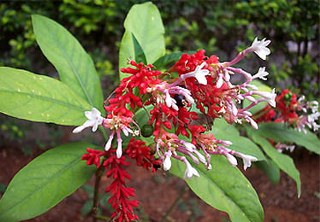
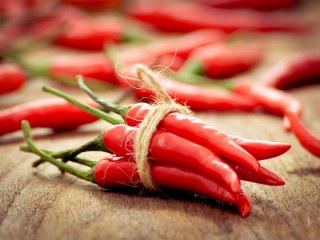


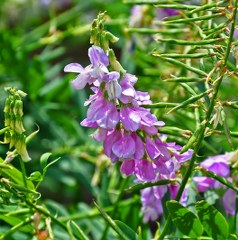





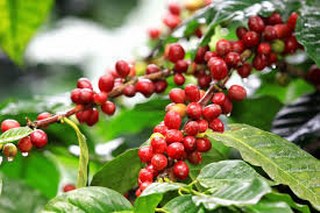






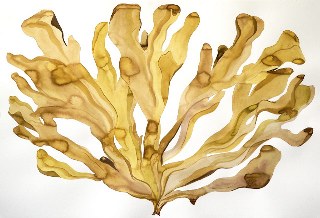






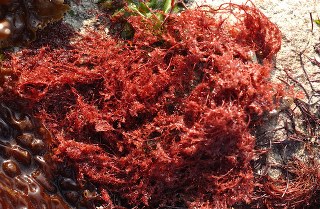






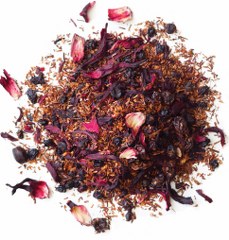







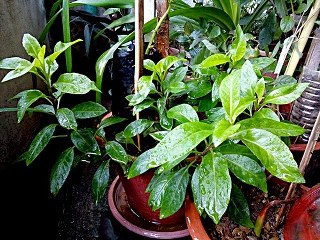






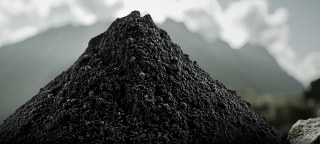






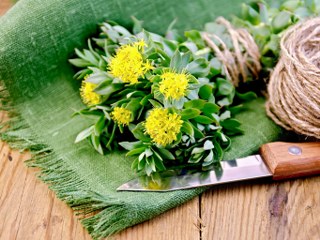


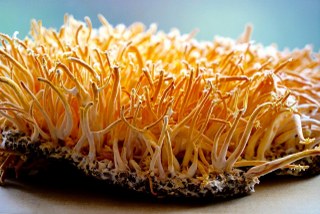






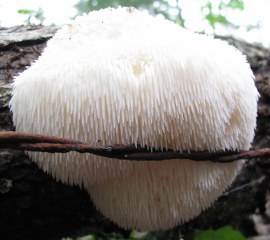









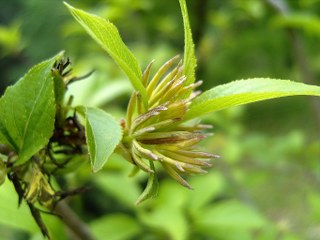










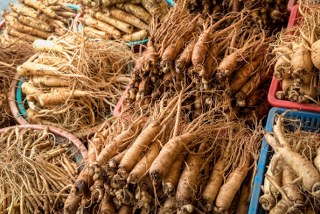

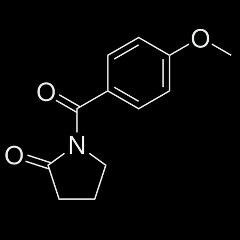




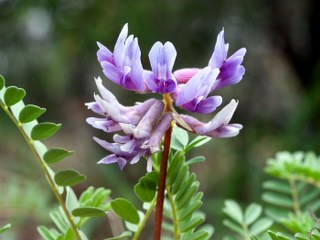
















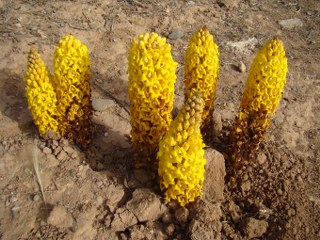










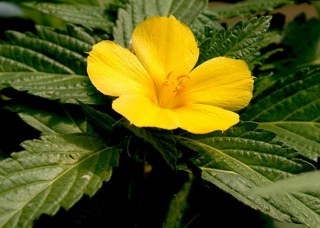


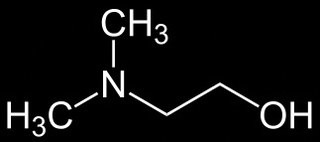
















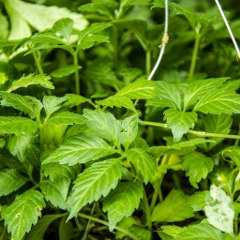





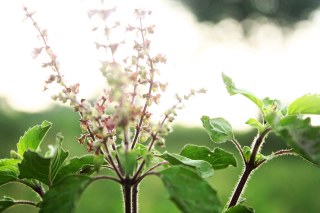




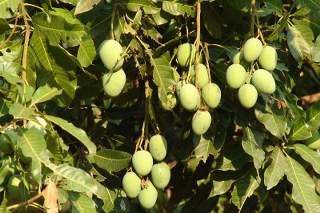
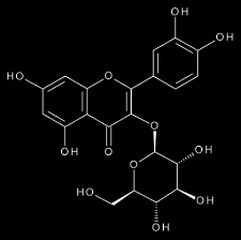




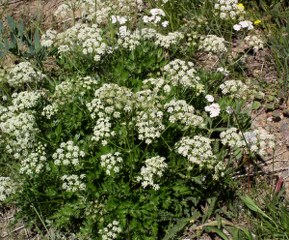


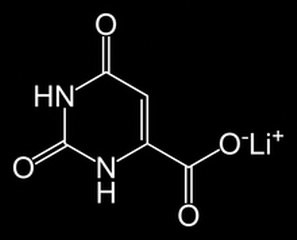






















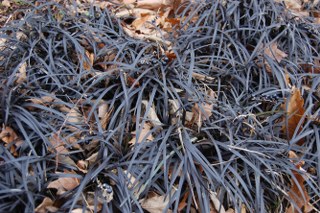



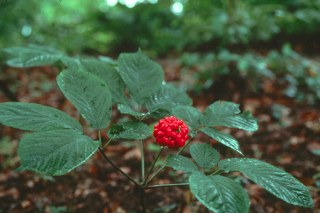













































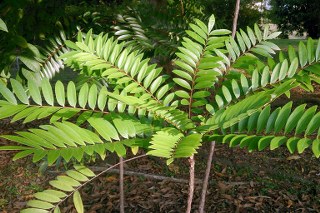
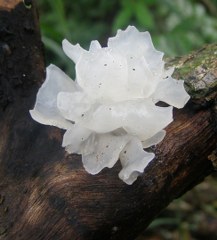



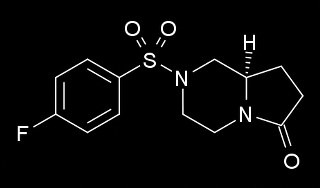






 Apple peel extract (malus domestica)
Apple peel extract (malus domestica)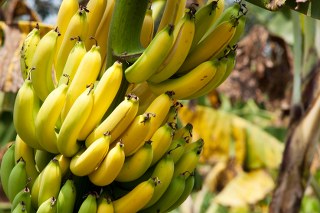 Banana peel (Musa Cavendish) extract
Banana peel (Musa Cavendish) extract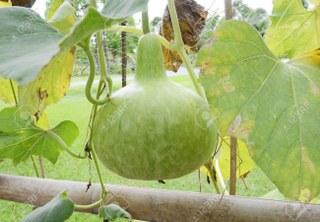 Benincasa hispida peel extract
Benincasa hispida peel extract Bitter Orange peel extract (Citrus aurantium)
Bitter Orange peel extract (Citrus aurantium) Blueberry peel extract
Blueberry peel extract ), hydroxyl radicals (
), hydroxyl radicals ( Camellia sinensis fruit peel extract
Camellia sinensis fruit peel extract
 Citrus clementina peel extract
Citrus clementina peel extract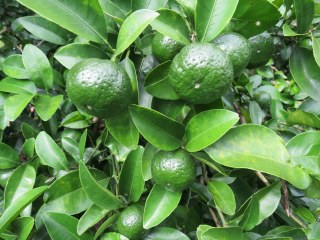
 Citrus medica L. cv Diamante peel extract (rutaceae)
Citrus medica L. cv Diamante peel extract (rutaceae)
 Cucurbita pepo FRUIT peel extract
Cucurbita pepo FRUIT peel extract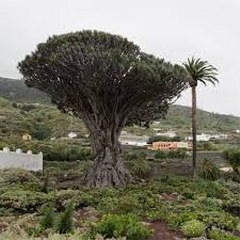 Dracaena cochinchinensis resin (dragons blood)
Dracaena cochinchinensis resin (dragons blood)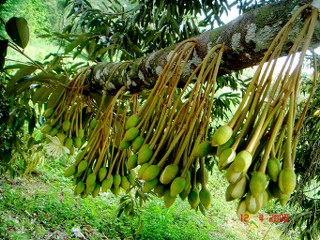 Durian (Durio zibethinus Murr.) peel extract
Durian (Durio zibethinus Murr.) peel extract Grapefruit peel extract (Citrus paradisi)
Grapefruit peel extract (Citrus paradisi)
 Huyou (Citrus changshanensis) fruit peel extract
Huyou (Citrus changshanensis) fruit peel extract Jujube (Ziziphus Jujuba Mill.) Fruit peel
Jujube (Ziziphus Jujuba Mill.) Fruit peel Kumquat (Fortunella margarita ) peel
Kumquat (Fortunella margarita ) peel Lagenaria siceraria peel extract
Lagenaria siceraria peel extract Lansium domesticum fruit peel extract
Lansium domesticum fruit peel extract Mango peel extract (Mangifera indica)
Mango peel extract (Mangifera indica)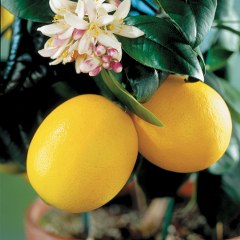 Meyer Lemon peel extract (Citrus × meyeri)
Meyer Lemon peel extract (Citrus × meyeri) Momordica charantia fruit peel extract
Momordica charantia fruit peel extract Okra (Abelmoschus esculentus (L.) Moench) peel
Okra (Abelmoschus esculentus (L.) Moench) peel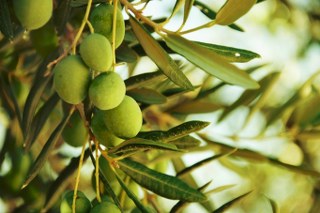 Olive leaf (Olea europaea)
Olive leaf (Olea europaea) Onion peel extract (Allium cepa)
Onion peel extract (Allium cepa) Pear peel extracts (Pyrus spp.)
Pear peel extracts (Pyrus spp.) Persimmon peel extract
Persimmon peel extract Petroselinum crispum extract
Petroselinum crispum extract
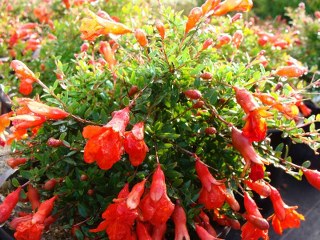 Pomegranate peel extract (Punica granatum )
Pomegranate peel extract (Punica granatum ) Potato Peel extract
Potato Peel extract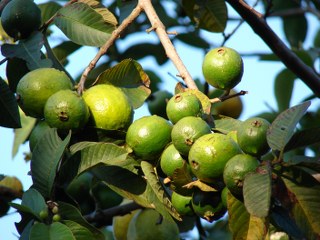 Psidium guajava raw fruit peel extract
Psidium guajava raw fruit peel extract Purple passion fruit peel extract
Purple passion fruit peel extract Quince (Cydonia oblonga Miller) peel extract
Quince (Cydonia oblonga Miller) peel extract Rambutan (Nephelium lappaceum L.) Peel Extract
Rambutan (Nephelium lappaceum L.) Peel Extract Satsuma Mandarin peel extract (CitruS unshiu)
Satsuma Mandarin peel extract (CitruS unshiu) Scutellaria laterifolia
Scutellaria laterifolia  Sweet Orange peel extract (Citrus sinensis)
Sweet Orange peel extract (Citrus sinensis) Syzygium cumini Skeels extract
Syzygium cumini Skeels extract Tomato (Solanum lycopersicum L.) peel extract
Tomato (Solanum lycopersicum L.) peel extract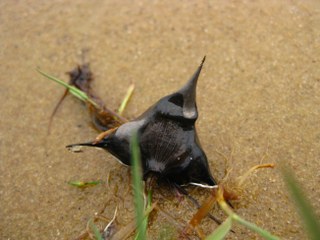 Trapa natans fruit peel extract
Trapa natans fruit peel extract Wampee (Clausena lansium (Lour.) Skeels) Peel extract
Wampee (Clausena lansium (Lour.) Skeels) Peel extract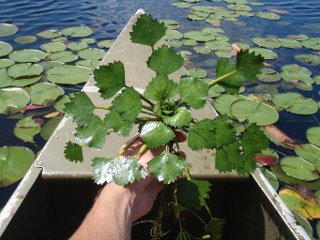
 Yam (Dioscorea alata) peel extract
Yam (Dioscorea alata) peel extract


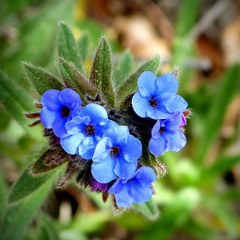
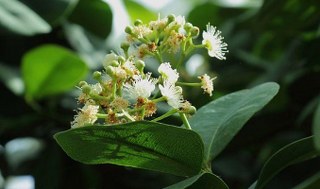



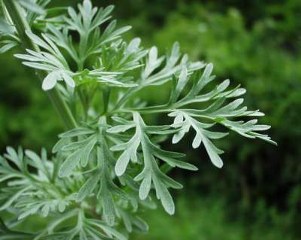

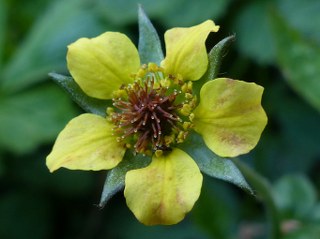






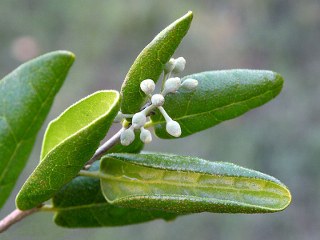

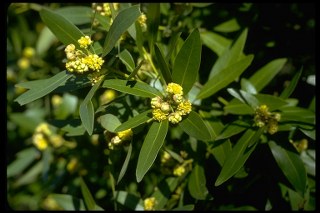











































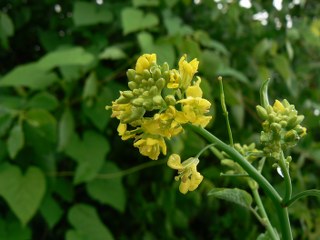





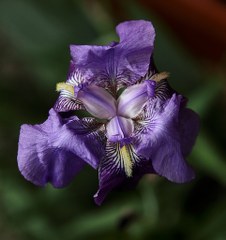











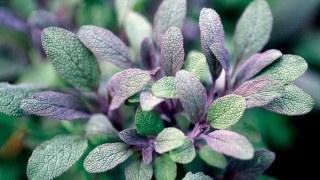













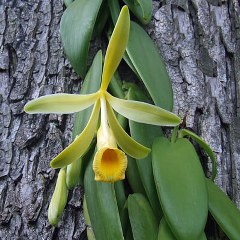















INTERSTELLAR BLEND –
“I am simply amazed! Patience is not my strong suit, and I have been searching for a way to release weight and inflammation – quickly and without feeling drained.
I found it with Gavin and Interstellar products. I purchased the Challenge Essential combo and I am getting ready to enter into a challenge period. Yet, just in getting ready for it my body is releasing fluids and inflammation. And I’m feeling more energy right away. I’m loving this downregulation in my body as I prepare for massive weight loss AND massive nutrition simultaneously.
I can’t wait to consume all of the other amazing products that are what I’ve been looking for, for years. Everyone needs to know about Interstellar and how to be in optimum health. The easy and fast way.
Fucking brilliant!”
⭐️⭐️⭐️⭐️⭐️
—Sophia Leva-Marie
Andre Buerger (verified owner) –
After contemplating for several months, I eventually opted for the Challenge Combo, which allowed me to sample a range of blends. Following a Lyme disease diagnosis in 2016, I delved into extensive research, studies, and supplement experimentation. It is no surprise that many of the ingredients in the blends are also present but in highly concentrated and varied forms. I have yet to encounter someone who has put as much effort and research into their products. This is truly an investment in one’s health.
The Challenge Combo is an ideal companion for those adopting a fasting lifestyle, as even a three-day dry fast becomes effortless. I am now entirely convinced of the benefits of these blends and intend to continue experimenting while conducting research. I strongly recommend reviewing Gavin’s posts on the Telegram group and website.